Ever since I started reading manga, I’ve loved stories that push boundaries and go beyond surface-level entertainment. While I still enjoy the high-energy rush of many modern shonen titles, I’ve always preferred seinen manga. These series explore mature themes, complex characters, morally ambiguous situations, and will stay on your mind long after you’ve turned the last page.
This list represents my personal selection of the best seinen manga I’ve ever read. Some stand out for their storytelling and characters, others for their stunning art, and others for how far they’re willing to go in subject matter or experimentation.
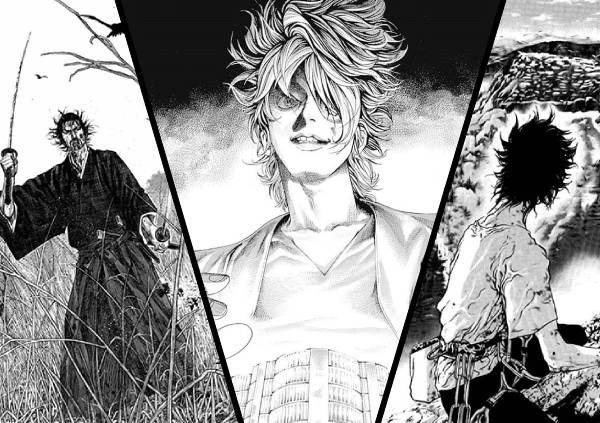
Manga is a broad and versatile medium. Here you’ll find quiet psychological breakdowns like Oyasumi Punpun, samurai epics such as Blade of the Immortal and Shigurui, sprawling historical dramas like Vinland Saga and Kingdom, gritty crime fiction like Sanctuary and Yamikin Ushijima-kun, and a few bizarre, genre-bending entries like Ultra Heaven. Yet all of them have left a powerful impression on me, and I can confidently recommend every single one.
A quick spoiler warning: I’ve tried to avoid major plot points in my reviews, but some details may be necessary.
With that said, here’s my updated and carefully curated list of the 51 best seinen manga of all time (last updated: September 2025).
51. Dead End
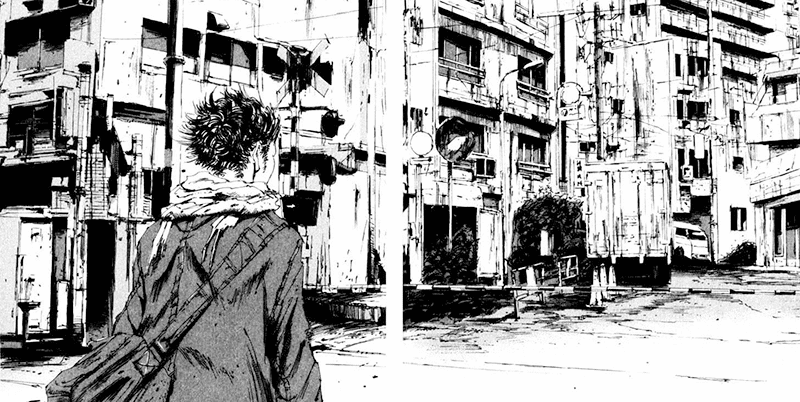
Manabe Shōhei is one of my all-time favorite mangaka, and Dead End is among his most distinctive works. While it’s one of his stranger, more outlandish series, it’s one I thoroughly enjoyed, and I consider one of the best seinen manga.
The story follows Shirou, a construction worker whose life changes forever when a mysterious naked girl named Lucy falls into his life. After introducing her to his friends, Shirou steps out briefly, only to return to a nightmare. Lucy has vanished, his friends have been slaughtered, and in the center of the carnage stands a mysterious man who saves him from an explosion and urges him to flee into the city’s sewers. From there, Shirou gathers a ragtag group of strange figures from his past to uncover what’s really happening.
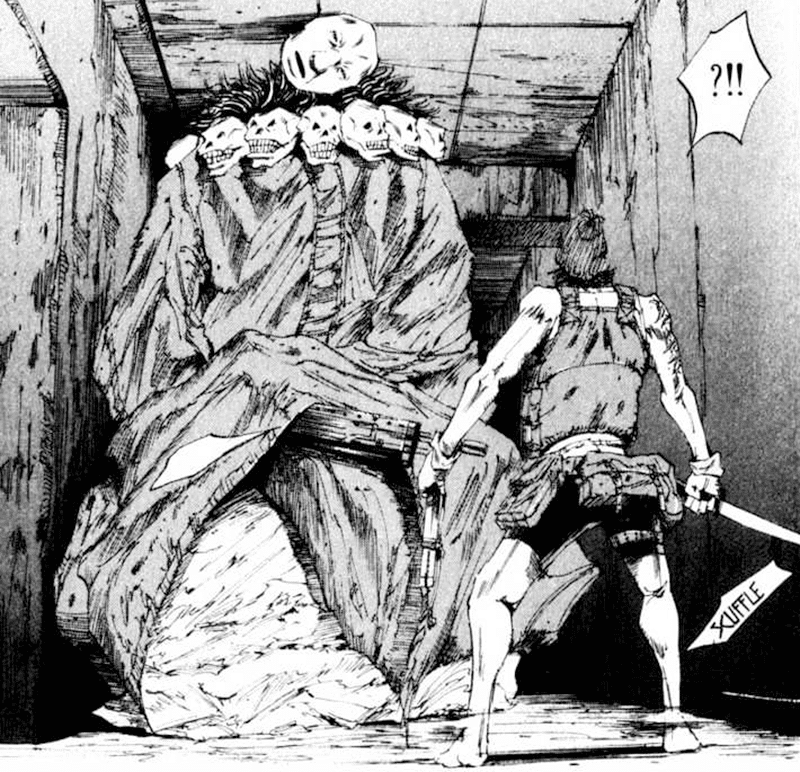
Dead End begins almost like a grounded thriller but gradually layers in more fantastical and surreal elements. This shift creates an increasingly weird, disorienting atmosphere that makes the series feel unlike anything else in the genre.
The characters are a major reason this manga stands out. Each of them feels rough-edged and vividly alive, and their unpredictable interactions push the story into fascinating territory. Manabe Shōhei’s art style also deserves special mention. His gritty backgrounds contrast with characters who are not only realistic but also less conventionally attractive than other manga leads. This unpolished realism is part of what gives Dead End such a unique aesthetic.
If you’re looking for a raw, gritty, and surreal thriller, Dead End is an unforgettable experience and a great way to start off this list of the best seinen manga.
Genres: Thriller, Supernatural
Status: Finished
50. Battle Royal
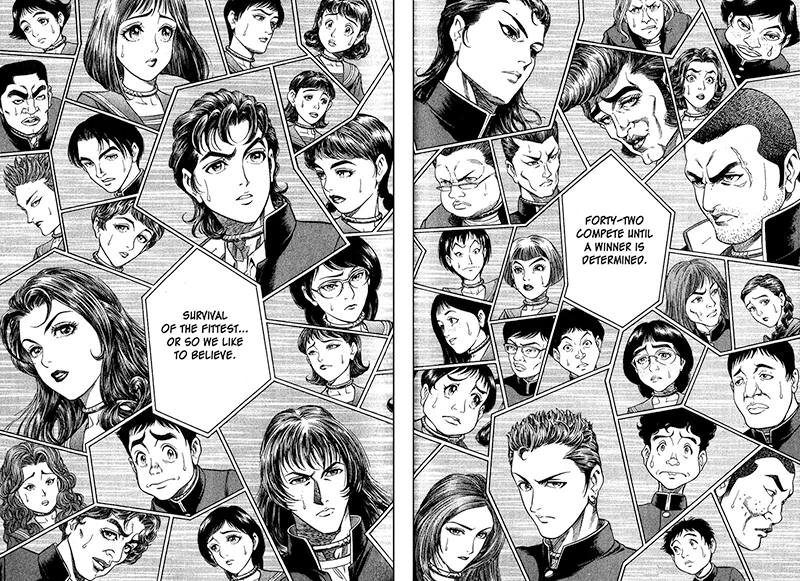
Battle Royale is one of my favorite movies of all time, so when I discovered the manga adaptation, I had to read it. While it’s not without flaws, it remains one of the most disturbing and best seinen manga of all time.
Written by Koushun Takami and illustrated by Masayuki Taguchi, the manga retells the original novel but spends far more time exploring each student’s backstory, motives, and relationships. It also introduces new scenes and heightens certain moments for maximum drama.
The premise is infamous: each year a class of junior high students is forced to partake in the government’s ‘Program,’ where they must fight to the death until only one survives. When Shuuya Nanahara’s class is chosen, he vows to find a way off the island without killing anyone. Yet survival under these rules seems impossible.
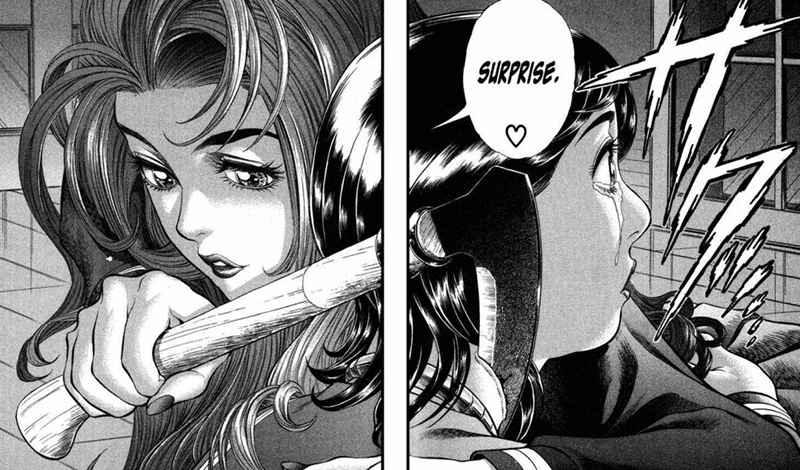
The series excels at showing how different personalities react under extreme pressure. Some students break down completely, some band together, and others embrace the bloodshed with chilling enthusiasm. This psychological variety adds depth to what could’ve otherwise been simple shock-value violence.
Taguchi’s artwork is brutal and unflinching, capturing gore and desperation in painstaking detail. At its best, the art amplifies the horror of the setting. At its worst, it veers into excess, especially with sexualized content and over-the-top action sequences. Likewise, the formula of introducing a character, revealing their backstory, and then killing them can feel repetitive. The manga’s biggest problem, however, is the character design. While all the characters are roughly the same age, some look as if they are elementary school students, others like they’re in their thirties. It can be rather distracting and occasionally break immersion.
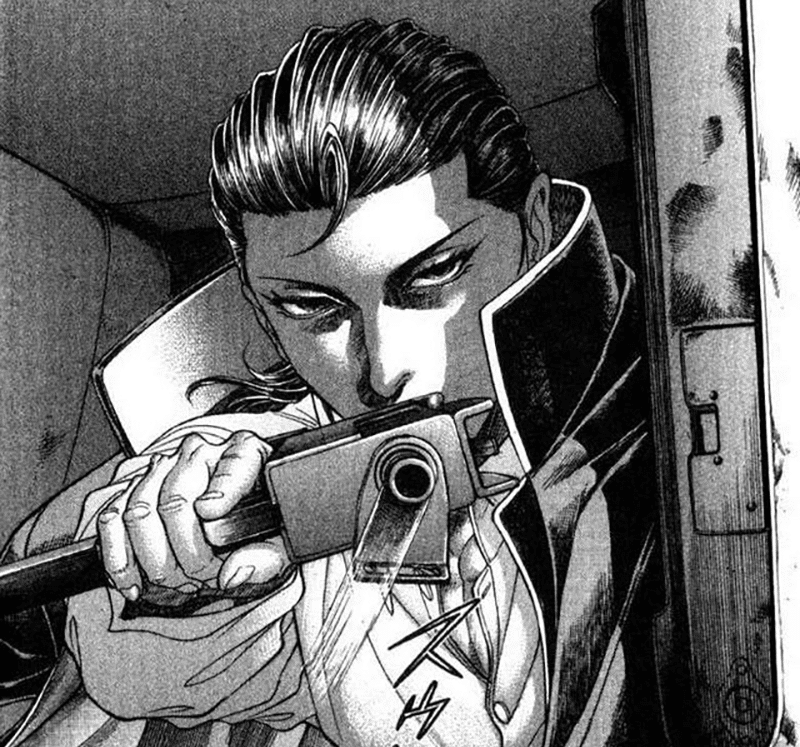
Still, these issues don’t harm the impact of Battle Royale. It remains a gritty, nihilistic, and most of all, unforgettable survival story. If you’re a fan of the film or novel or enjoy death games and kill-or-be-killed scenarios, this is one of the best seinen manga you can read.
Genres: Survival, Psychological Thriller
Status: Finished
49. Holyland
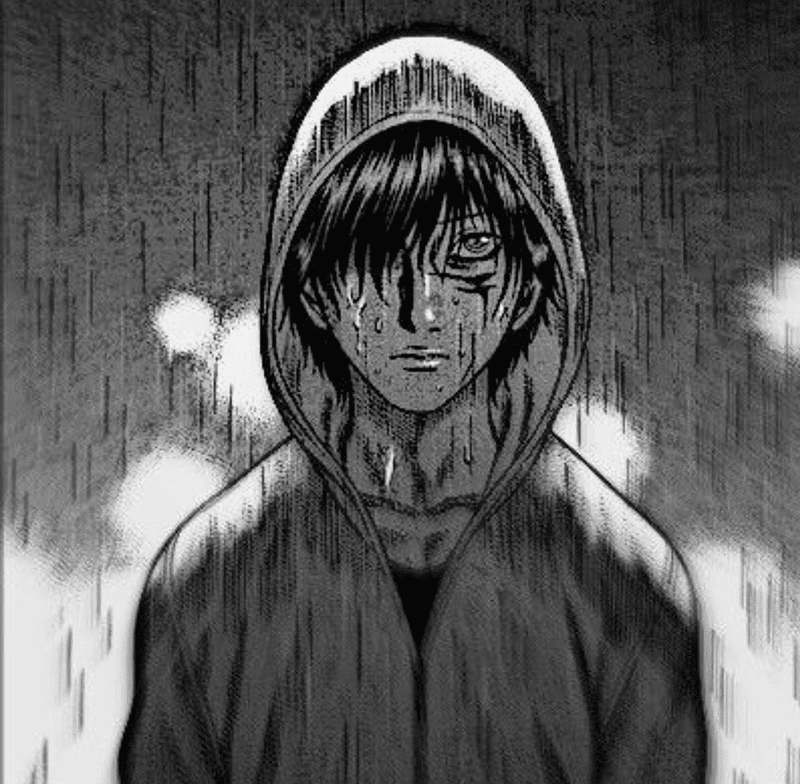
I stumbled upon Kouji Mori’s Holyland by chance, but I quickly realized it was one of the most authentic martial arts series I’d ever read. Raw, grounded, and emotionally charged, it’s easily among the best seinen manga for fans of street fighting and coming-of-age stories.
The series follows Yuu Kamishiro, a lonely teenager who doesn’t fit in at school and endures relentless bullying. Desperate to defend himself, he trains a single boxing punch to perfection. Eventually he ventures out into the streets to find his own Holyland, where he tests his skills against local thugs and gains a reputation as the feared thug hunter. But notoriety brings new challenges, and Yuu soon attracts the attention of other fighters who also exist on society’s fringes.
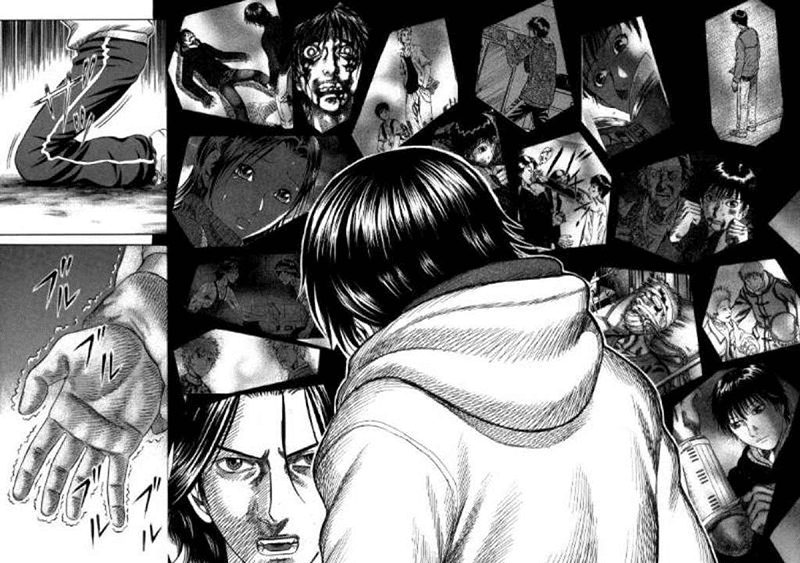
Holyland stands out for its realism. There are no superpowers or exaggerated techniques. Instead, every punch, hold, and counter has a basis in real fighting. This grounded approach extends to the characters, who feel nuanced and realistic. Yuu’s desperation to belong is palpable, and his friendships and rivalries are carefully developed, especially with standouts like Masaki Izawa and Shougo Midorikawa, who both have their own reasons for living outside the mainstream.
The series has flaws. The frequent insertion of technical explanations during fights can break the flow, and its character-driven narrative sometimes leads to repeating story bits. Yet these issues hardly diminish its emotional core.
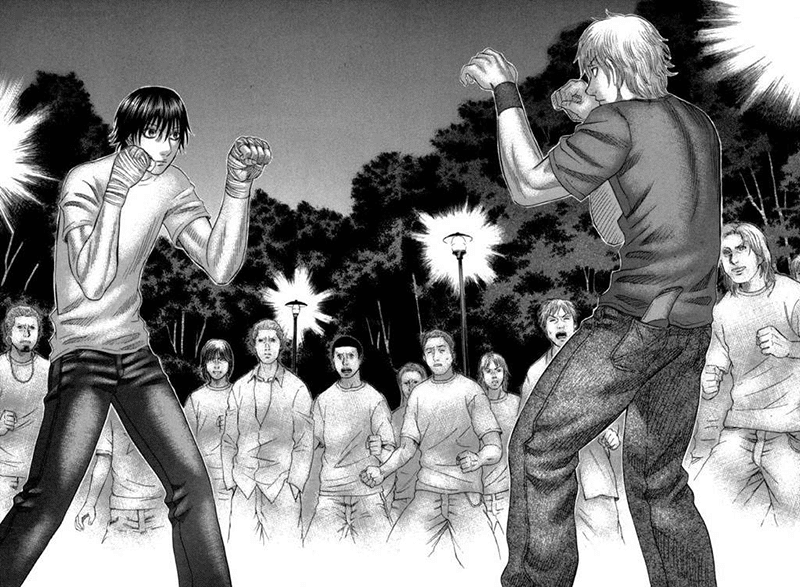
The art may feel old-fashioned at first, but it soon reveals its own charm, especially during fluid, meticulously rendered fight scenes. At its heart, Holyland is about the universal struggle to find a place in the world, a theme that makes it resonate far beyond its martial arts setting.
If you’re looking for a realistic, character-driven fight series, Holyland is one of the best seinen manga you can pick up.
Genres: Martial Arts, Coming-of-Age
Status: Finished
48. Tenkaichi
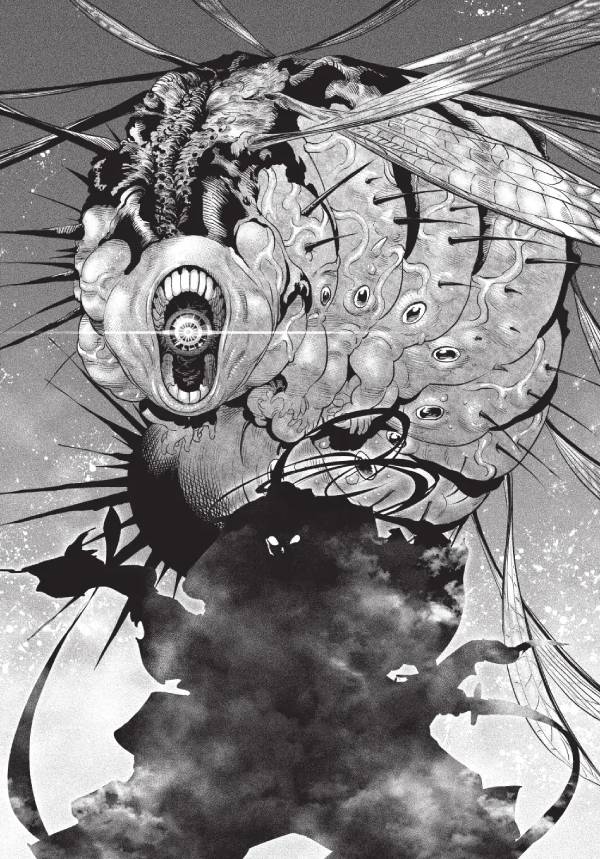
If you love high-stakes tournament manga, Tenkaichi is pure adrenaline. It taps into the same visceral excitement that makes fighting series like Record of Ragnarok addictive, but does so with a distinctly Japanese historical twist. It’s currently one of my favorite ongoing series, and easily among the best seinen manga if you’re looking for stylish battles rather than deep plot.
The premise is simple. The year is 1600, ten years after Oda Nobunaga unified Japan. Nearing the end of his life, Nobunaga announces a deadly tournament in which sixteen of the nation’s strongest warriors will fight to the death, and the winner’s master will gain control of the country. This thin narrative premise sets the stage for some of the most hyped, beautifully drawn battles in recent manga.
What makes Tenkaichi stand out is its roster of fighters. Each is based on a legendary historical figure. We get to see Miyamoto Musashi, Honda Tadakatsu, Fūma Kotarō, Sasaki Kojirō, and others, reimagined as larger-than-life martial artists. Seeing these iconic titans clash creates instant investment and gives the entire manga an almost mythical scale.
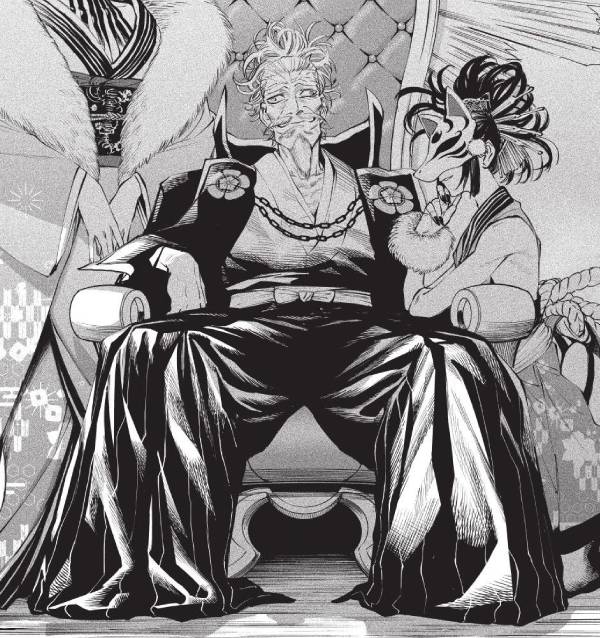
The art is simply breathtaking. Character designs are bold, choreography fluid, and panel layouts dramatic. Every strike, every new technique revealed, and the sheer spectacle of the fights makes each chapter a treat. Even though the story remains straightforward, the visual storytelling elevates it to something special.
That said, Tenkaichi isn’t pretending to be something it’s not. It’s a pure tournament manga, light on narrative depth and heavy on visual spectacle. Some readers may find the pacing or familiar tropes repetitive, but for fans of alternate history showdowns and over-the-top martial arts, this is exactly the point.
If you’re in the mood for brutal, gorgeous fights and legendary matchups, Tenkaichi deserves a place on the list of the best seinen manga to read right now.
Genres: Action, Historical, Samurai, Martial Arts
Status: Ongoing
47. I Am a Hero
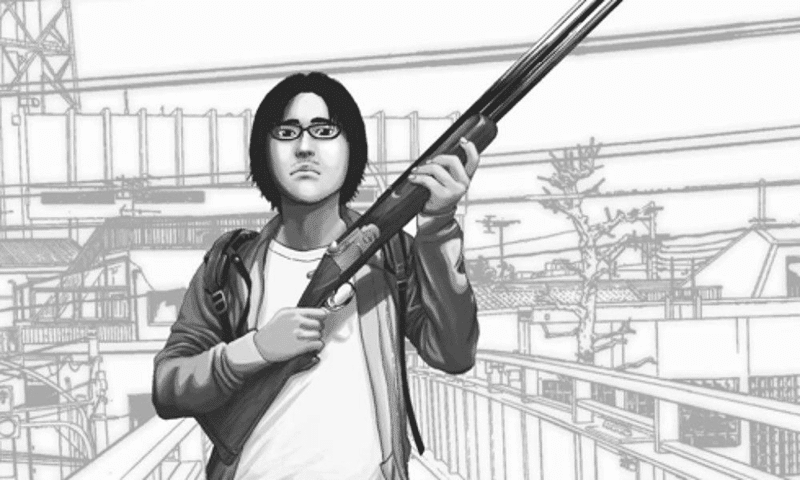
If there’s one manga that redefined the zombie genre in Japan, it’s I Am a Hero by Kengo Hanazawa. Often hailed as the definitive zombie manga, it blends psychological realism, grotesque body horror, and a bleak apocalyptic vision into something far more unsettling than a typical survival story. It’s easily one of the best seinen manga for fans of horror and psychological tension.
At its center is Hideo Suzuki, a struggling 35-year-old manga assistant whose life is marked by hallucinations, paranoia, and isolation. When a mysterious infection spreads across Tokyo, Hideo faces not only the collapse of society but also his own grip on reality. Watching such an unstable, insecure man stumble through the end of the world gives the series an unusually intimate and unpredictable tone.
The infected in I Am a Hero are unlike any others. They begin as eerily lifelike corpses, muttering their final thoughts, but quickly mutate into distorted, evolving abominations. Some tower over cityscapes, while others fuse together into horrifying hive-minds. This grotesque escalation of forms makes the manga’s body horror unforgettable.
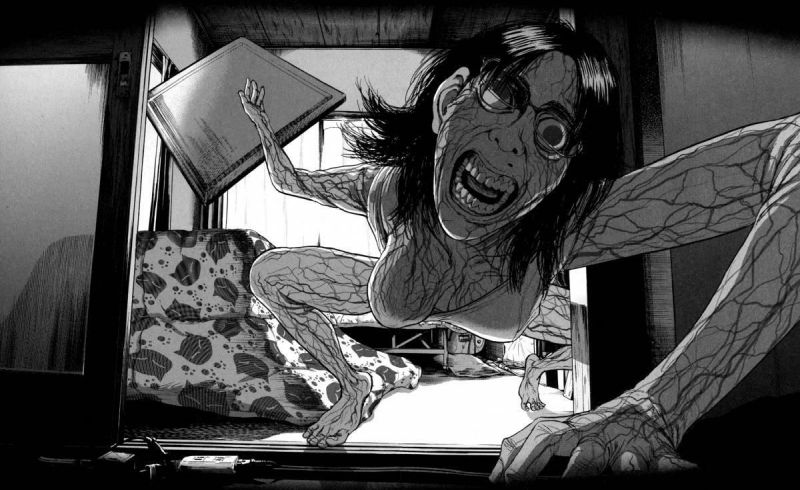
Hanazawa’s artwork is another major strength. His detailed backgrounds give the manga a chillingly realistic feel, while his close-up panels of faces and anatomy give the violence a visceral punch. Combined with slow-burn pacing and frequent moments of quiet dread, the manga achieves a level of immersion rarely seen in the genre.
While the middle arcs introduce other perspectives with mixed results, and the controversial ending left many readers divided, the overall journey remains one of the most ambitious, disturbing, and personal portrayals of an outbreak ever drawn. Beneath the gore, I Am a Hero also critiques social alienation, media hysteria, and the fragility of modern life through the eyes of a profoundly unreliable narrator.
For readers seeking a grounded, yet surreal apocalypse, I Am a Hero isn’t just another zombie story; it’s one of the best seinen manga and a landmark in horror manga.
Genres: Horror, Thriller, Zombies, Survival, Psychological
Status: Finished
46. Green Blood
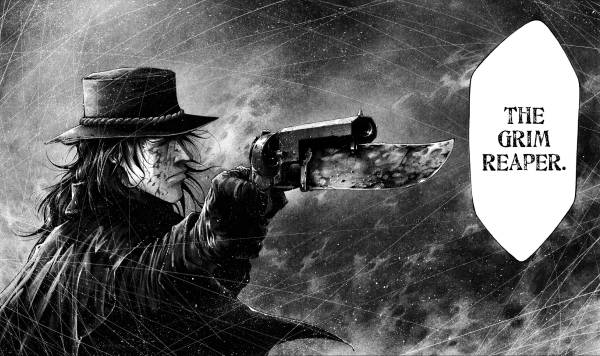
Green Blood by Masasumi Kakizaki is a rare, hard-boiled crime saga set in one of the darkest corners of American history. Taking place in New York’s infamous Five Points district during the post-Civil War industrial boom, the manga fuses Western-noir atmosphere with explosive action. It’s one of the best seinen manga for readers craving a gritty, cinematic story far removed from typical Japanese settings.
The plot follows two brothers, Brad and Luke Burns, who grew up in poverty and violence. Luke dreams of escaping the slums and building a decent life, while Brad hides a deadly secret. He’s the Grim Reaper, an assassin for the Grave Digger gang. Their conflicting paths unfold against a backdrop of mob corruption, immigrant struggle, and the brutal realities of 19th-century New York.
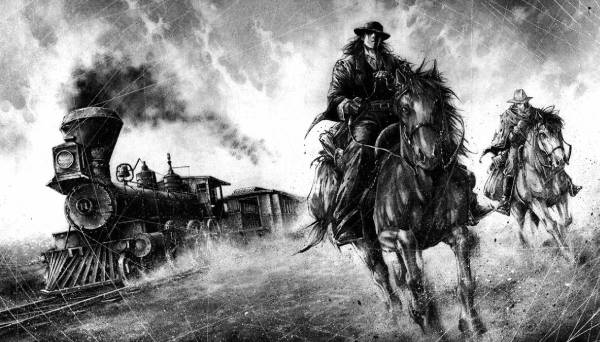
What sets Green Blood apart is its striking artwork. Kakizaki’s linework is intricate and heavily shaded, evoking old Western comics and gangster films. Detailed period costumes, authentic weapons, and sprawling cityscapes create an immersive world. Every gunfight feels choreographed like a movie sequence, and the violence lands with shocking impact.
Despite its straightforward gangland revenge framework, the manga digs into themes of brotherhood, betrayal, and the American Dream gone sour. Brad and Luke’s dynamic, especially in the later parts of the manga, adds emotional weight, making their story more than just another shootout. Historical details such as the Dead Rabbits Riot help ground the series in a recognizable, if heightened, reality.
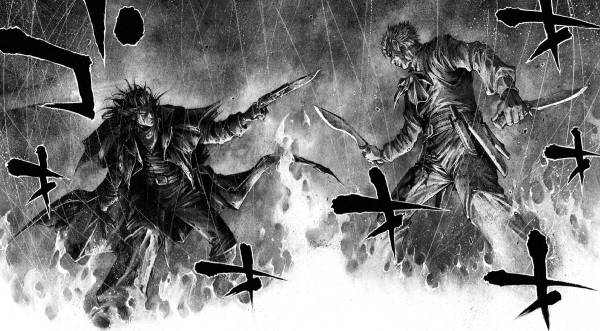
Green Blood isn’t perfect. Secondary characters are thinly sketched, it leans on familiar tropes, and it ends sooner than it should. Even so, it’s a consistently thrilling ride.
The atmosphere, pacing, and sheer craftsmanship of the visuals make it an unforgettable experience.
For readers interested in a violent, stylish crime drama with a western twist, Green Blood stands as one of the best seinen manga you can pick up, offering a glimpse of America’s underworld through the eyes of a Japanese artist at the top of his game.
Genres: Historical, Action, Crime, Drama
Status: Finished
45. Hellsing

Who doesn’t know Hellsing? Thanks to its iconic anime adaptations and cult reputation, Kōta Hirano’s vampire epic is one of the most recognizable names in manga. Yet even today, the original series remains a rush of stylish, over-the-top supernatural warfare that cements it as one of the best seinen manga for pure action and spectacle.
The story centers on Alucard, an immortal vampire who serves the secret Hellsing Organization, which stands as Britain’s first line of defense against supernatural threats. Alongside his stoic master Integra Hellsing and newly turned partner Seras Victoria, Alucard unleashes unstoppable carnage on ghouls, fanatics, and rival vampires. Their deadliest adversaries arrive in the form of Millennium, a Nazi vampire army intent on plunging the world into chaos.
Unlike other slow-burn vampire horror, Hellsing thrives on maximal energy. Alucard himself is less of a brooding antihero than a gleeful, gun-blazing executioner. Every supporting character, from the zealous priest Alexander Anderson to the cigar-chomping Major, feels like an exaggerated archetype, pushing the series into Grindhouse territory.
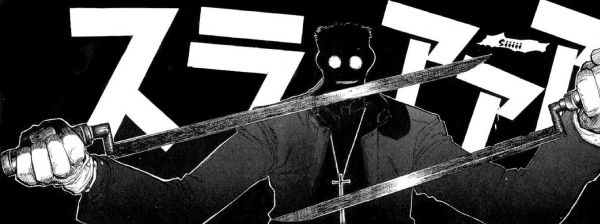
The action scenes are relentless and inventive. Gunfights, bayonets, familiars, and shape-shifters collide in set pieces that resemble high-octane action movies. Yet amid the chaos, Hirano’s sense of style keeps everything coherent. His thick black linework, sharp backgrounds, and bold paneling grow more confident with each volume, reaching a signature look by the series’ midpoint.
What makes Hellsing endure is its refusal to compromise on tone. It’s not subtle, and it’s certainly not delicate. Instead, it’s a work full of stylish characters, grotesque enemies, and apocalyptic stakes.
If you’re looking for deep psychological horror, you’re better off looking elsewhere. But if you want a supernatural series full of monsters, Nazi vampires, and one of the most unstoppable antiheroes ever drawn, Hellsing delivers. Decades later, it still stands as one of the best seinen manga for readers who crave high-octane chaos.
Genres: Horror, Action, Supernatural, Vampire
Status: Finished
44. One Punch Man
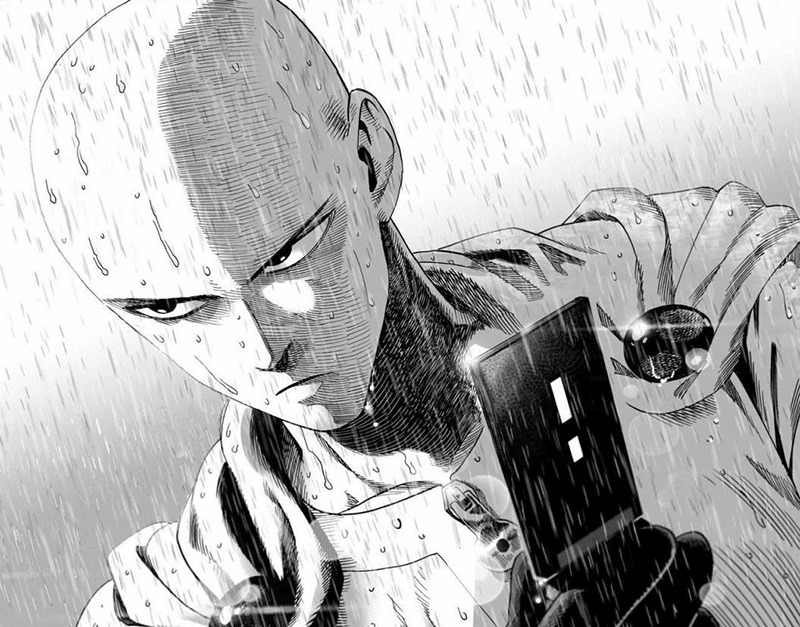
Few series blend absurd comedy and jaw-dropping action like One Punch Man. Created by ONE and drawn by Yusuke Murata, this manga takes a single ridiculous premise and transforms it into one of the best seinen manga experiences for readers who crave both laughs and spectacle.
The story revolves around Saitama, an unassuming man who trains himself to unimaginable strength and joins the Hero Association. Yet his unbeatable power leaves him bored and yearning for a challenge. While the gag of him defeating any enemy with one punch could have worn thin, the manga cleverly shifts focus to its vast supporting cast, creating intricate storylines in which Saitama is often absent until the climax. This contrast builds tension, hype, and humor all at once.
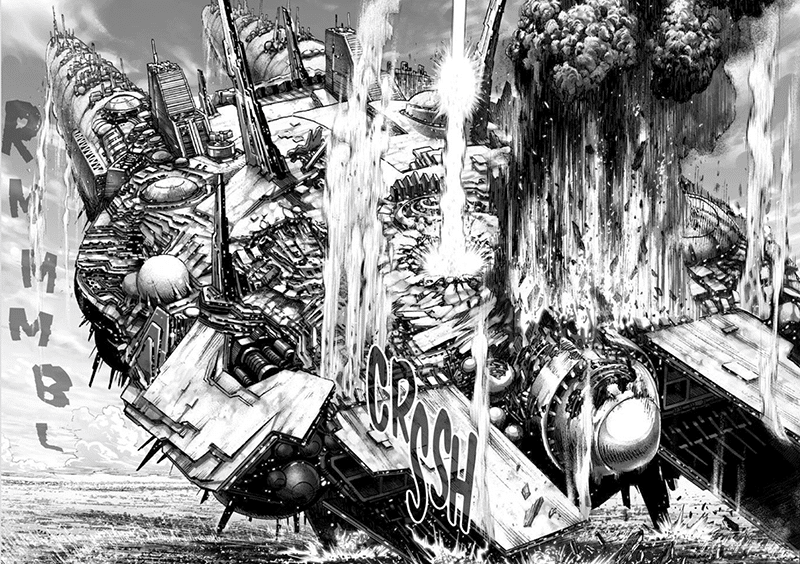
The art is nothing short of world-class. Murata’s monster designs, fight choreography, and page spreads rival anything in the medium. Battles like the Monster Association arc showcase massive stakes, multi-character clashes, and some of the most fluid, cinematic panels in modern manga. Even side characters such as Garou and King shine with memorable personalities and arcs that make the world feel rich beyond its central gag.
One unique quirk of One Punch Man is Murata’s perfectionism. He has been known to redraw chapters, fights, and even entire arcs multiple times to reach his desired quality. While this leads to breathtaking visuals, it has also slowed down release schedules, especially in recent arcs, frustrating fans. Still, when One Punch Man gets going, no other action-comedy comes close.
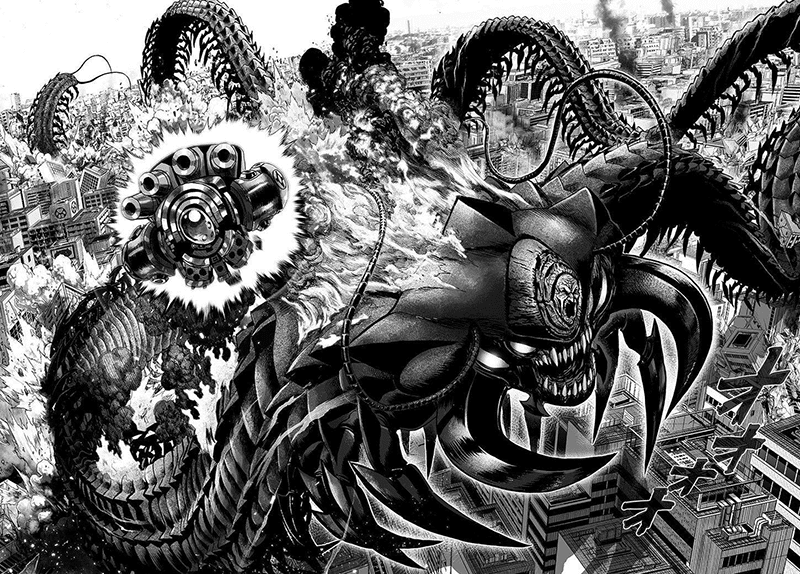
At its best, One Punch Man is a masterclass in timing: Saitama’s deadpan reactions, his plain appearance, and his casual one-hit finishes provide the punchline to sprawling, over-the-top battles.
Whether you’re here for insane fights, silly humor, or just to see a bald guy obliterate kaiju-sized monsters, One Punch Man remains one of the best seinen manga and a great example of action-comedy storytelling done right.
Genres: Action, Comedy, Superhero
Status: Ongoing
43. 6000
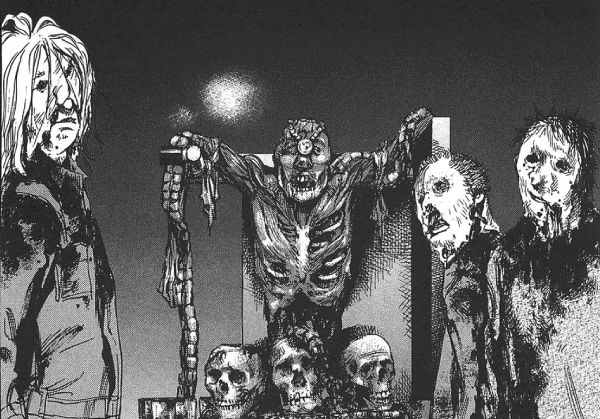
Few manga capture deep-sea dread as effectively as 6000 by Nokuto Koike. Set six kilometers below the ocean’s surface, this short but unforgettable series drops readers into an isolated undersea station where reality itself buckles. Equal parts psychological breakdown and cosmic nightmare, it’s one of the best seinen manga for fans of claustrophobic horror.
The plot follows a group of engineers and specialists sent to restart an abandoned research facility after a string of mysterious accidents. From the moment they descend, things feel wrong. Strange figures appear in corridors, and hallucinations blur the line between what’s real and imagined. What begins as a technical recovery mission quickly devolves into a fight to stay sane and survive whatever is lurking in the depths.
Visually, 6000 is oppressive. Koike’s scratchy, high-contrast artwork saturates the panels in black ink, making corridors feel endless and suffocating.
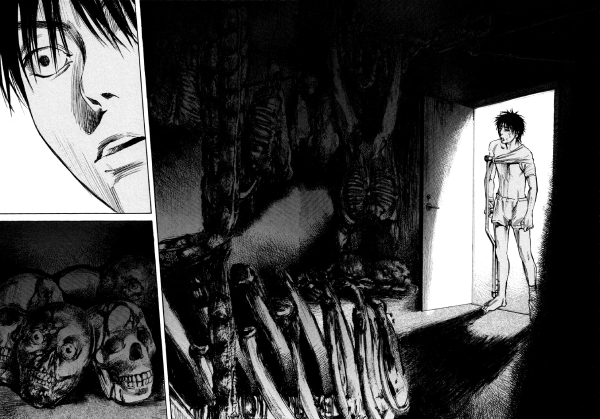
The underwater setting is full of creaking metal and shifting shadows that make the characters’ unease almost palpable. When the horror arrives, it’s truly grotesque: bloated bodies, strange rituals, and a monstrous entity straight out of a Lovecraftian story.
One of the manga’s boldest choices is its reliance on visual storytelling. Panel transitions are jarring, scenes overlap, and key moments unfold with little exposition. This disorientation mirrors the characters’ mental state, but it also makes the series a challenging read.
While 6000 is thin on character depth and its narrative can feel fragmented, as an experience it’s powerful. It’s not just about jump scares or gore; it’s about the crushing enormity of the unknown and how isolation erodes the human mind. For anyone drawn to deep-sea mysteries, cosmic horror, or psychologically intense settings, 6000 is an overlooked gem and one of the best seinen manga to read.
Genres: Horror, Psychological, Survival, Cosmic Horror
Status: Finished
42. Made in Abyss
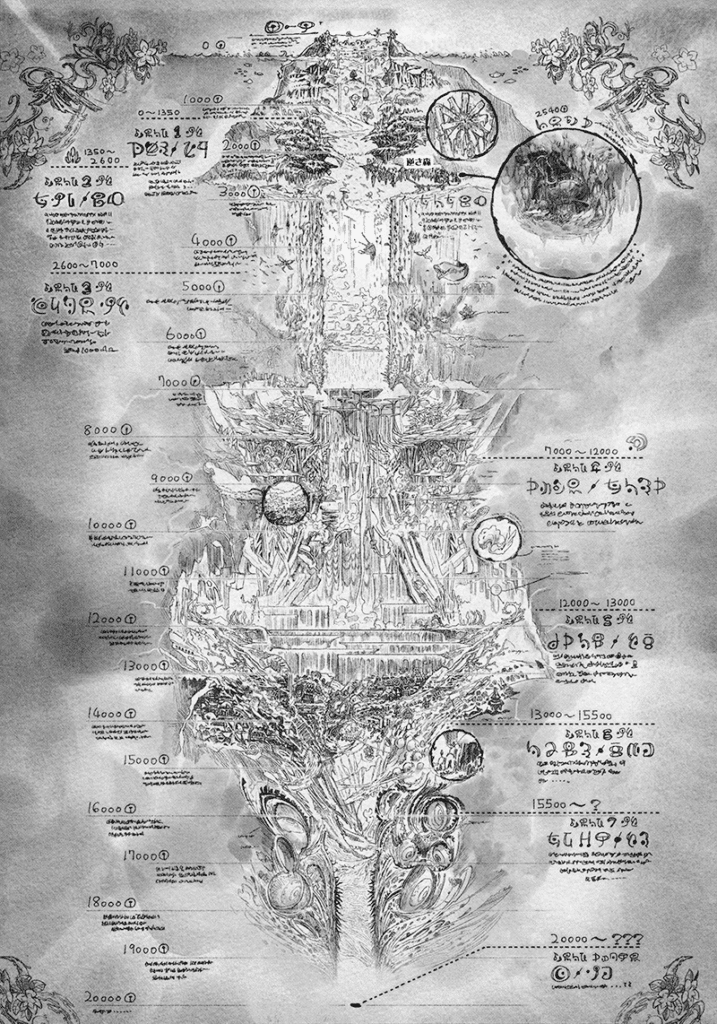
Some manga hook you with gripping characters, others with intricate plots, but Made in Abyss by Akihito Tsukushi captivates through sheer worldbuilding. The titular Abyss is one of the most breathtaking, terrifying settings ever drawn, making this series one of the best seinen manga for readers who love immersive environments.
The story follows Riko, a young orphan living in Orth, a city built around a colossal vertical chasm known as the Abyss. Her mother, a legendary cave raider, disappeared below, and Riko dreams of following in her footsteps. When she discovers a mysterious robot boy named Reg during an expedition, she believes it’s a sign somehow connected to her mother. Together, they begin a perilous descent into the Abyss, a journey where each layer reveals stranger creatures, deadlier hazards, and increasingly surreal phenomena.
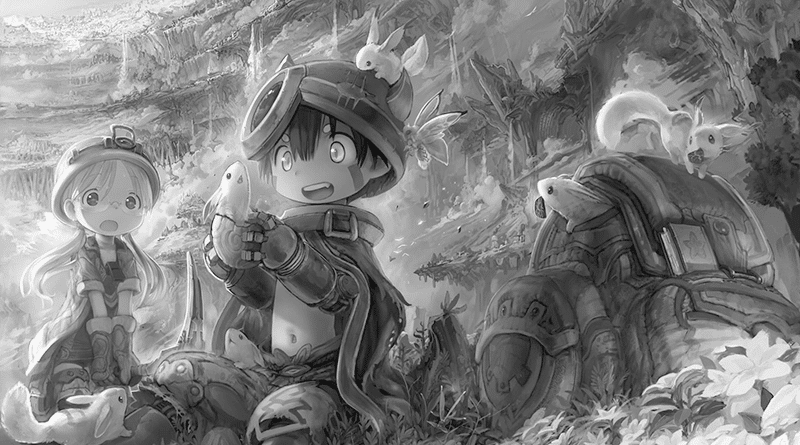
Artistically, Made in Abyss is stunning. Tsukushi’s delicate, hyper-detailed art contrasts childlike character designs with sprawling alien vistas. Each page conveys wonder and menace in equal measure, capturing bizarre wildlife, ancient ruins, and the infamous Curse of the Abyss, a supernatural affliction that makes ascending far more dangerous than descending.
What begins as an almost whimsical adventure gradually becomes something darker and more unsettling. Graphic injuries, psychological trauma, and grotesque creatures also lurk beneath the surface, and the further Riko and Reg descend, the more the manga reveals its true horror-infused nature. This tonal shift gives the series its power; it’s a beautiful and horrifying tale of curiosity, sacrifice, and the cost of discovery.
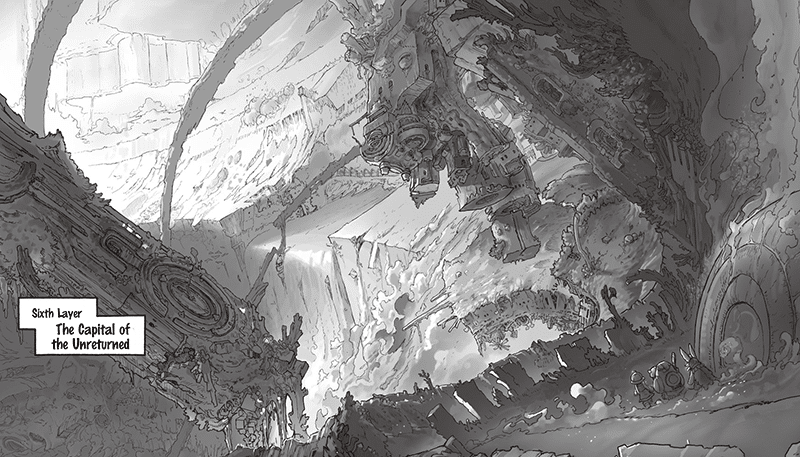
Some readers may find the protagonists’ young ages off-putting, particularly given the violent and disturbing themes. Whether this contrast is meant to highlight the innocence of exploration or create dramatic dissonance remains open to interpretation. Regardless, the worldbuilding is so rich, and the narrative stakes so high, that it’s easy to be swept up in the descent.
For anyone drawn to strange worlds, emotional adventures, and the thrill of uncovering the unknown, Made in Abyss remains one of the best seinen manga out there. It’s a gorgeous, haunting journey that will linger with you long after you finish reading.
Genres: Dark Fantasy, Adventure, Sci-Fi
Status: Ongoing
41. Fraction
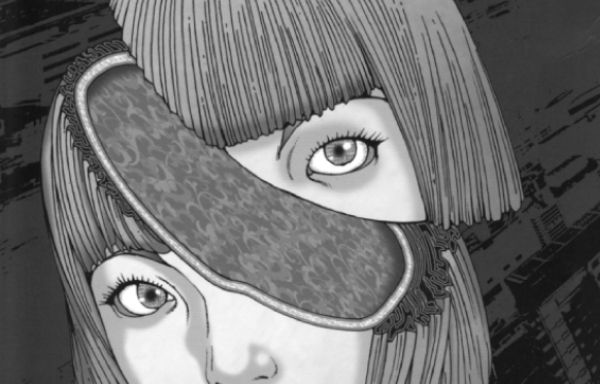
Even within Shintaro Kago’s outrageous body of work, Fraction stands out as something special. Known as the master of the erotic grotesque and absurd surrealism, Kago usually creates short, shocking vignettes. Here, however, he delivers a full-length manga that begins as a grim thriller and mutates into one of the strangest, most self-aware stories in the medium. For fans of experimental horror, it’s one of the best seinen manga you can experience.
The opening chapters follow the Slicing Devil, a sadistic serial killer who murders victims by slicing them perfectly in half. Initially, it reads like a brutal crime story, full of gritty art, twisted crime scenes, and a sense of creeping dread. Then, almost without warning, Kago tears the narrative apart. He inserts himself as a character, dissects the medium, and begins explaining genre tropes and authorial decisions to the reader. What started as a murder mystery transforms into a bizarre meta-commentary on storytelling itself.
The shift culminates in a jaw-dropping twist that reframes everything you’ve read so far. It’s one of those rare moments where form and content collide and you can only sit back in awe. From here, the manga dives headfirst into Kago’s trademark absurdity.
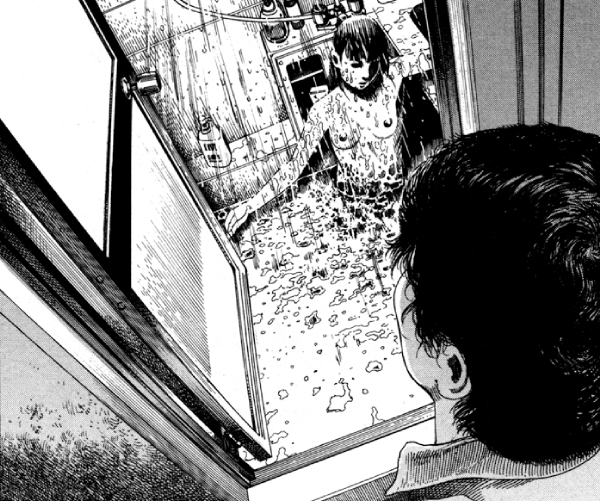
Fraction also includes several short bonus stories, each exploring body horror and taboo-breaking ideas. Voracious Itches is particularly infamous for its revolting premise and execution, and it still lingers on my mind years after I first read it.
Like much of Kago’s work, Fraction is not for everyone. It’s graphic, transgressive, and structurally chaotic. But it’s also astonishingly inventive. Few manga challenge the medium’s boundaries this directly, weaving narrative experimentation into a serial killer plot that becomes a commentary on itself.
If you’re intrigued by surreal horror, meta-narratives, and can stomach extreme content, Fraction is a singular experience and one of the best seinen manga for readers who want to see just how far the form can be pushed.
Genres: Horror, Mystery, Psychological, Meta
Status: Finished
40. Tokyo Ghoul
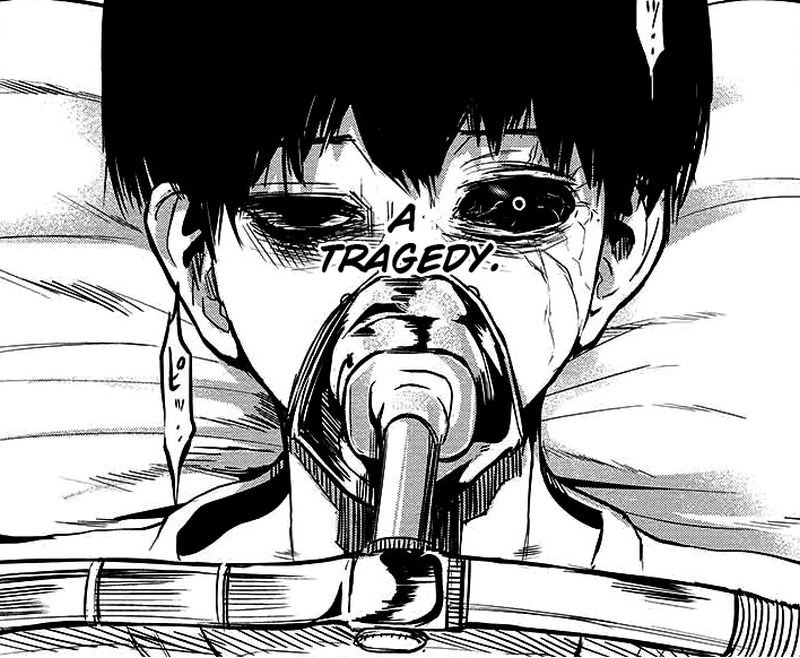
Few series have blended action and urban horror as successfully as Tokyo Ghoul by Sui Ishida. Hugely influential and internationally popular, it stands as one of the best seinen manga of the last decade for readers who want high-octane battles mixed with tragedy and ambiguity.
Tokyo Ghoul is set in a world not unlike ours, but in which ghouls, predators feeding on human flesh, hide among the population. At the story’s center is Ken Kaneki, an introverted college student whose life is turned upside down after a date with the mysterious Rize leads to a freak accident and an organ transplant that makes him half-ghoul. Now caught between human and monster, Kaneki must navigate the hidden world of ghouls and the relentless CCG investigators sworn to destroy them.
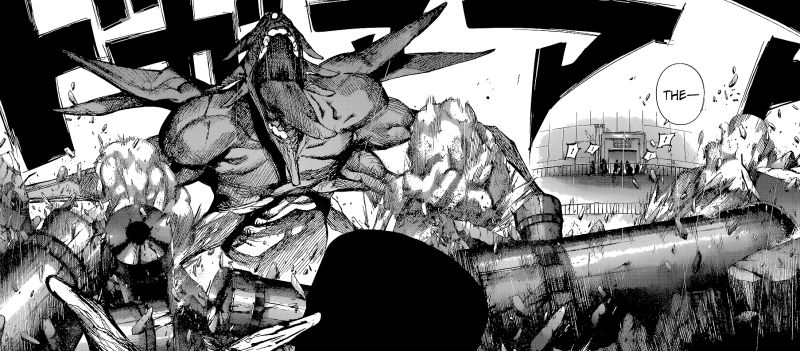
Early chapters focus on Kaneki’s disorientation and gradual acceptance of his new identity. Anteiku Café serves as both a sanctuary and a window into ghoul society, introducing characters whose lives are far more complex than simple villainy. As the story expands, rival factions, experimental procedures, and deadly investigators that escalate the conflict into large-scale battles that blur the line between heroes and villains.
Ishida’s artwork gives the series its distinct personality. Heavy inks, fluid linework, and the elaborate design of the ghouls’ weapons known as Kagune create a visceral, nightmarish atmosphere. Whether it’s the stunning cityscapes or the intricately choreographed fights, the manga feels both stylish and oppressive. This visual energy reaches even greater heights in Tokyo Ghoul:re, though its larger cast and more chaotic battles can sometimes be hard to follow.
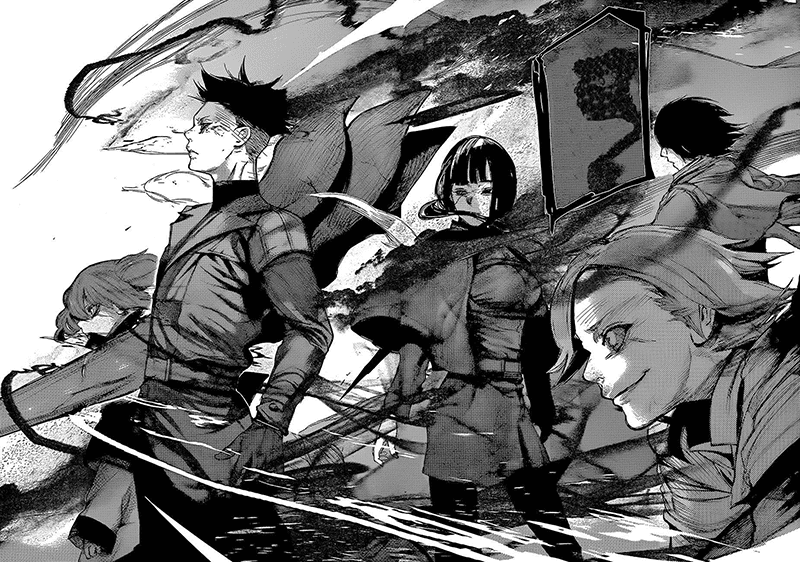
Thematically, Tokyo Ghoul thrives on duality. Themes of human versus ghoul, predator versus victim, and identity versus survival are front and center here. Not every character lands, though, and the repeated use of tragic backstories can dull their impact. Kaneki himself shifts dramatically from meek student to tortured antihero, a transformation that’s divisive but undeniably memorable.
Despite its flaws, Tokyo Ghoul remains a landmark series. Its mix of horror, action, and moral complexity makes it a gripping read for anyone interested in darker manga worlds. With its unforgettable art, inventive fights, and constant tension between humanity and monstrosity, Tokyo Ghoul more than earns its place as one of the best seinen manga.
Genres: Horror, Action, Mystery, Tragedy
Status: Finished
39. Blood on the Tracks
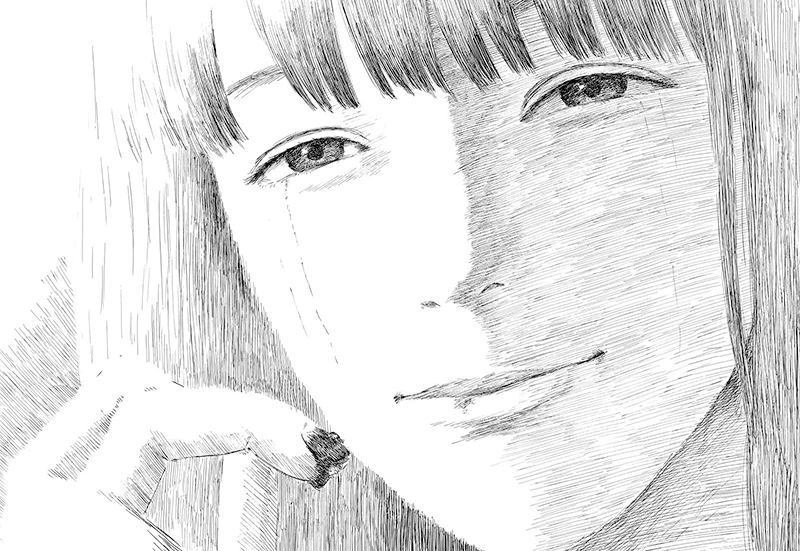
Shūzō Oshimi’s Blood on the Tracks is one of the most unsettling and engrossing psychological manga of recent years. Rather than leaning on action or mystery, it dissects family, manipulation, and trauma with a slow, suffocating intensity that cements it as one of the best seinen manga for fans of dark, character-driven storytelling.
The series follows Seiichi Osabe, a quiet middle-school boy whose life is tightly controlled by his overprotective mother, Seiko. At first, her behavior seems quirky and smothering, but mostly benign. That is, until a single shocking event changes everything. From that moment, the manga spirals into an increasingly disturbing exploration of control, guilt, and psychological damage.
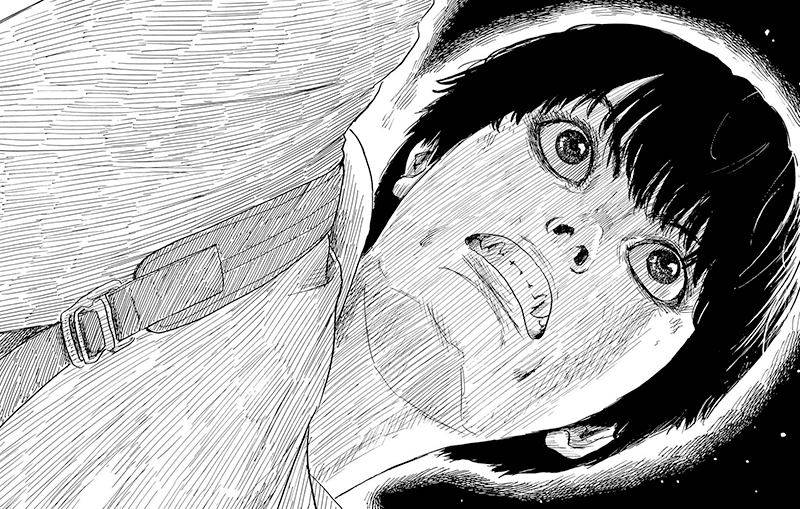
What makes Blood on the Tracks unique is its pacing. Oshimi deliberately slows down key moments, sometimes dedicating entire chapters to a single interaction or expression. This creates a sense of claustrophobia and unbearable tension. Every glance and every pause feel loaded with menace. As readers, we’re placed directly into Seiichi’s perspective, sharing his confusion, dread, and emotional paralysis.
Oshimi’s artwork amplifies this effect. His paneling is restrained yet powerful, focusing on faces and subtle body language rather than overt action. Sparse backgrounds and lingering close-ups create an almost cinematic feel, while sudden wide panels hit like a punch. Even during moments of quiet, the visual storytelling keeps you on edge.
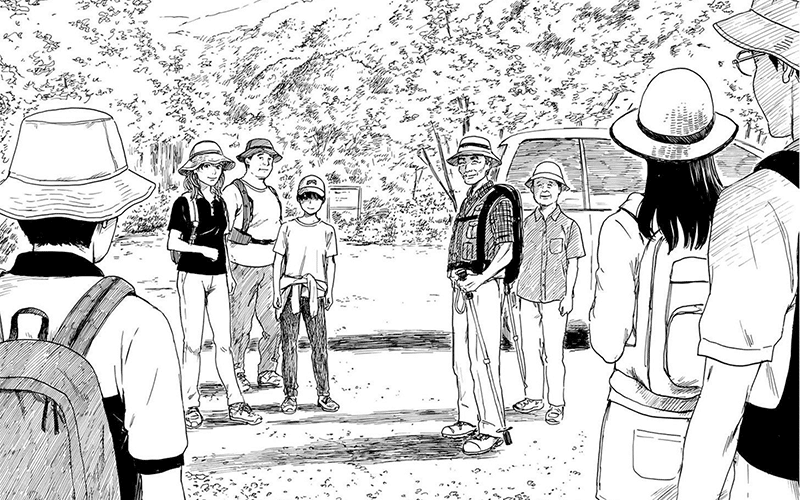
The result is a series that feels painfully intimate rather than sensationalized. Blood on the Tracks isn’t about jump scares or plot twists. It’s about the slow-motion horror of a child trapped in an abusive relationship and the psychological scars it leaves behind. Some readers may find the oppressive tone or lack of a traditional narrative difficult, but that discomfort is precisely what gives the manga its power.
For anyone interested in psychological horror, toxic family dynamics, or slow-burn suspense, Blood on the Tracks is a masterclass. It’s quiet, devastating, brilliantly drawn, and easily one of the best modern seinen manga.
Genres: Horror, Psychological, Tragedy, Philosophical, Slice of Life
Status: Finished
38. My Dearest Self With Malice Aforethought
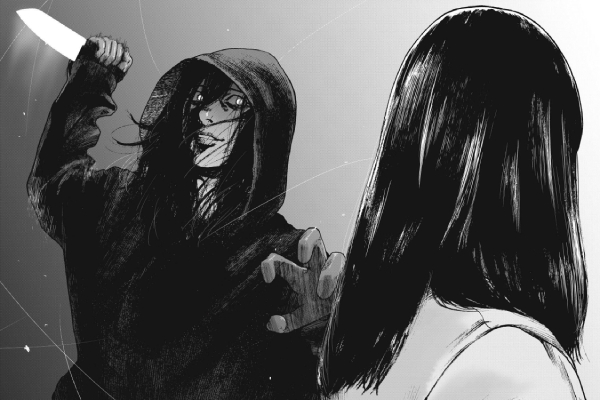
If you’re searching for a manga that will keep you compulsively turning pages, My Dearest Self With Malice Aforethought is a standout. Written by Hajime Inoryuu and illustrated by Shota Ito, it’s one of the best seinen manga for thriller fans in recent years.
The story centers on Eiji Urashima, a seemingly ordinary college student whose life fractures overnight. He wakes up beside a stranger claiming to be his girlfriend, and has no memory of the past few days. As he investigates his missing time, a chain of events begins to unfold. What starts as mild amnesia soon spirals into a nightmare of false identities and long-buried secrets.
The first half of the series is especially gripping. Every other chapter hits you with a revelation that rewrites your understanding of the plot. Hidden motives, shocking betrayals, and twists arrive with ruthless frequency. This relentless pacing makes the manga wildly addictive, but also overwhelming for readers who prefer a more traditional, slow-burn approach to mystery.
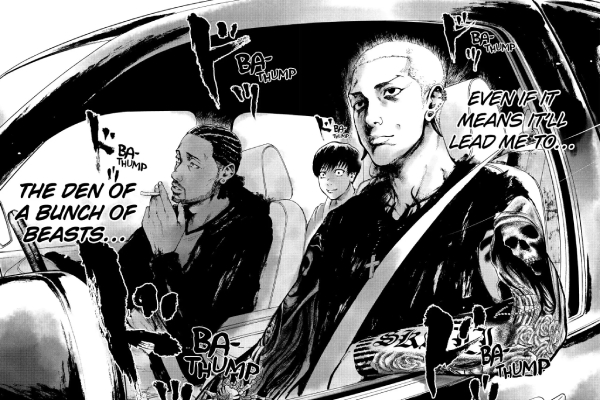
As the story moves into its second half, the chaos subsides and the narrative becomes more linear, steering toward resolution. While this shift allows the themes and character arcs to land, it also loses some of the electric tension of the earlier chapters. Even so, the core mystery remains satisfying and delivers a strong conclusion.
Visually, the clean, realistic art style grounds the increasingly implausible twists, lending credibility to an otherwise sensational plot. Characters are expressive, locations feel authentic, and the paneling maintains clarity even as the narrative swerves in unexpected directions.
Above all, My Dearest Self With Malice Aforethought succeeds by manipulating expectations rather than relying on gore or shock value. It’s a mind game between author and reader, and every time you think you’ve figured out where the story goes, another twist is waiting for you. For thriller enthusiasts looking for a dark, twisting ride, it’s easily one of the best seinen manga to pick up.
Genres: Psychological, Thriller, Mystery, Drama
Status: Finished
37. MPD Psycho
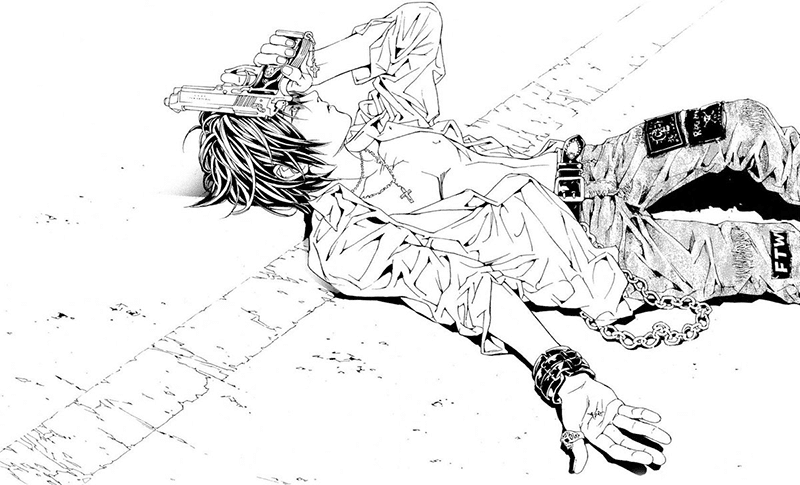
Few manga embody psychological horror as intensely as MPD Psycho by Eiji Otsuka and Shou Tajima. Initially it appears to be a grisly detective story, but it evolves into a sprawling conspiracy thriller that’s dense, violent, and unforgettable. For readers who like their crime fiction dark and labyrinthine, it’s one of the best seinen manga you can find.
The series centers on Kazuhiko Amamiya, a police detective suffering from multiple personality disorder. At first, each chapter reads like an episode of true-crime noir: grotesque murder cases, ritualistic crime scenes, and a damaged investigator piecing together clues. But as the narrative unfolds, these cases reveal an overarching conspiracy involving cults, brainwashing, and much more. What begins as procedural storytelling mutates into a psychological puzzle where identity, morality, and reality itself become unstable.
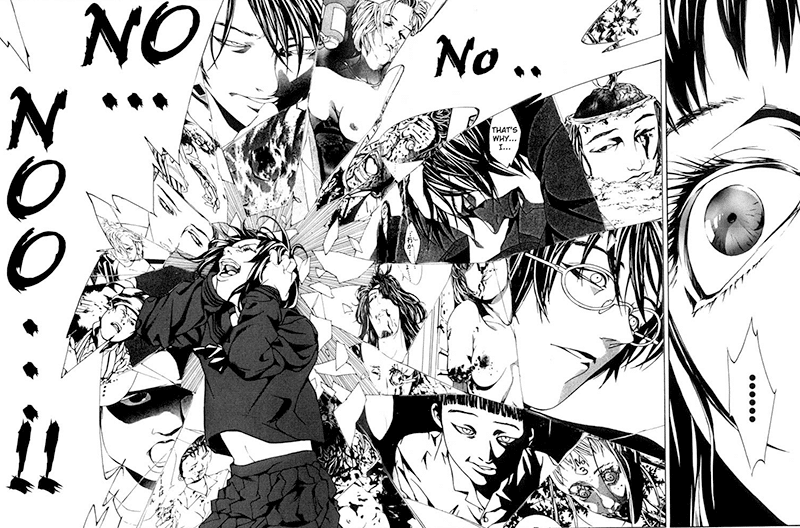
Shou Tajima’s artwork is a key part of what makes MPD Psycho so striking. His lines are clean and hyper-detailed, rendering every scene with unnerving precision. It’s graphic, often shocking, but always deliberate. The sheer realism of the character design and setting grounds even the wildest moments in a credible visual world.
Yet the manga’s gore is not there for its own sake. Beneath the dismembered bodies and torture scenes lies the fragility of the self. This coincides with Amamiya’s shifting personalities, who act as both narrative device and thematic engine, showing how trauma and manipulation can fracture identity. This, however, is also the manga’s greatest challenge: keeping track of which personality is in control and how it connects to the wider plot can be confusing, especially as the narrative grows more complex.
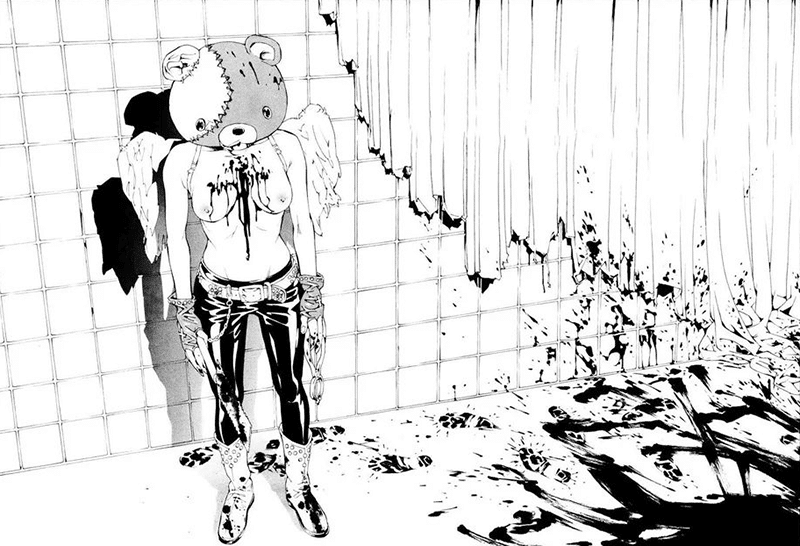
Despite the difficulty, MPD Psycho rewards readers who stick with it. It’s narratively dense, morally bleak, and psychologically rich. This makes it one of the most uncompromising thrillers, far beyond other, more typical crime manga. If you’re prepared for extreme violence and a non-linear, challenging plot, MPD Psycho is a brutal and brilliant entry among the best seinen manga of the past decades.
Genres: Horror, Mystery, Psychological, Crime, Thriller
Status: Finished
36. Battle Angel Alita
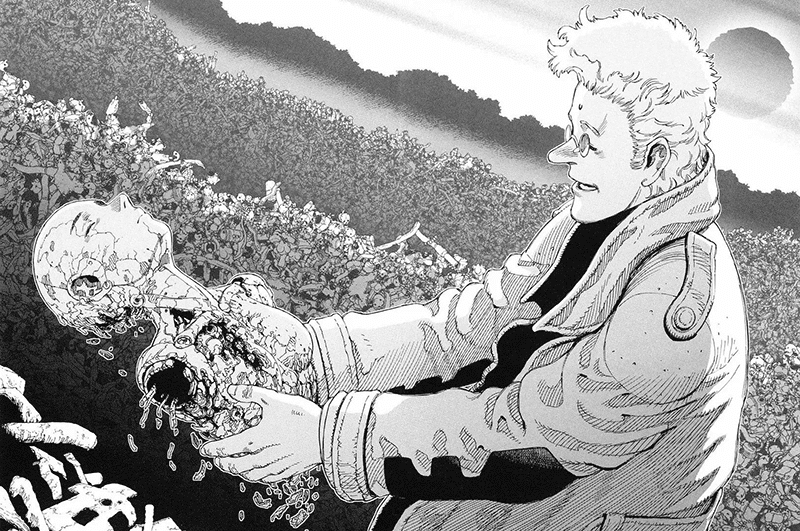
Among cyberpunk manga, few titles are as iconic as Battle Angel Alita by Yukito Kishiro. It mixes high-octane action with questions of identity and survival, remaining one of the defining seinen manga of the genre.
The story begins with Dr. Ido, a cybernetics specialist, discovering the remains of a destroyed cyborg girl in the Scrapyard, a sprawling post-apocalyptic junk city. He rebuilds her, gives her a new body, and names her Alita. With no memories of her past, Alita starts as an almost childlike newcomer, but over the course of the series she grows into a battle-hardened fighter, forging her own path and uncovering the truth of her origins.
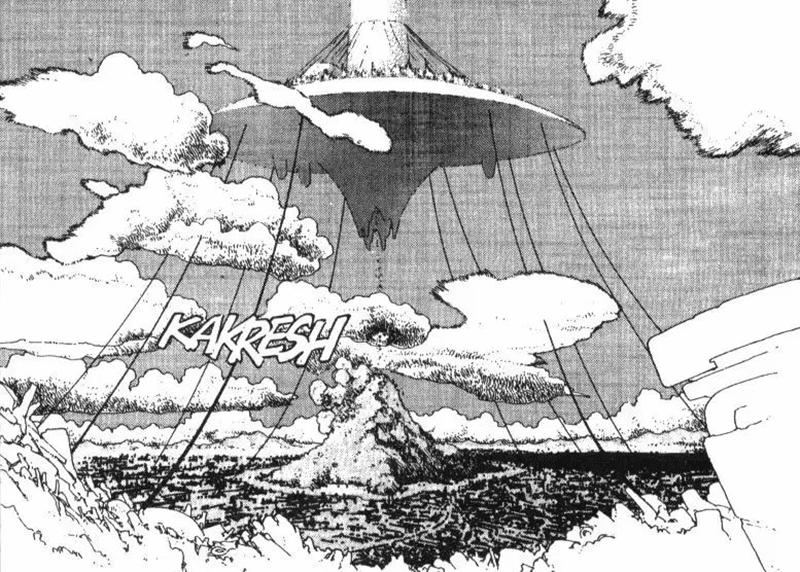
Kishiro’s worldbuilding is the series’ clear highlight. The Scrapyard is a labyrinth of factories, alleys, and cybernetic freaks, home to bounty hunters, criminals, and broken dreams. Above it floats the mysterious city of Zalem, a technological utopia whose secrets are tied to Alita’s lost history. This contrast between earthbound decay and a seemingly perfect city creates a classic cyberpunk tension.
The action sequences, particularly the legendary Motorball arc, are where Battle Angel Alita shines brightest. Kishiro captures speed, impact, and choreography with rare clarity. Cybernetic designs are inventive and grotesque in equal measure, from Alita’s own upgrades to her increasingly unhinged opponents. Even the villains stand out, especially Zapan, who evolves from a deranged bounty hunter to a full-blown nightmare.

But Alita isn’t just about action. Beneath its gritty cyberpunk exterior, the manga explores deeper themes of identity, free will, the meaning of life, and the cost of self-determination. Alita’s dynamic with Dr. Ido grounds the story emotionally, functioning as a surrogate father-daughter relationship amid the chaos. As Alita becomes more independent, her journey shifts from survival to self-definition, making her one of the most memorable protagonists in manga.
The series isn’t without flaws, though. The earliest volumes’ art can feel rough and uneven, and Kishiro’s character design sometimes veers into caricature or cartoonishness at times. As the series progresses, though, his linework, paneling, and mechanical detail improve dramatically. In the later arcs, the art becomes a full-fledged showcase of cybernetic imagination.
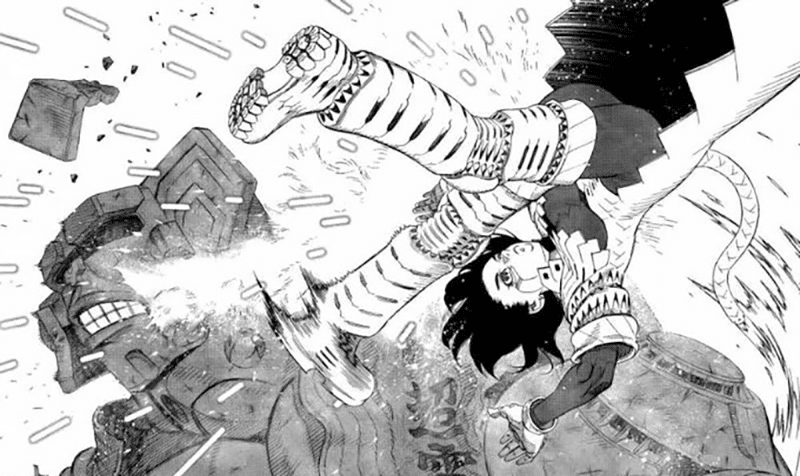
Battle Angel Alita remains a landmark seinen manga: grimy, kinetic, and emotionally resonant. It’s a story about forging an identity in a hostile world, framed by unforgettable battles, and a richly imagined setting. For fans of cyberpunk, science-fiction, or character-driven action, it’s a must-read, and definitely one of the best seinen manga of all time.
Genres: Cyberpunk, Sci-Fi, Action
Status: Finished
35. The Fable
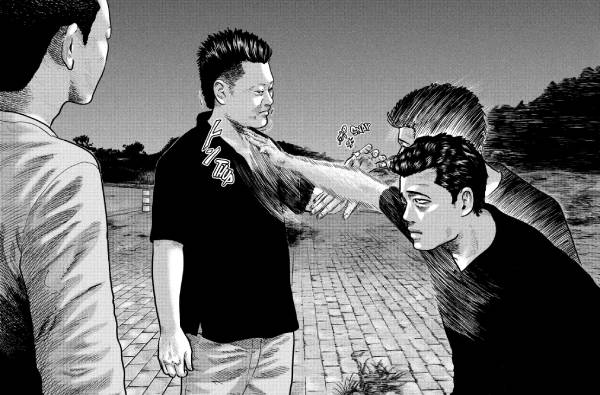
Few modern seinen series blend black comedy, hard-boiled crime, and slice-of-life storytelling as smoothly as The Fable by Katsuhisa Minami. It’s one of the best seinen manga of the past decade, and a grounded, unpredictable portrait of a professional killer forced to live as an ordinary man.
The premise is deceptively simple. Fable, an infamous assassin who has racked up countless kills, is ordered by his boss to take a one-year sabbatical. He and his partner Youko, posing as his sister, are told to move to Osaka, live under new identities, and, most importantly, avoid killing anyone. If he slips even once, their punishment will be severe. What begins as a quirky setup turns into a fascinating experiment: what happens when a weaponized human being is dropped into normal society?
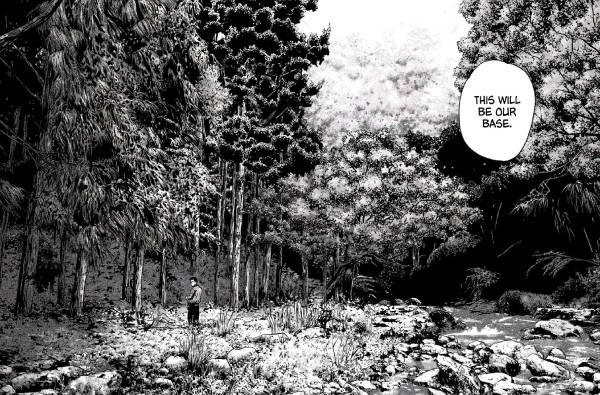
What makes The Fable stand out is its tone. Rather than leaning on edgy grit or glorifying violence, it uses deadpan humor and everyday awkwardness to show how absurdly out-of-place Akira Satou is in the real world. Watching this stoic, ultra-competent hitman navigate mundane jobs, office gossip, and social etiquette is both hilarious and strangely endearing. At the same time, the underworld he left behind keeps intruding, leading to sudden bursts of tension and violence that feel earned precisely because the series spends so much time on quieter, human moments.
The artwork is stunning. Minami’s ultra-realistic style captures subtle body language, cramped apartments, and neon-lit Osaka streets with a photographic level of detail. Characters look grounded and distinct, free of exaggerated details. This realism enhances the humor, because even the smallest comedic beats feel plausible.
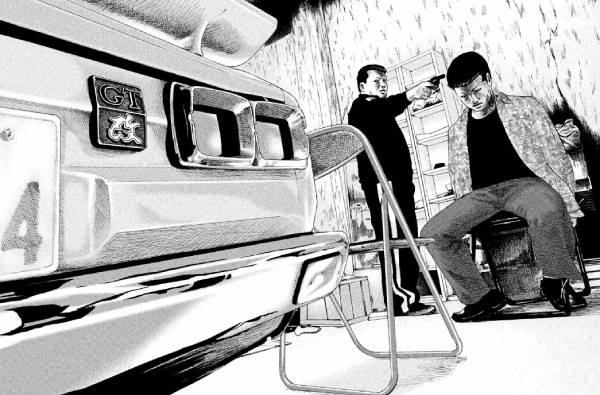
The cast is another highlight. Akira himself is a brilliant subversion of the stoic badass, equal parts terrifying and socially clueless, while Youko, the yakuza middlemen, and the various civilians all add layers of contrast and warmth.
The Fable isn’t about nonstop action. It’s about tension, absurdity, and the quiet psychological toll of trying to live like a normal person. For readers tired of formulaic crime manga or hyper-stylized assassins, The Fable offers something fresh, funny, and genuinely memorable, making it one of the best seinen manga of recent years.
Genres: Crime, Slice of Life, Dark Comedy
Status: Finished (followed by The Fable: The Second Contact)
34. Gannibal
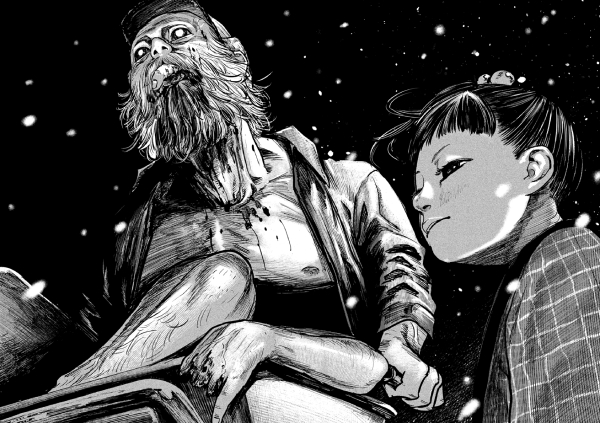
Masaaki Ninomiya’s Gannibal is one of the most gripping seinen manga to be published in recent years. Equal parts psychological drama, crime thriller, and rural noir, it transforms a scenic mountain village into a suffocating nightmare.
The story follows police officer Daigo Agawa, who transfers to a remote countryside post with his wife and daughter. At first, it seems like a quiet assignment, but soon tension shows beneath the surface: the villagers act oddly, his predecessor has vanished, and the powerful Goto family rules over the area with an iron grip. When a mutilated corpse surfaces, Daigo suspects the impossible: cannibalism might be more than rumor here.
Rather than relying on constant violence, Gannibal thrives on slow-burn suspense. Every polite exchange feels loaded, and every handshake could hide a threat. The sense of isolation is palpable. Daigo is cut off from allies and surrounded by people who may conspire against him. This makes it as much a psychological horror story as a crime mystery.
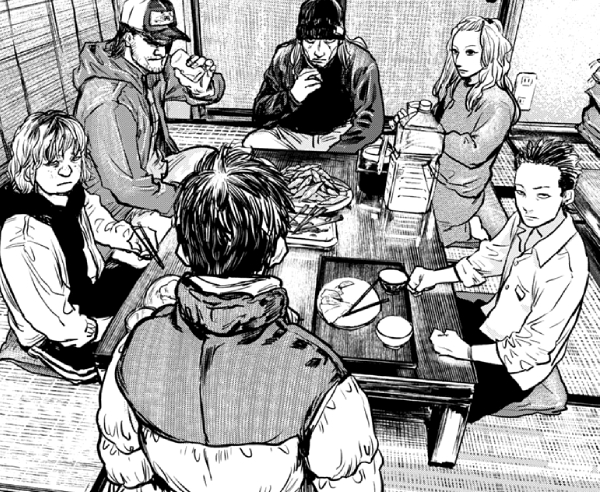
Ninomiya’s artwork is stellar. Characters are expressive and grounded. The rural setting is drawn in incredible detail, and when the manga unleashes its violence, it’s shocking but never gratuitous. The contrast between the tranquil village and the horrifying undercurrent gives the series its edge.
The cast is another standout. Daigo isn’t a conventional hero but a complex, burdened protagonist whose flaws make him feel human. The Goto family, meanwhile, is written with nuance. While they are menacing, they aren’t cartoonishly evil, but still embody the village’s dark history.
What sets Gannibal apart from most other seinen manga is its realism. The danger doesn’t come from supernatural power or fantasy elements, but from human cruelty, inherited trauma, and the persistence of old rituals. That grounded premise makes each revelation hit harder.
If you’re after a seinen thriller that’s tense, immersive, and beautifully illustrated, Gannibal is a must-read. It’s smart, suspenseful, and one of the most underrated entries in modern seinen manga.
Genres: Horror, Mystery, Psychological, Crime
Status: Finished
33. Smuggler

Manabe Shōhei might be best known for his longer works like Dead End and Yamikin Ushijima-kun, but Smuggler proves he can deliver an unforgettable experience in just a handful of chapters. This short, but fantastic seinen manga is a favorite of mine. It’s an uncompromising crime thriller that feels like a collision between Tarantino and Guy Ritchie.
The story centers on Yosuke Kinuta, a failed actor drowning in debt, who takes a shady job as part of a corpse disposal crew. It sounds grim, and it is. Yosuke quickly discovers that his new profession places him squarely in the crosshairs of a violent mob war. Things spiral even further out of control when two lethal Chinese assassins join the mix, turning a dirty job into a deadly nightmare.
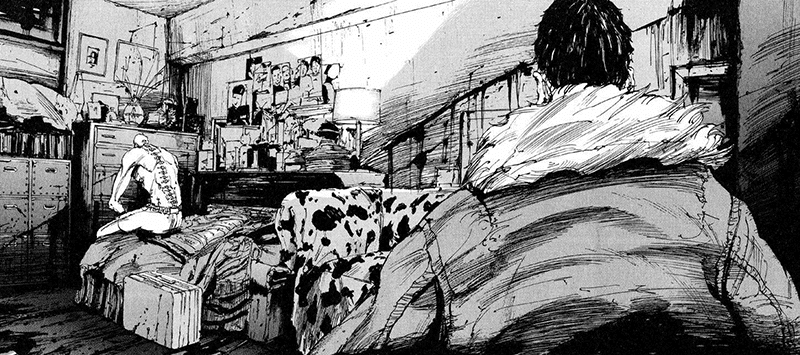
What makes Smuggler stand out is its mix of grounded grit and outrageous characters. Yosuke, as the only ordinary person in a cast of killers, becomes our anchor point. Around him swirl some of Manabe Shōhei’s most memorable creations: the unflinching crew leader, eccentric mobsters, and the assassins themselves, who steal every scene they’re in.
The art style carries Manabe’s trademark qualities: detailed backgrounds, realistic proportions, and faces that look strikingly human but slightly grotesque. It’s a distinctive approach that may polarize readers, but perfectly suits the story’s grimy, intense, and unpredictable tone.
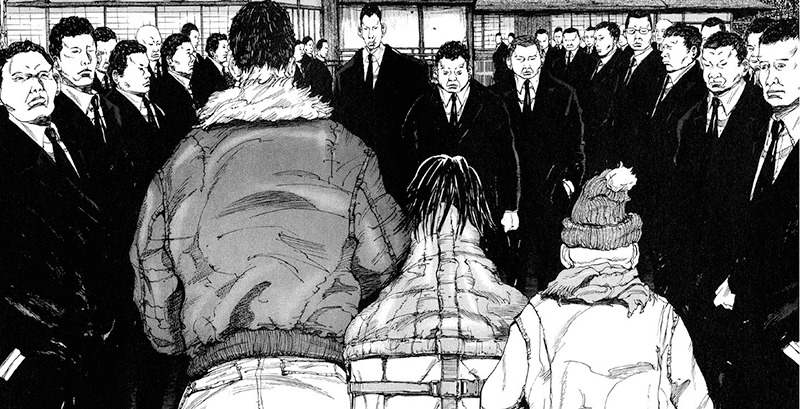
Despite its brevity, Smuggler delivers kinetic action sequences, bursts of black humor, and moments of shocking brutality. Each chapter pushes the tension higher, culminating in a fantastic finale. It’s the type of manga you might finish in one sitting but that will stay on your mind much longer.
For me, Smuggler wasn’t just another crime story, but proof that seinen manga can be short, tightly written, and still unforgettable. If you’re drawn to morally gray characters, dark underworld settings, and stylish violence, this hidden gem is absolutely worth tracking down.
Genres: Crime, Thriller
Status: Finished
32. Omoide Emanon
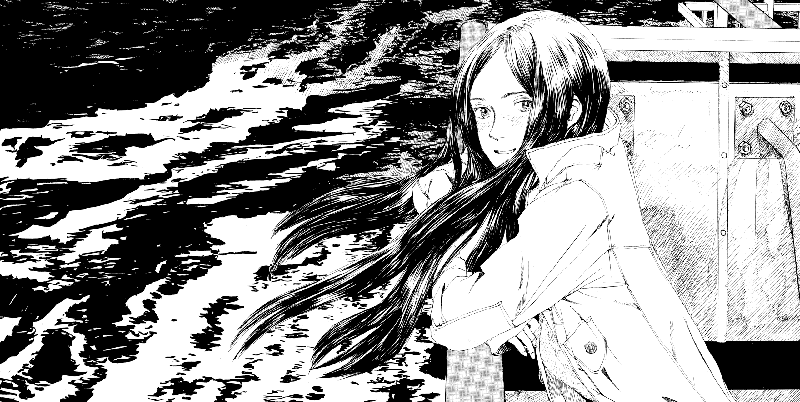
There are certain stories that contain a glimmer of absolute brilliance. Kenji Tsuruta’s Omoide Emanon is one of these rare works. It’s quiet, beautiful, and unforgettable. Adapted from a novel by Shinji Kajio, it stands as one of the best seinen manga of all time.
The story follows a young man returning home after his travels. On a ferry, he encounters a striking young woman who introduces herself as Emanon. Over dinner, she shares her story, and the encounter becomes something far more profound than a casual meeting.
There’s something ineffable about this manga. It carries a warm, solemn atmosphere that you rarely encounter. Whether it’s the quiet intimacy of the characters’ conversation, the melancholy of the young man’s journey, or the mystery surrounding Emanon herself, everything fits together perfectly.
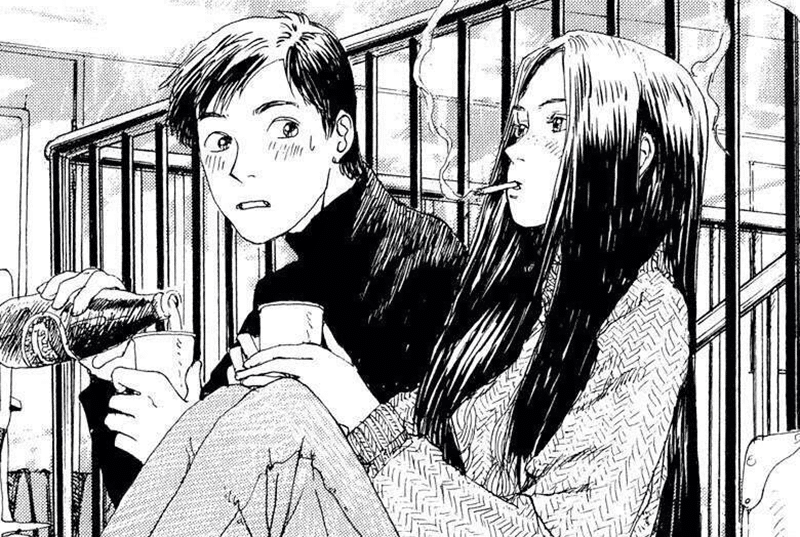
Kenji Tsuruta’s art elevates the experience even further. Every page is beautifully illustrated, with realistic, finely detailed characters and backgrounds that feel alive. Emanon herself is rendered with particular care: she’s beautiful and charismatic, but also a little ominous.
For a manga barely one volume long, I was surprised by how many emotions it stirred. This small, delicate story hit harder than many longer-running series I’ve read.
However, sometimes it’s the smaller things in life that stay on your mind the longest. If you read Omoide Emanon, it might very well become one of these things.
Genres: Drama, Slice of Life
Status: Finished
31. Onani Master Kurosawa
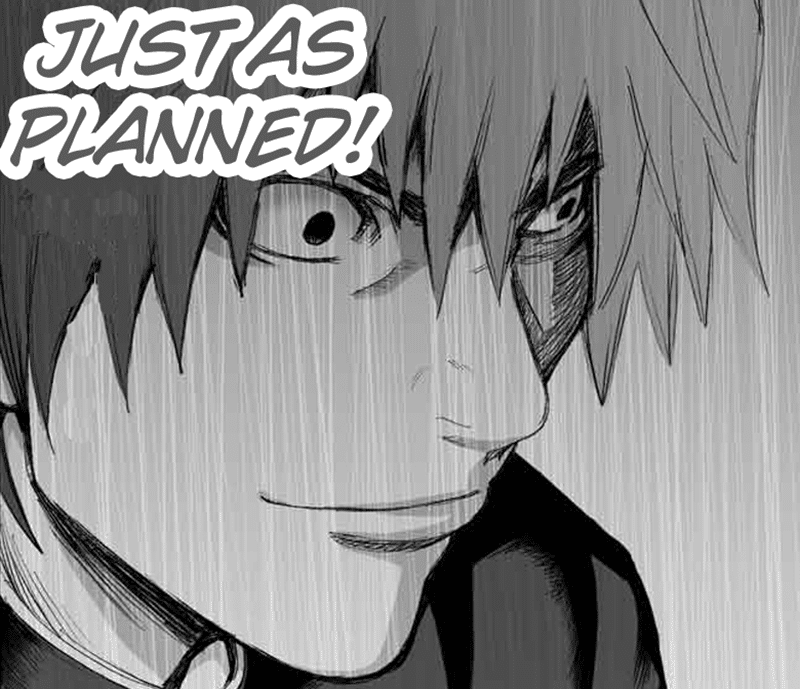
Onani Master Kurosawa (Masturbation Master Kurosawa) by Katsura Ise and Takuma Yokota is one of those rare manga that completely subvert expectations. With a title like that, you’d expect a raunchy gag series. Instead, it turns into one of the most heartfelt, character-driven coming-of-age stories in seinen manga.
The premise sounds edgy at first. Kakeru Kurosawa, a fourteen-year-old antisocial loner, sneaks into a rarely used school bathroom every afternoon to indulge in his private habits. When he sees his timid classmate Aya Kitahara being bullied by two popular girls, he takes revenge into his own hands by doing what he does best. Kitahara soon discovers the truth and blackmails him, forcing him to continue targeting others. What begins as a perverse vigilante streak quickly spirals into a web of guilt, shame, and eventually reckoning.
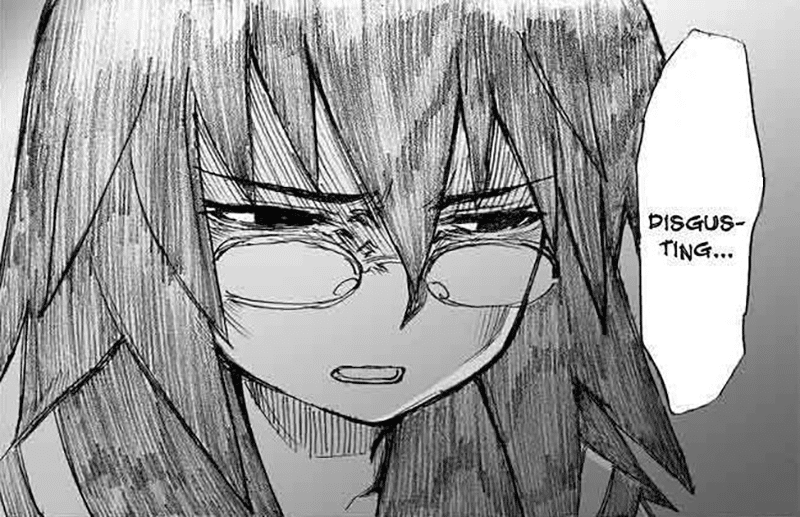
Early on, Onani Master Kurosawa reads like a dark parody of Death Note: a teenage loner using a secret power to punish his classmates. But gradually, almost imperceptibly, it transforms into a genuine coming-of-age story about alienation, guilt, redemption, and first love. By the later chapters, the edgy premise has faded and is replaced by a poignant exploration of adolescence and the lasting consequences of youthful mistakes.
Kurosawa himself is one of the most believable protagonists you’ll find in manga. He’s awkward, flawed, sometimes disturbing, but painfully human. The intimacy of his portrayal, the way we witness his thoughts, insecurities, and gradual growth, turns what could have been a shallow joke into a striking character study. The supporting cast, though less central, also grows and changes in ways that feel authentic, particularly Kitahara herself.
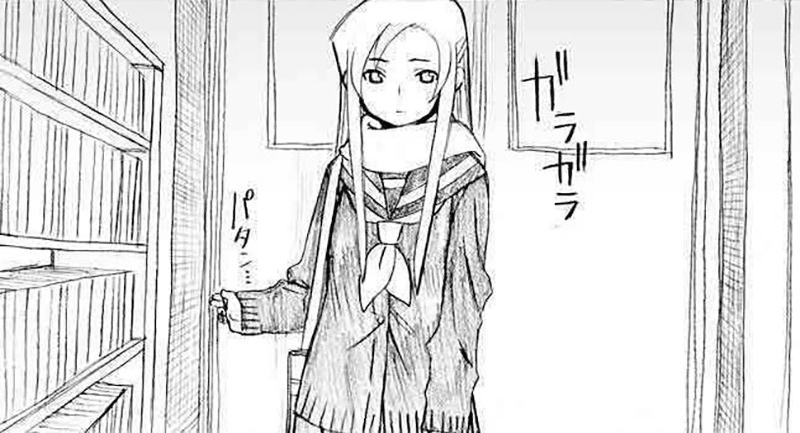
The artwork mirrors the focus. The sketchy shading and careful attention to facial expressions capture raw emotional states with a realism that outshines its plain backgrounds. There’s no gratuitous fan service here. When there’s nudity or sexual elements, they are there to unsettle rather than titillate, underscoring the discomfort and moral weight of Kurosawa’s actions.
Some readers may be put off by the earlier chapters’ fantasies, but they’re essential to the story’s arc. They ground Kurosawa’s flaws and make his later transformation resonate all the more. By the final stretch, the series evolves into an almost inspirational portrait of growth and self-awareness.
Beneath its provocative title, Onani Master Kurosawa is a surprisingly mature, empathetic, and unforgettable manga. It’s one of the best examples of how seinen storytelling can take a shocking premise and turn it into something deeply human and moving. If you’re looking for an unconventional but profoundly rewarding coming-of-age story, don’t let the title scare you away.
Genres: Drama, Coming-of-Age
Status: Finished
30. Sanctuary
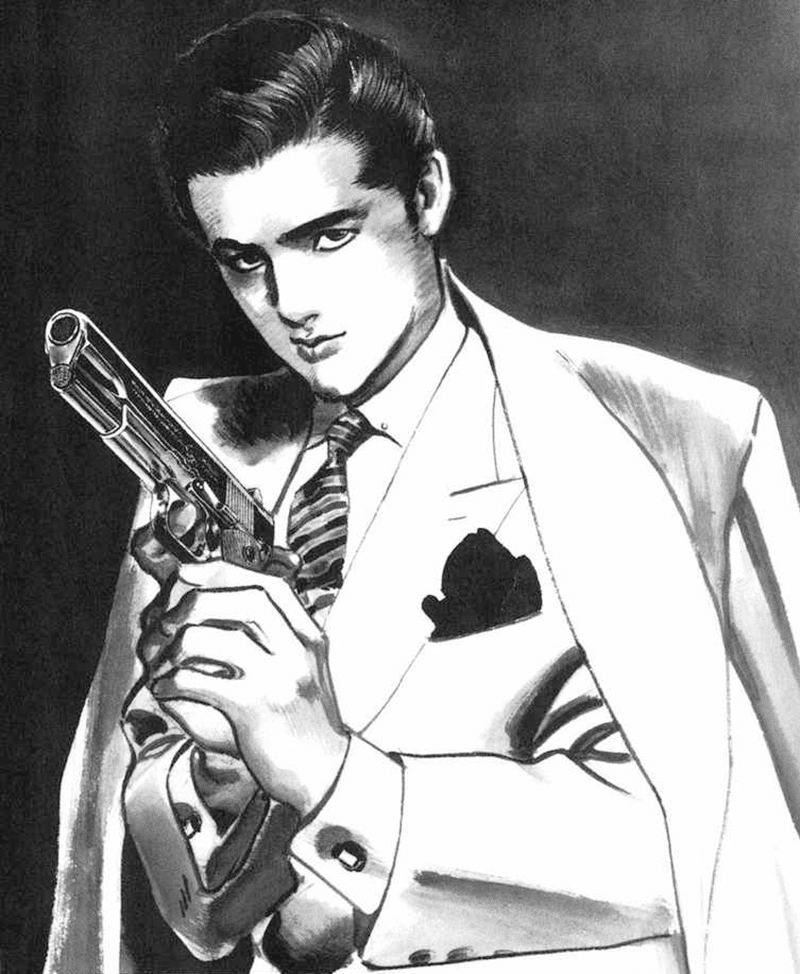
Sanctuary by Buronson and Ryoichi Ikegami is one of the greatest crime thrillers in manga. It’s a sweeping power fantasy that fuses gangster grit with political intrigue. Part political thriller, part yakuza epic, it remains one of the most ambitious seinen manga ever published.
The story follows two childhood friends, Chiaki Asami and Akira Houjou, who share a single goal: to drag Japan out of stagnation and remake it as their own sanctuary. To accomplish this, they take opposite paths. Asami ascends the political ladder, scheming his way toward the office of Prime Minister, while Houjou seizes power in the underworld, uniting the yakuza under his banner. Together, their twin campaigns form the backbone of the series.
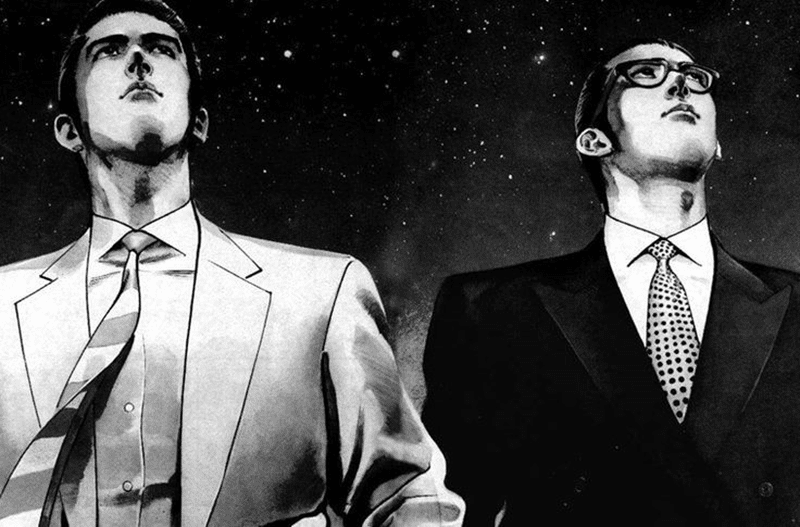
This dual structure is Sanctuary’s masterstroke. Asami’s side of the story plunges the reader into election campaigns, backroom deals, and Diet intrigue. Houjou’s half offers violent turf wars, gang alliances, and a portrait of the yakuza as a modern political force. The contrast between boardrooms and back alleys gives the manga a unique rhythm and keeps both halves equally gripping.
Sanctuary also boasts a cast of larger-than-life figures. From ambitious hotshots to hardened yakuza bosses and career politicians, every rival feels dangerous and motivated. Isaoka in particular stands out as one of the greatest and most formidable adversaries in manga. He’s an almost perfect foil to Asami and Houjou, blending cunning politics with ruthless pragmatism.
Ikegami’s artwork is classic 90s seinen: clean, bold, and commanding. Characters look sharp and professional, with a cinematic cool that turns even tense conversations into showdowns. Wide panels of Tokyo nightlife, Diet chambers, and smoky bars give the entire series an intoxicating atmosphere of power and ambition.
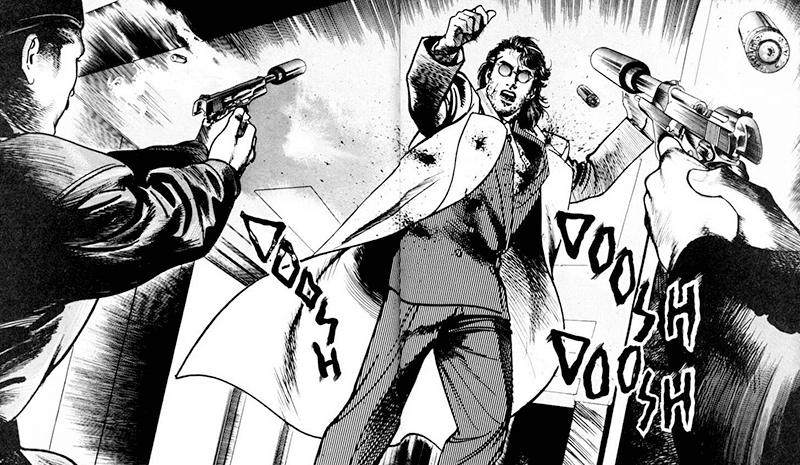
Sanctuary also has its flaws. Its depiction of women is dated. They are mostly hostesses, love interests, or sex objects orbiting the male cast. And though it begins grounded in gritty realism, the longer it goes, the more implausible its twists and power moves become. By the finale, the series has shifted fully into power-fantasy territory, and feels more operatic than plausible. Yet for many readers, this only adds to its pulpy charm.
Even with its imperfections, Sanctuary remains a landmark seinen manga, one that’s part gangster epic, part political soap opera. Asami’s storyline brims with suspense, Houjou’s with action, and the whole thing reads like an over-the-top gangster movie crossed with a political thriller. If you’re drawn to crime manga, political intrigue, and charismatic antiheroes, Sanctuary is a must-read.
Genres: Crime, Political Thriller
Status: Finished
29. Biomega
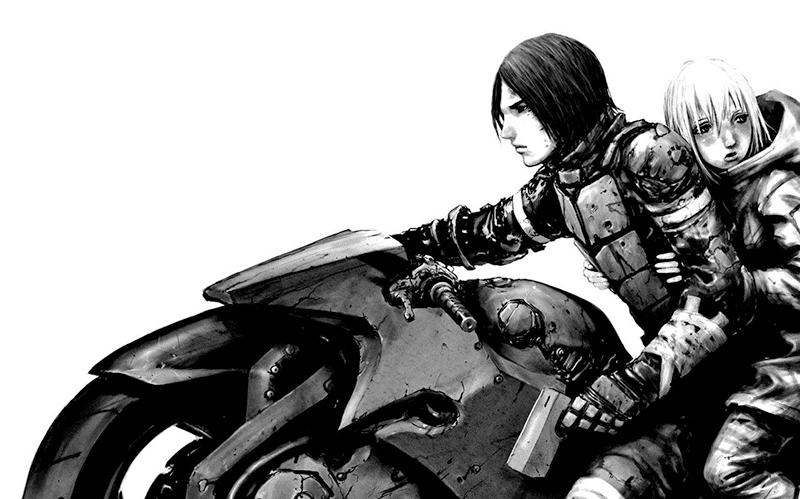
Biomega by Tsutomu Nihei is what happens when cyberpunk, body horror, and a zombie apocalypse collide. Across six volumes, Nihei crafts one of the weirdest, fastest, and most visually stunning manga of the 2000s. It’s equal parts nightmare and fever dream, and easily one of the best of its genre.
The story begins with Zouichi Kanoe, a synthetic human dispatched by TOA Heavy Industries, riding across a ruined Earth with his AI companion Fuyu Kano. Their mission: retrieve a human immune to the N5S virus, a pathogen that transforms victims into grotesque bio-mechanical drones. This seemingly straightforward job quickly escalates into a multi-sided conflict involving rival corporations, mutant creatures, and the enigmatic Niarid, the leader of the DRF, whose agenda intertwines with the outbreak in increasingly bizarre ways.
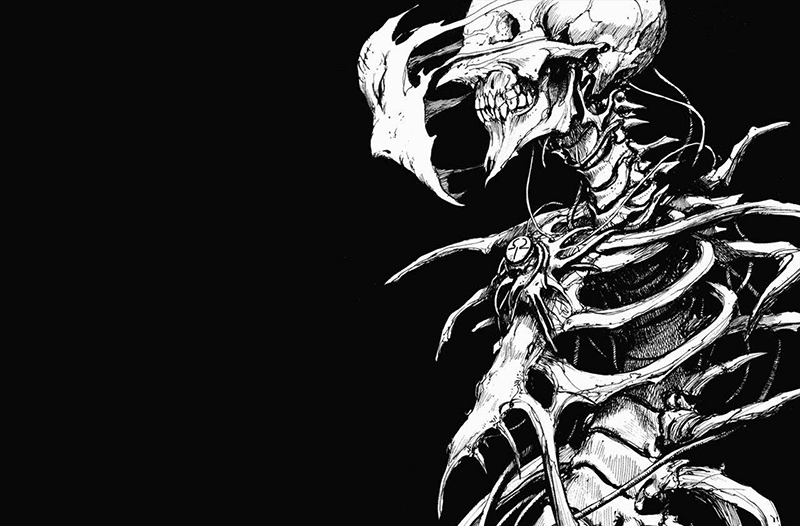
Biomega is classic Nihei in tone and scope. Towering megastructures stretch into infinity, motorcycles bristle with weapons, and cybernetic monstrosities ripple with disturbing detail. The drones themselves, part robot, part decaying flesh, are some of his most memorable creations. Like in his earlier work Blame!, entire chapters unfold without dialogue, the story told instead through vast backdrops, kinetic layouts, and cinematic action sequences.
Zouichi and fellow synthetic human Nishu embody over-the-top cool: sleek outfits, massive firearms, breathtaking bike stunts. Yet Nihei’s worldbuilding keeps them grounded in a larger mystery rather than a mere power fantasy. Every faction, environment, and bio-engineered creature adds another layer to the story’s sense of scale and dread.
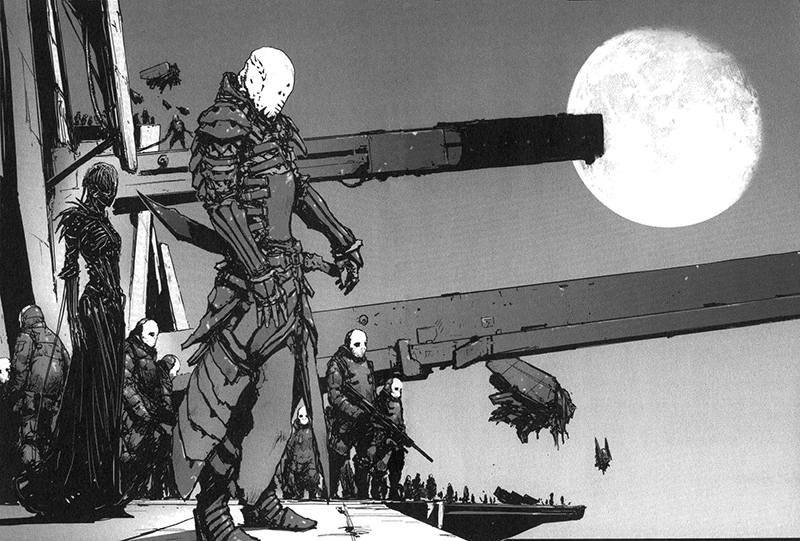
What sets Biomega apart from Blame! is its sheer pacing. The first half is a turbo-charged cyberpunk chase story, almost breathless in its momentum. In the second half, the manga pivots into something even stranger, turning into a cyber-fantasy odyssey overflowing with transhumanist ideas and unrestrained creature design. This tonal shift can be jarring, even disorienting, but it also shows Nihei’s wild imagination.
The speed comes at a cost, though. Plot points appear and vanish, characters get little development, and the narrative sometimes rushes past its own best ideas. The latter volumes especially feel like Nihei is trying to compress an enormous, sprawling vision into six volumes. Still, the spectacle alone, the gorgeous architecture, mutant horror, and explosive action, more than makes up for it.
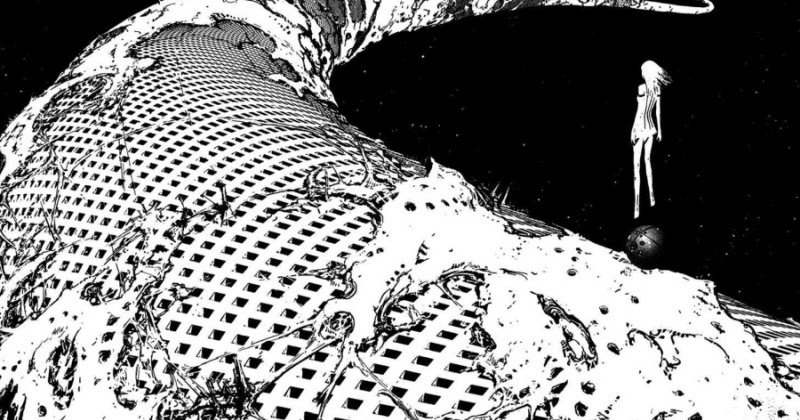
Few manga are as unapologetic as Biomega. It’s a visually stunning cyberpunk nightmare of zombies, megastructures, and synthetic warriors, with a scope and creativity rarely seen even in seinen manga. For readers who love Blame!, or anyone craving a weird, brutal, and unforgettable ride through a collapsing future, Biomega is a must-read.
If you’re interested in learning more about Biomega, you can read my essay in which I dissect it’s story, visuals and general themes.
Genres: Cyberpunk, Science Fiction
Status: Finished
28. Inside Mari
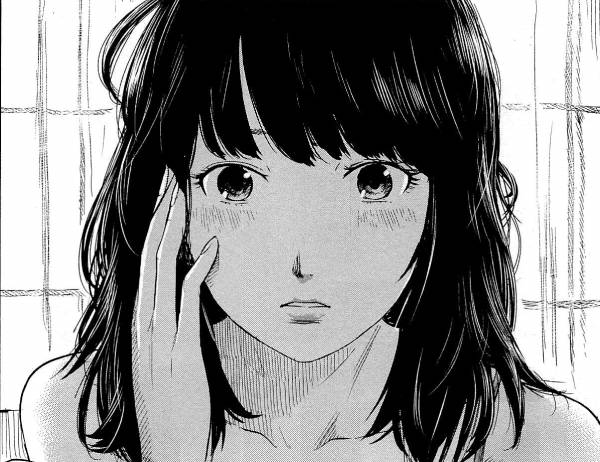
After reading Blood on the Tracks, I wanted to dive deeper into Shūzō Oshimi’s catalog, and Inside Mari ended up being my favorite, even surpassing his stellar Blood on the Tracks. This seinen manga is one of the strangest, most unsettling psychological stories I’ve ever read. What starts as a simple body-swap premise slowly unravels into a dark, deeply human mystery about identity, trauma, and self-perception.
The story follows Isao Komori, a socially isolated college dropout who has spent years as a hikikomori in Tokyo. His only solace is watching Mari, a seemingly perfect high school girl he dubs ‘The Angel of the Convenience Store.’ Then, one day, he wakes up inside her body with no memory of how or why. At first, it seems like a twisted gender-bender fantasy, but Oshimi takes it in a completely unexpected direction.
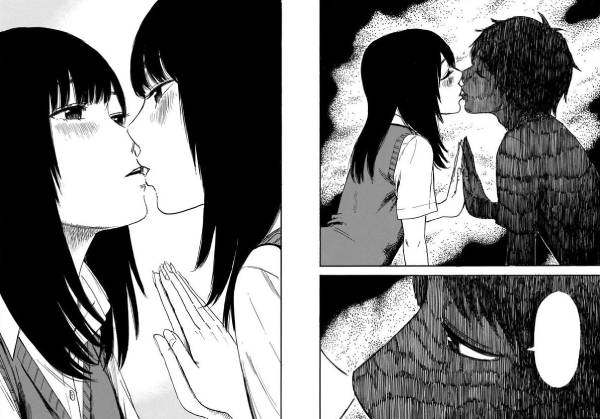
Inside Mari thrives on discomfort. There are long, tense stretches of introspection, voyeuristic moments that will make you squirm and scenes that explore sexuality, depression, and obsession in unnervingly direct ways. Yet none of it feels gratuitous. Oshimi’s aim is to dig into the psychological breakdown of his characters, and by the time the mystery reveals its answers, the emotional impact hits hard.
The art is classic Oshimi. It uses clean lines, emotionally expressive faces, and paneling that draws you into the character’s inner world. He’s a master at capturing shame, anxiety, and subtle body language. Even when the story takes on surreal qualities, the visuals remain grounded and realistic, which makes the psychological tension even more potent.
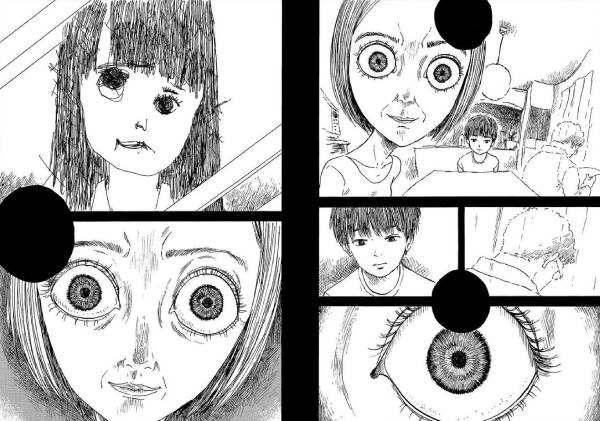
Critics sometimes point to Inside Mari’s slow pacing or the divisive nature of its cast, but for me those were part of the experience. Watching these deeply flawed people unravel is uncomfortable, but also fascinating. By the end, the series transforms from a creepy mystery into something strangely beautiful and cathartic.
If you’re looking for a seinen manga that goes far beyond its provocative hook, Inside Mari is a must-read. It’s weird, disturbing, at times even disgusting, but it’s also unforgettable. This is Oshimi at his boldest, and it remains one of the greatest psychological manga I’ve ever read.
Genres: Psychological, Mystery
Status: Finished
27. Soil
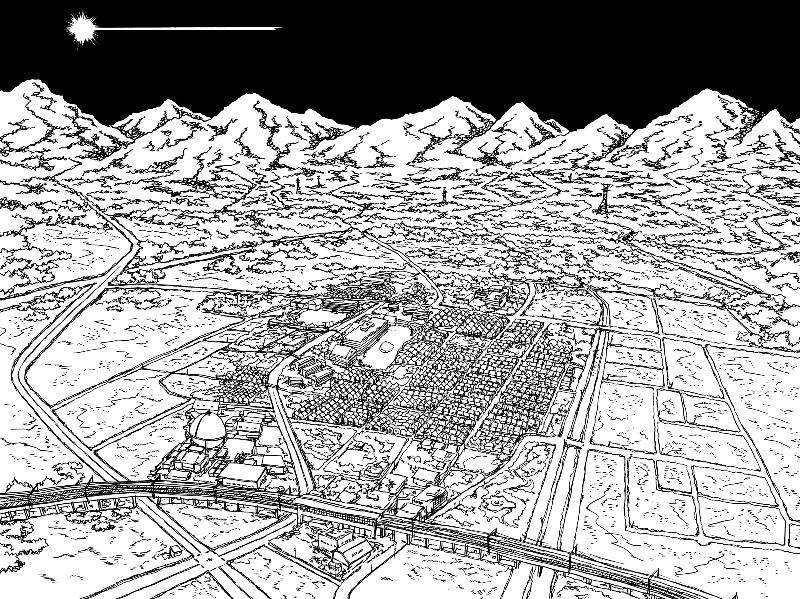
Soil by Atsushi Kaneko is easily the weirdest manga on this entire list, and among the weirdest manga I’ve ever read. It begins as a seemingly straightforward mystery but spirals into one of the most surreal and unsettling experiences in the medium. By the time you reach the end, you’ll likely love the ride, yet have no idea what you just witnessed.
The story takes place in the idyllic Soil New Town, where an entire family disappears overnight. Two detectives, Yokoi, an abrasive wreck of a man, and the more grounded Onoda, are sent to investigate. At first, it feels like a standard missing-person case. But as the pair digs deeper, the town’s pristine look begins to crack. Secrets are revealed, residents begin behaving like caricatures of themselves, and the mystery slides from small-town crime into cosmic absurdity.
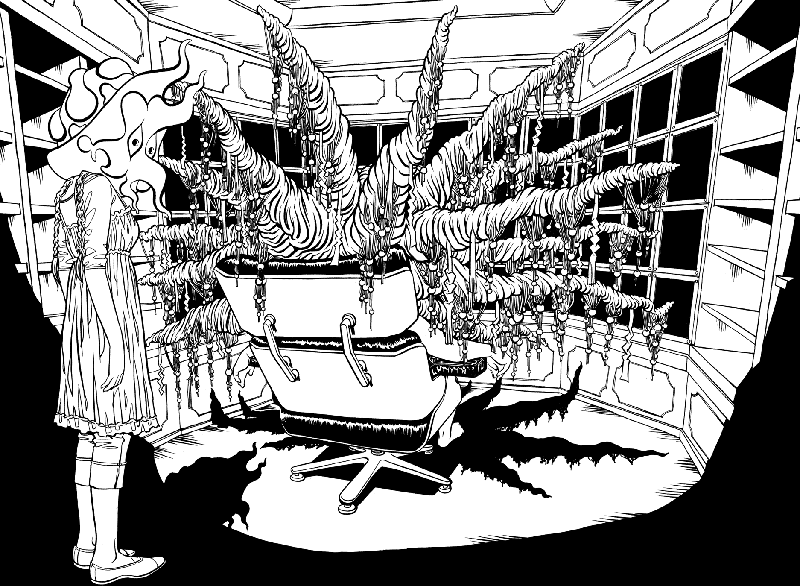
Kaneko’s art style perfectly matches this descent. Initially, it appears stiff, even amateurish. But as Soil unravels, the visuals grow stranger and more distorted. Faces warp, architecture bends, and pages feel like a fever dream. This shift makes the reader feel just as destabilized as the characters.
The cast is one of the strongest parts of Soil. Nobody feels like a stock archetype. Everyone’s flawed, petty, or downright disturbing. Yokoi himself is one of the most unpleasant protagonists I’ve come across. Even the town itself feels more like a living character, seeping paranoia into every panel.
This relentless weirdness is also Soil’s biggest gamble. In its second half, the plot sheds logic and coherence almost entirely. Questions multiply without resolution, and the ending is less a conclusion than another mystery on top. For some readers, this feels like genius; for others, it’s self-indulgent.
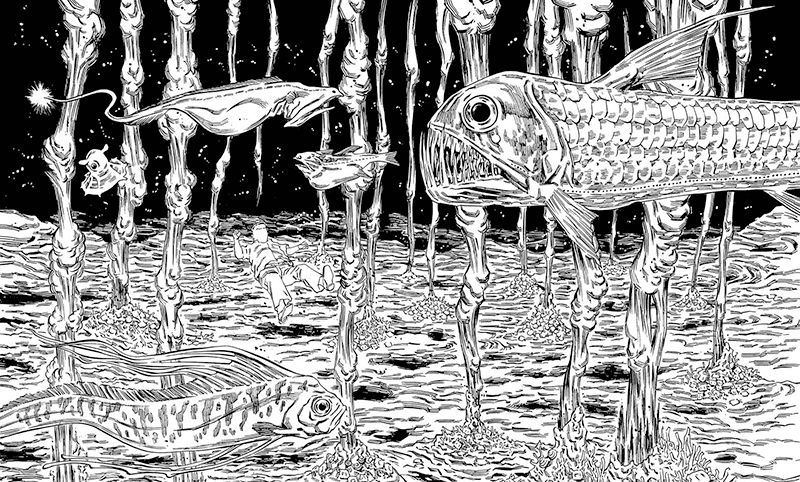
Still, the overall experience is unforgettable. Soil works best if you approach it as an immersive piece of surreal fiction rather than a neatly resolved mystery. It’s creepy, absurd, frustrating, and darkly funny all at once.
For fans of weird fiction, surreal imagery, and manga that push the boundaries of the form, Soil isn’t just a recommendation, but a must-read.
Genres: Horror, Crime, Mystery, Psychological, Philosophical
Status: Finished
26. Lone Wolf and Cub
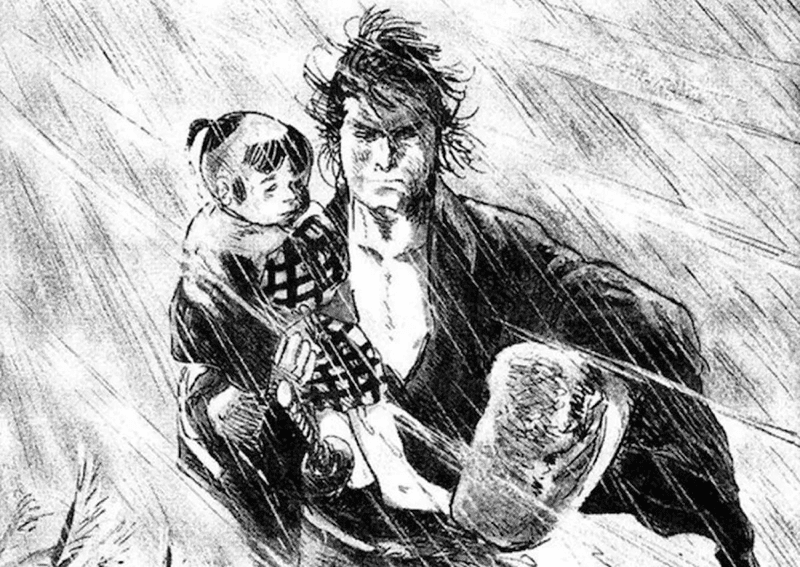
Few seinen manga have been as influential as Lone Wolf and Cub by Kazuo Koike and Goseki Kojima. Originally serialized in the 1970s, this classic samurai tale is not only one of the oldest works on this list but also one of the most enduring, shaping the way later manga approached revenge epics, father-son dynamics, and historical violence.
The story follows Itto Ogami, the Shogunate’s former chief executioner, who is betrayed and framed for treason by the scheming Yagyu Clan. Forced to flee with his infant son Daigoro, he takes up life as a wandering assassin for hire, cutting a bloody path toward vengeance. Known as the Lone Wolf and Cub, the pair travels across feudal Japan offering their services while pursuing their goal of retribution.

Early chapters are episodic, each focusing on a self-contained assassination or moral dilemma. Yet slowly the larger revenge narrative takes center stage, adding layers to Ogami’s character and the world he inhabits. Even with these stand-alone stories, Koike and Kojima pack more tension, atmosphere, and emotion than many much longer manga series.
Kojima’s art is timeless. Though firmly rooted in a classic style, it’s richly detailed and strikingly cinematic, with composition influenced by Jidaigeki film and traditional Japanese woodblock prints. His battle choreography remains a benchmark for swordplay on the page. It’s precise, brutal, yet beautiful even half a century later.
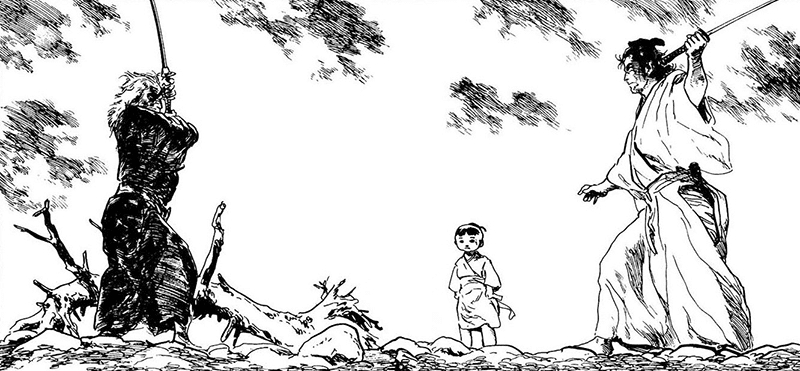
At first glance, Ogami appears to be an emotionless demon of war. But as the chapters unfold, he emerges as a deeply conflicted man, bound by honor, love for his son, and the code he lives by.
Because of its age and deliberate pacing, Lone Wolf and Cub may feel different from flashier, modern samurai seinen manga. Yet that authenticity is exactly what makes it stand apart. For anyone interested in historical epics, grounded sword fighting, or the roots of modern seinen storytelling, Lone Wolf and Cub is highly recommended reading.
Genres: Samurai, Historical
Status: Finished
25. Shigurui
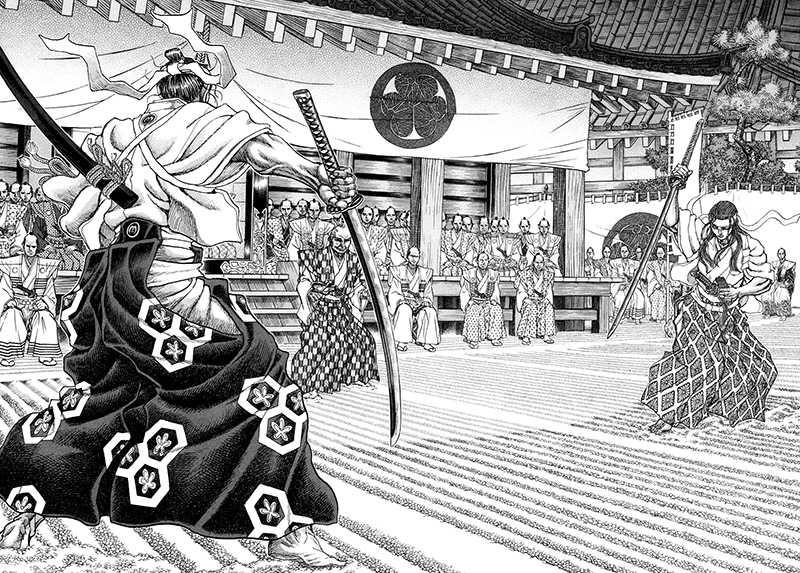
Shigurui by Norio Nanjō and Takayuki Yamaguchi is one of the most uncompromising samurai manga ever created. It’s brutal not only in its violence but also in its refusal to romanticize the era. Based on the opening chapter of Nanjō’s novel, it begins with daimyo Tadanaga Tokugawa’s infamous martial arts tournament where fighters must duel with real blades. The first bout pits a one-armed swordsman, Gennosuke Fujiki, against the blind and crippled Seigen Irako. Two men, whose bloody paths are revealed through a devastating backstory.
Rather than focusing on the tournament spectacle, Shigurui immerses us in the rigid, dehumanizing system that produced these men. We’re taken into the dojo hierarchy, poisonous rivalries, and the political intrigue of the time.
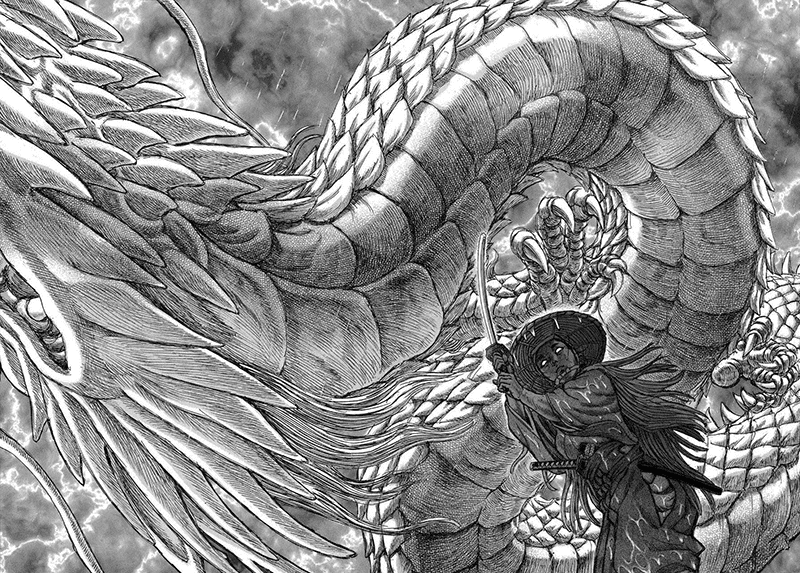
Shigurui’s artwork is extraordinary. Characters, nature, and architecture are rendered with obsessive precision, creating a vivid stage for moments of serene beauty and graphic horror. Limbs are severed, entrails spill, duels unfold with surgical precision. This isn’t gratuitous spectacle, but a historically grounded vision of violence. Few manga combine aesthetic beauty and gut-wrenching brutality as effectively as Shigurui.
Its greatest achievement, however, lies in how it portrays samurai culture as a system of cruelty, obsession, and spiritual rot. There are no true heroes here. Both Gennosuke and Seigen are products of a code that rewards power and punishes weakness. Their rivalry is the inevitable result of a society built on obedience, where honor matters more than life.
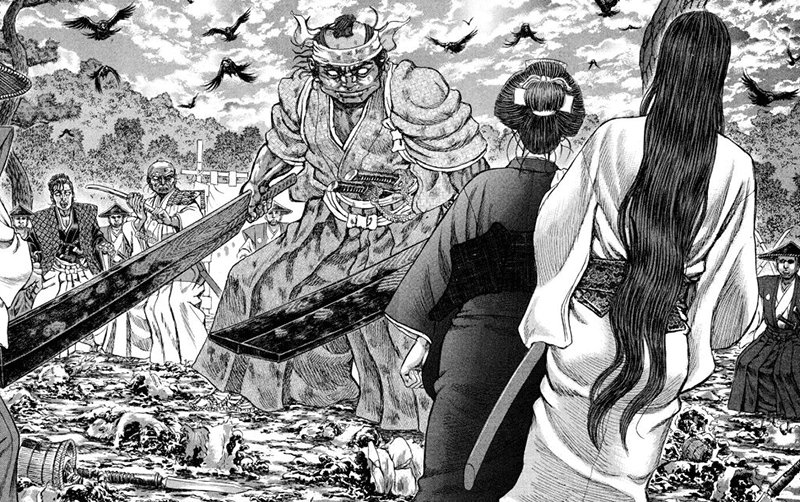
Even as you admire their skill or dedication, the manga makes you question its price. Even worse is the depiction of women. Lady Iku and Mie are nothing more than property: bargaining chips, victims, or ways to produce an heir.
That said, Shigurui isn’t flawless. Later chapters drift, with an entire arc devoted to minor characters unconnected to the protagonists and left unresolved. The adaptation stops well before covering the novel’s entire tournament, which may explain the abruptness of its final chapters. Still, the ending it delivers for the two leads is thematically satisfying. It’s the grim culmination of everything the manga set out to show, even if it feels rushed.
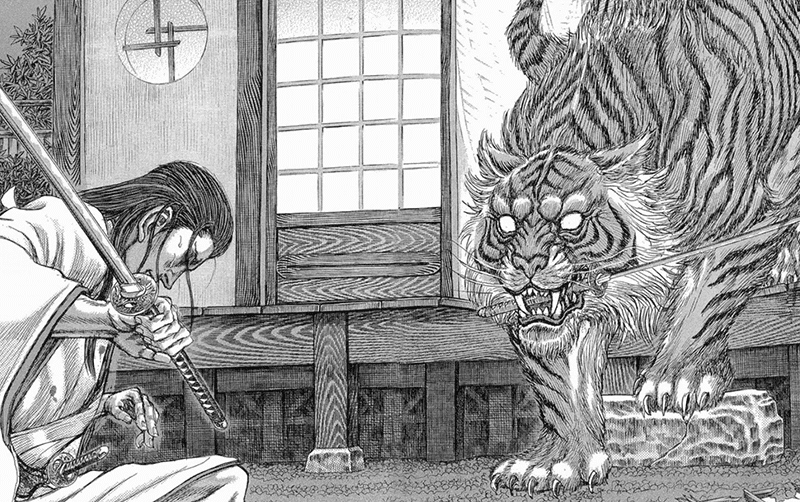
Despite these flaws, Shigurui stands as one of the best and most brutal samurai manga ever written, and one of the strongest seinen manga of all time. It offers a devastatingly realistic look at the darker side of Japan’s warrior past and gives us an unflinching portrait of beauty, discipline, and cruelty intertwined. Anyone interested in samurai culture, martial arts, or intense historical drama should read it.
Genres: Action, Historical, Drama, Tragedy, Martial Arts
Status: Finished
24. Oyasumi Punpun
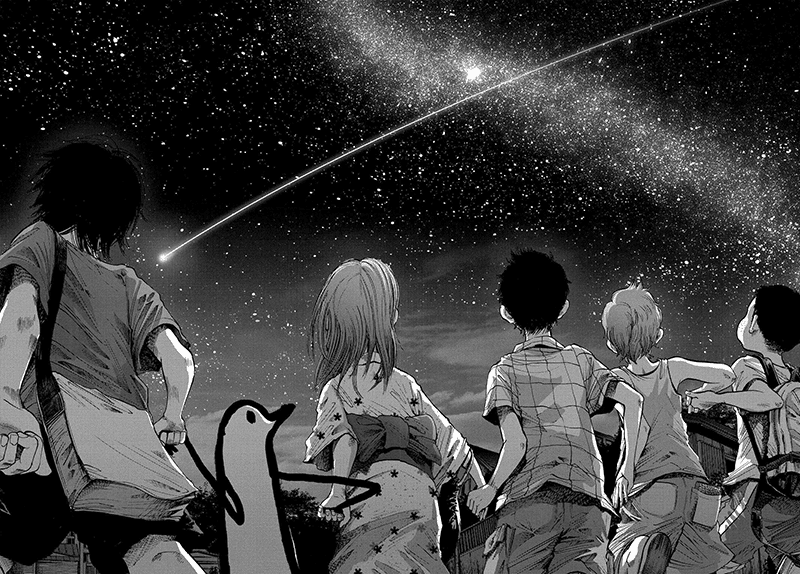
It’s impossible to talk about modern seinen manga without mentioning Oyasumi Punpun, Inio Asano’s undisputed masterpiece, and arguably one of the best seinen manga ever created. Famous for its unflinching portrayal of adolescence, alienation, and the slow corrosion of hope, this series is as dark and disturbing as it is brilliant.
The story begins innocently enough. Punpun Onodera is an awkward eleven-year-old boy living an ordinary life. He meets Aiko, a new girl in class, and falls into a first crush. But as his family life begins to crack and childhood illusions shatter, Punpun’s world starts its long descent into darkness. What starts as a slice-of-life coming-of-age story gradually transforms into the portrait of a young man sliding deeper into depression, addiction, and self-destruction. We follow Punpun through his school years, adolescence, and finally into adulthood, each stage shedding more of his innocence.
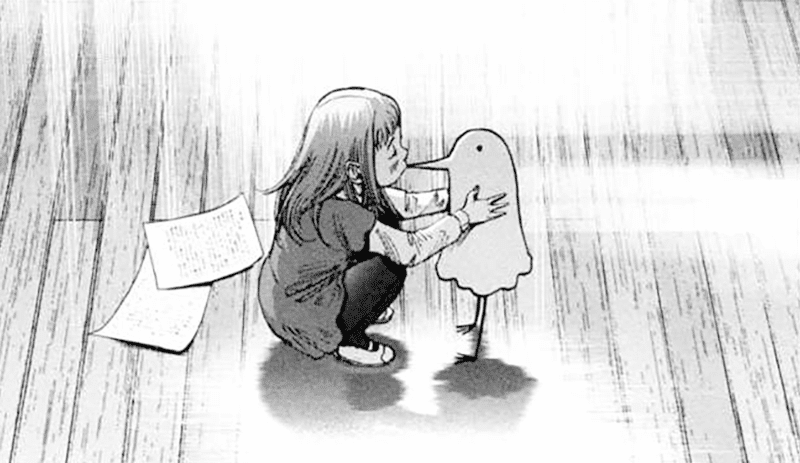
One of Oyasumi Punpun’s most striking features is its visual presentation. Asano’s backgrounds and supporting characters are rendered with hyper-realistic detail. In stark contrast, Punpun and his family appear as comical, bird-like figures. This deliberate choice puzzled me at first, but I soon realized how effective it was. It amplifies Punpun’s emotional isolation, making his awkward expressions and muted reactions stand out against the realistic setting. It’s a bold, surreal device that becomes one of the manga’s defining qualities.
Asano uses this juxtaposition to devastating effect. The story tackles abuse, sexual trauma, family dysfunction, depression, existential dread with a rawness rarely seen in manga. There’s nudity and sex, but it’s never glorified, and always used to make the reader uncomfortable and to highlight power dynamics, desperation, and emotional collapse. Punpun’s life is full of romantic failures, family issues, alcohol, and anxiety. Many characters are damaged or outright unlikeable, but that’s the point: Oyasumi Punpun isn’t trying to present us with paragons of virtue, but with real, flawed people.
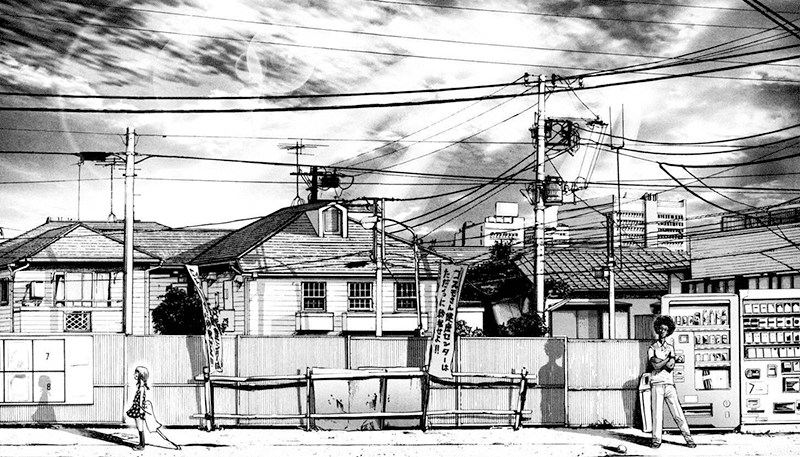
I found the earlier chapters the most powerful. There’s a fragile innocence in those parts, and an almost unbearable sense of inevitability as you watch a shy boy tilt toward darkness. Later arcs become more dramatic and, at times, feel self-indulgent. The final arc in particular spirals into melodrama, losing some of the grounded relatability of the earlier volumes. Likewise, chapters focusing on side characters sometimes felt like filler, pulling the focus away from Punpun himself. Yet even when the manga falters, its emotional momentum and honesty are undeniable.
What Oyasumi Punpun captures best is how small, seemingly insignificant choices can snowball into life-altering consequences. It’s a depressing, even suffocating work, but it’s not simply misery for misery’s sake. Beneath its bleak surface lies a thought-provoking exploration of identity, longing, and the invisible fractures that shape a person’s life. Each of us can see pieces of ourselves in Punpun’s fears, mistakes, or quiet hopes, and that’s what makes it so unsettling and relatable.

Inio Asano’s art style and narrative choices create one of the most unique and haunting manga experiences I’ve ever read. It’s not an easy read, at times downright painful, but it’s also one of the most honest and immersive coming-of-age stories in the medium. If you’re ready for a psychological manga that refuses to flinch or comfort, Oyasumi Punpun is a must-read and one of the greatest seinen manga ever created.
Genres: Psychological, Drama
Status: Finished
23. 20th Century Boys
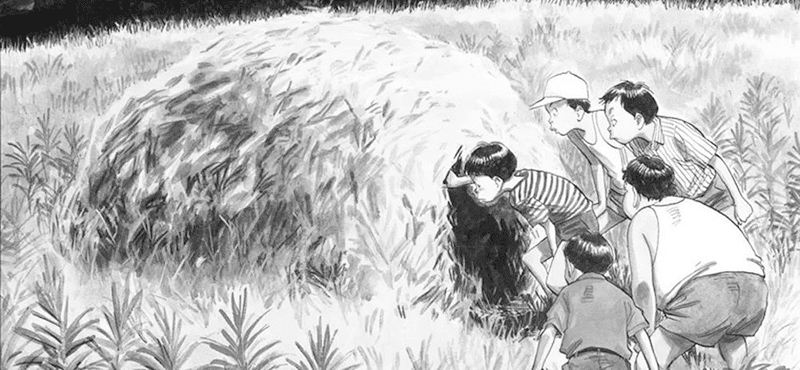
Naoki Urasawa’s 20th Century Boys is one of the greatest mystery manga of all time and easily one of the best seinen manga ever created. I first read it years ago, and to this day it’s one of those titles that comes to my mind when I think about gripping, character-driven thrillers.
The story follows Kenji Endo, a former musician turned convenience store clerk, whose ordinary life shatters when his childhood friend Donkey suddenly dies by suicide. At the same time, a bizarre cult led by a masked figure known only as Friend rises to power. Its symbols and rhetoric echo a Book of Prophecy Kenji and his friends invented as children. Realizing their childhood games may be predicting real-world events, Kenji reunites with his old friends to uncover how their youthful fantasies became a global conspiracy threatening humanity.
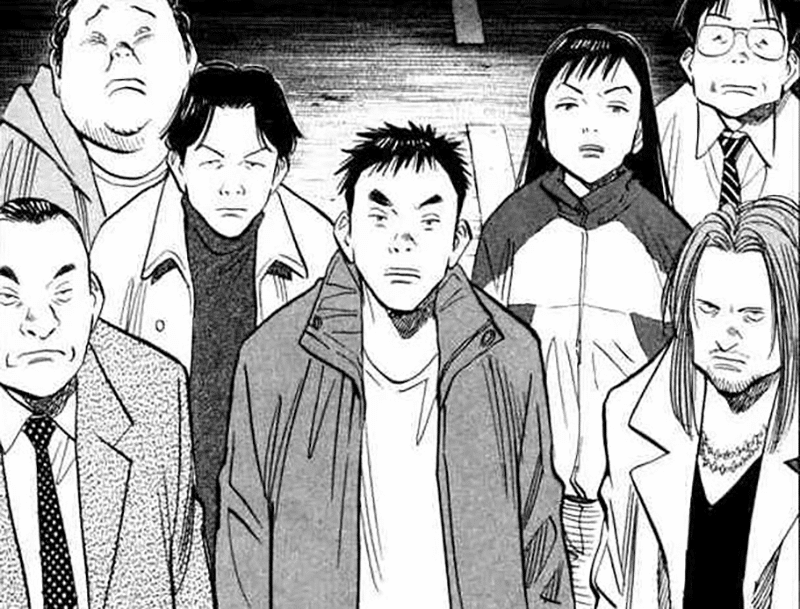
20th Century Boys spans three major arcs: the late 1990s, the year 2014, and the third year of the so-called Friend Era. Interspersed are flashbacks from the 1960s and ‘70s showing Kenji and his friends as kids. These timelines are masterfully interwoven, never confusing, and they deepen both the mystery and the characters. Urasawa’s handling of these childhood sequences, alongside the adult timelines, is one of the manga’s strongest achievements, making you feel nostalgia and dread in equal measure.
Urasawa’s art may look understated at first glance, but its power becomes obvious as you read on. Every character, no matter how minor, is instantly recognizable across the decades. His backgrounds are rich and detailed, and his paneling makes even time jumps feel seamless. This grounded style lets the manga juggle multiple eras without ever losing its clarity or atmosphere.
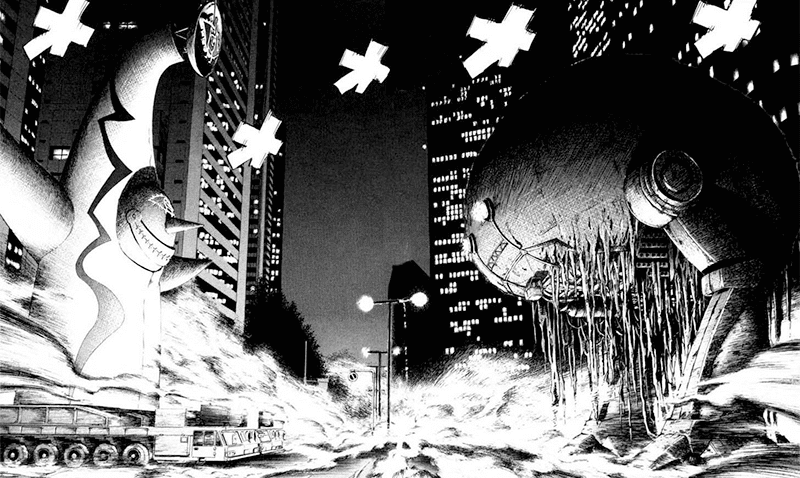
The first two arcs are some of the finest mystery storytelling I’ve ever read. They are layered with conspiracies, shifting alliances, red herrings, and aha moments that keep you constantly guessing. The Friend arc, however, is where the story lost me somewhat. It feels more detached from the grounded paranoia of earlier sections and introduces broader, nearly world-encompassing stakes that can seem overblown. Another frustration is just how many people end up entangled in the conspiracy. At times, it feels like the protagonists aren’t battling a hidden society, but the entire world.
Then there’s 21st Century Boys, the two-volume continuation that tries to wrap up the saga. It’s essential for closure, but it introduces more speculative and even VR-based elements that feel jarring after the earlier, more grounded tone. While it was satisfying to see the characters again, the tonal shift left me conflicted and added to the feeling that the mystery was never fully resolved.
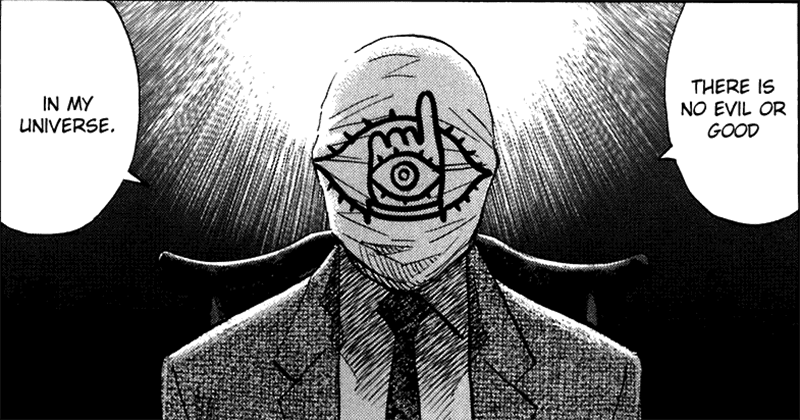
Despite these issues, 20th Century Boys remains a landmark seinen manga. It reinvents familiar conspiracy-thriller tropes with deeply human characters and a narrative that moves between nostalgia and paranoia, showing how childhood ideas can ripple into adult life. Its characters are richly drawn, its suspense is masterful, and even its flaws are born of ambition.
If you’re looking for a sprawling, suspenseful mystery packed with conspiracies, unforgettable characters, and an almost unmatched sense of intrigue, 20th Century Boys is a must-read. Even with its ambiguous, messy ending, it’s one of the best seinen manga of all time.
Genres: Mystery, Thriller
Status: Finished
22. Ichi the Killer
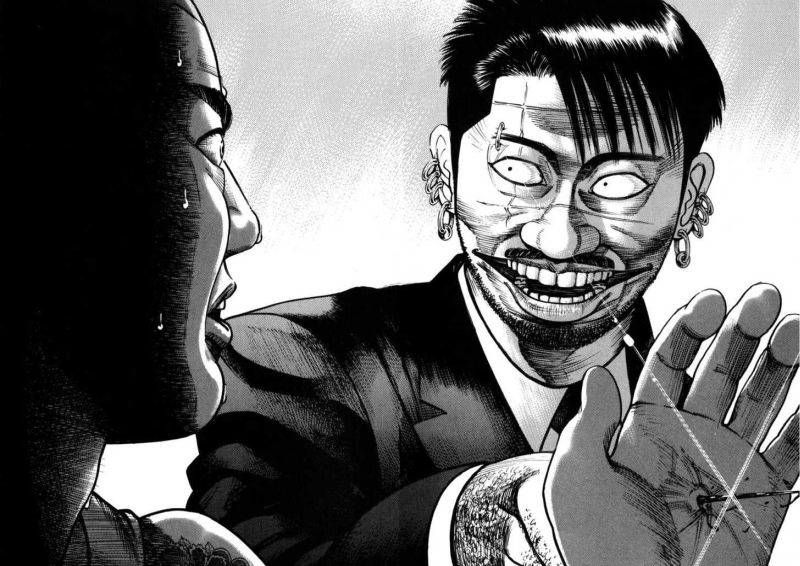
And now we come to one of the most graphic, disturbing, and infamous seinen manga ever created, Ichi the Killer by Hideo Yamamoto. It’s also one of the best seinen manga of all time. Known for pushing boundaries in his earlier work, Yamamoto truly outdid himself here. If his previous manga were strange, Ichi the Killer is downright unhinged.
At its core, Ichi the Killer follows two men locked in a grim orbit. One is Ichi, an enigmatic and deeply traumatized killer who butchers his victims with shocking brutality. The other is Kakihara, a deranged yakuza whose sadistic tendencies verge on the ritualistic. When Kakihara’s boss vanishes, his relentless search uncovers the truth about Ichi, setting the stage for an inevitable and horrifying confrontation.
Make no mistake: Ichi the Killer is not for the faint of heart. It’s infamous for its explicit depictions of violence, torture, sexual abuse, and psychological breakdown. But it is no mere gorefest. Beneath the extreme imagery lies a psychological study of sadism and masochism, identity disorder, childhood trauma, manipulation, and the cyclical nature of violence. Yamamoto weaves these themes together to create one of the most disturbing yet fascinating manga ever written.
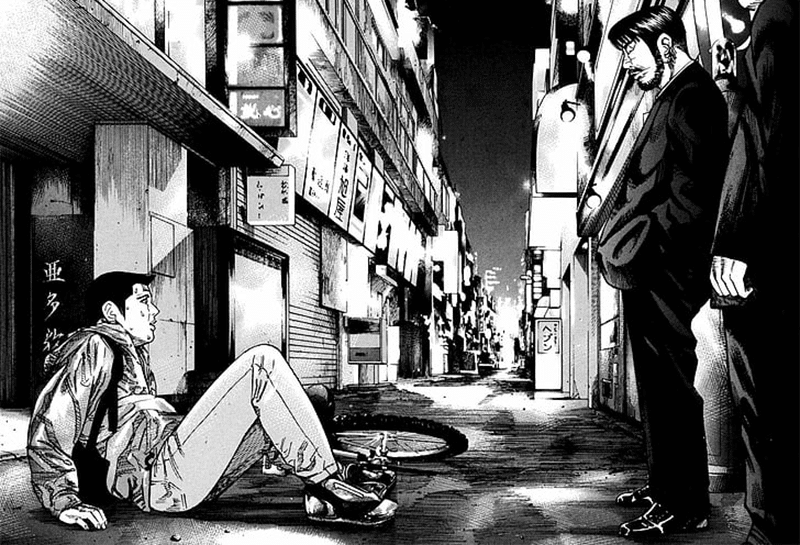
That’s also what makes Ichi the Killer so compelling. It doesn’t filter or flinch. Instead, it drags you deep into the darkest corners of human depravity while still pulling off a twisted character study. Over the course of the manga, we learn Ichi is far more complex than the mindless killer he first appears to be, and Kakihara is far more than a cartoon villain. This duality makes the story both unpredictable and horrifyingly intimate.
The art style amplifies everything. Yamamoto’s clean but exaggerated linework emphasizes distorted facial expressions and mental states, while his unflinching depictions of violence are both grotesque and mesmerizing. These overdrawn expressions give the characters a warped intensity that mirrors their unhinged psyche. The violence is shown in stunningly disturbing detail, enough to unsettle even seasoned horror-manga readers.
Of course, Ichi the Killer isn’t flawless. Some scenes verge on unbearably graphic, a few plot details remain unexplained or unrealistic, and the story sometimes feels chaotic. But that chaos also feels deliberate, and a part of the manga’s feverish transgressive energy.
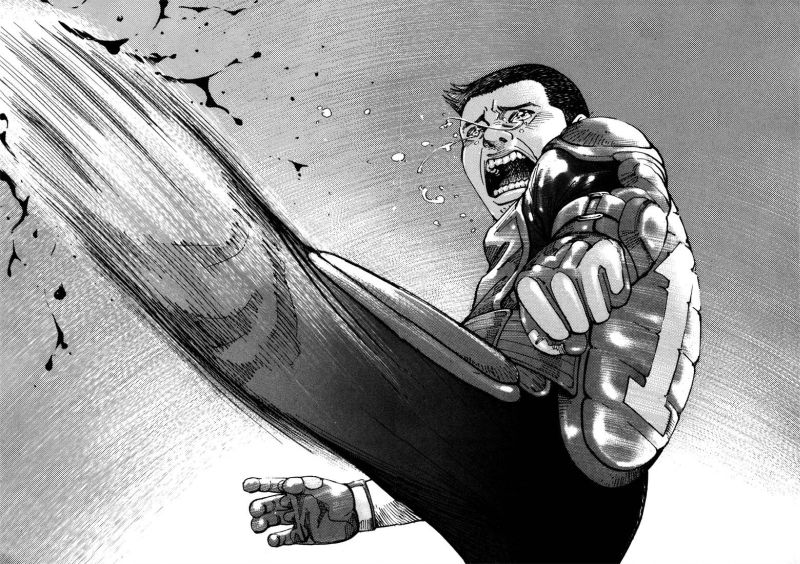
If you can stand the brutal violence and disturbing subject matter, Ichi the Killer rewards you with one of the most unique psychological thrillers in manga. It’s a mature, uncompromising descent into sadism, trauma, and identity, anchored by two unforgettable protagonists. For all its excesses, it remains one of the boldest and best seinen manga ever created.
Genres: Crime, Psychological, Gore
Status: Finished
21. Yamikin Ushijima-kun
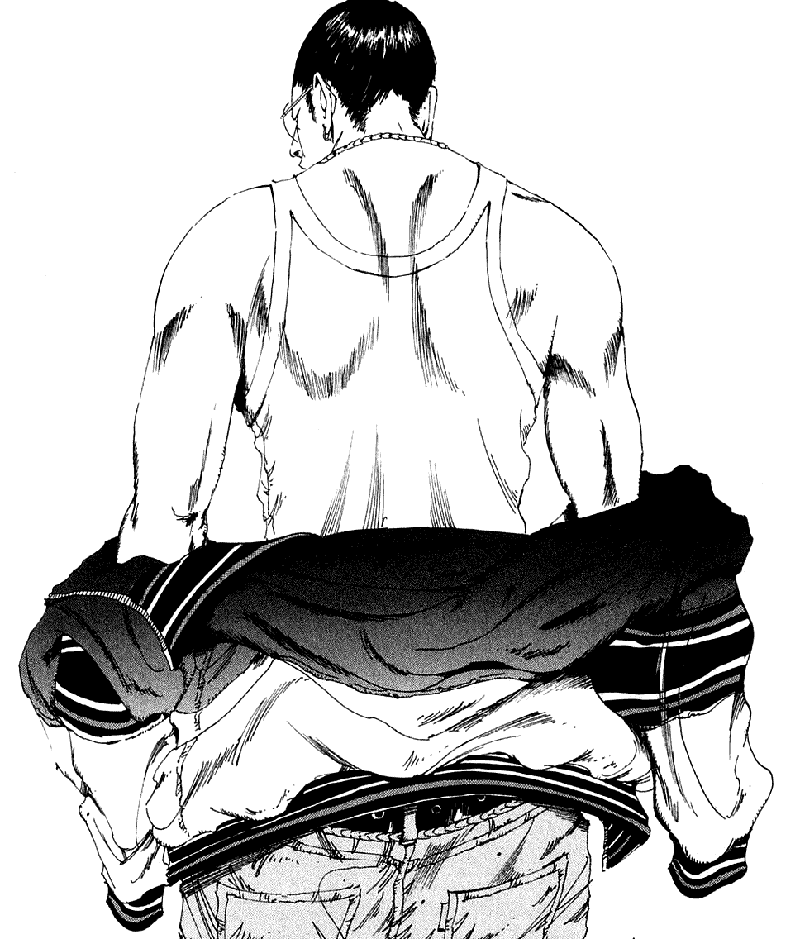
Yamikin Ushijima-kun by Manabe Shōhei plunges headfirst into the world of illegal money lending, a place where people get used, betrayed, tortured, and sometimes even lose their lives. If you enjoy darker, more twisted stories, this manga is one of the best crime-focused works out there and easily one of the best seinen manga I’ve ever read.
Kaoru Ushijima, the protagonist, runs a moneylending business with outrageous terms: 50-percent interest payable within ten days. Who would take such a deal? As the series shows, plenty of people: gambling addicts, overworked employees, desperate housewives, or simply people who’ve run out of options. Ushijima doesn’t care about their reasons. His job is to get his money back by any means necessary: prostitution, identity theft, extortion, even making brutal examples of those who cross him.
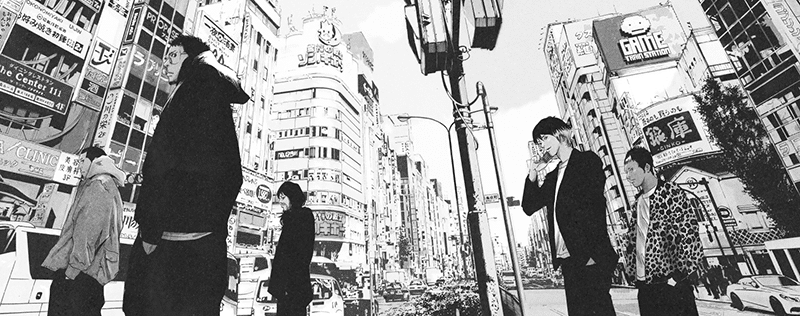
What makes Yamikin Ushijima-kun stand out is its grounded realism. There are no monsters, no supernatural killers, only human mistakes, systemic exploitation, and raw desperation. Each episodic story shows how deep you can fall and how fast your life can unravel. Most of these stories end in tragedy, but sometimes, amid the ruin, there are fleeting glimmers of hope. These moments feel almost out of place but make the darkness hit even harder.
Over time, the manga reveals Ushijima isn’t even the worst predator out there. Other players, like gangsters, scammers, corporate sharks, are far more ruthless, showing that in this underworld, even a protagonist like him can be sympathetic by comparison. This inversion makes Yamikin Ushijima-kun especially fascinating: you often end up rooting for Ushijima simply because everyone else is even worse.
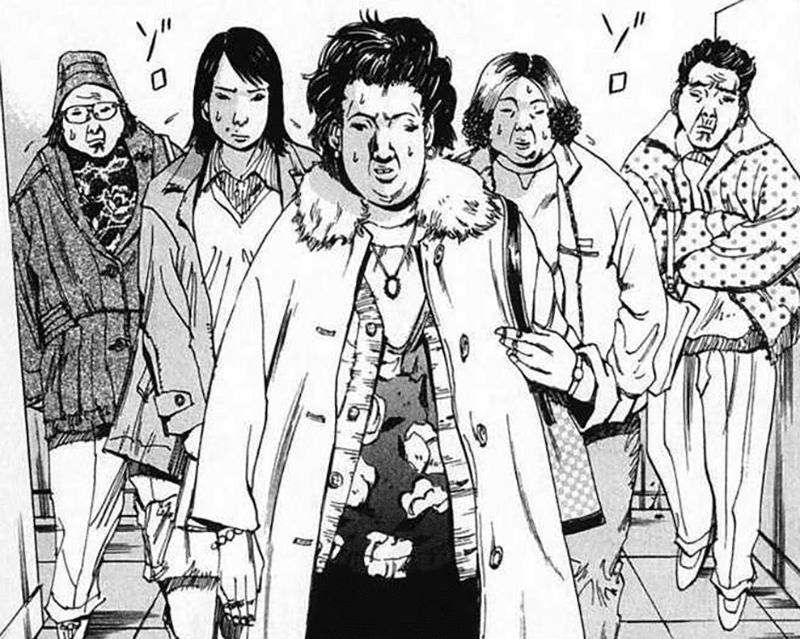
Manabe Shōhei’s art perfectly matches the story’s tone. It’s gritty, grimy, and unrefined, exactly right for a manga about society’s underbelly. Characters look like real, flawed people rather than stylized manga archetypes, which heightens the oppressive atmosphere. The paneling is clear and functional, focusing on realism over spectacle, and giving the world of Ushijima a claustrophobic sense of authenticity.
While the early chapters revolve around Ushijima’s schemes, later arcs broaden the focus, following the lives of those ensnared by debt. These longer, more intricate stories are heartbreaking, fascinating, and often unforgettable, and they’re where the manga truly shines. They show in excruciating detail what drives people to Ushijima’s office and what happens when they can’t pay up.
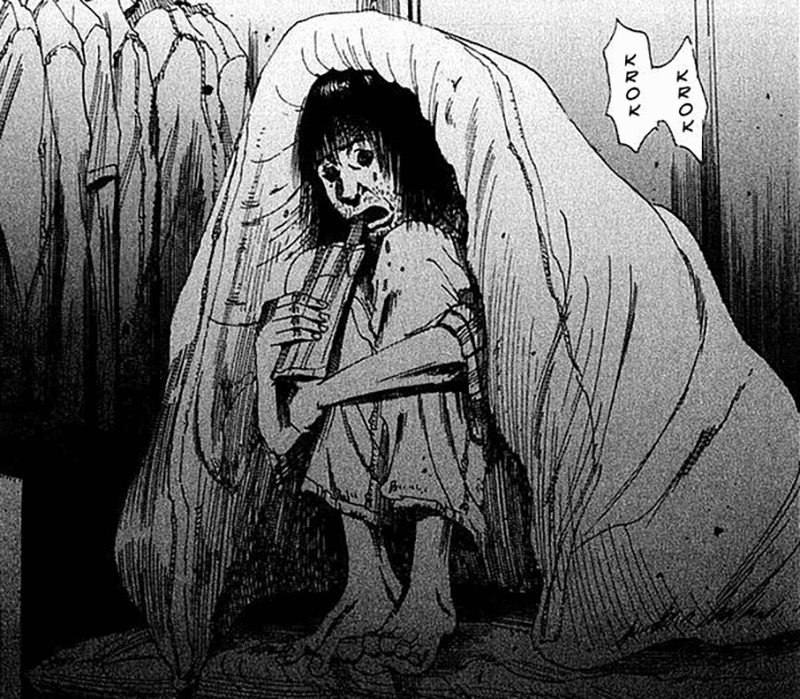
Yamikin Ushijima-kun isn’t meant to glamorize crime. It’s unpleasant by design and a cold, unflinching portrait of Japan’s dark underbelly. It shows how easy it is to make mistakes, how bad luck compounds, and how predators exploit weakness. But precisely because of that, it’s compelling.
Among crime manga, Yamikin Ushijima-kun is in a class of its own. It’s dark, grounded, and disturbingly realistic, and while its characters are often unlikeable, its stories are unforgettable. If you’re looking for a gripping, unflinching portrayal of the darker sides of society, this manga is a must-read.
Genres: Crime, Psychological, Drama
Status: Ongoing
20. Dorohedoro
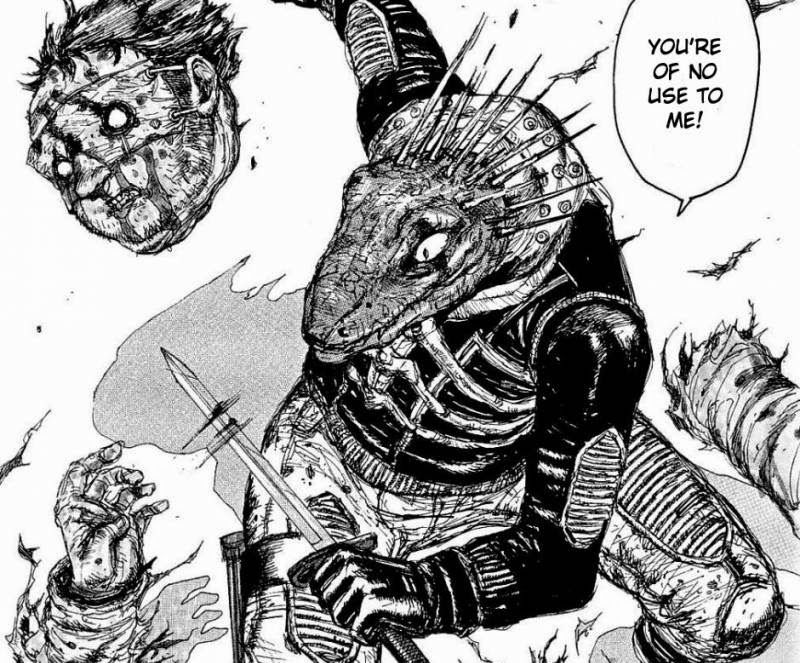
There are weird manga, and then there’s Dorohedoro by Q Hayashida. This series is a grotesque, absurd, and endlessly inventive urban nightmare. Yet somehow also hilarious and even heartfelt. It’s one of the strangest, most brutal, and most unforgettable seinen manga ever created.
The story takes place in the decrepit city of Hole, a grim urban sprawl connected to the Sorcerer’s World. This connection has turned Hole into a testing ground where magic users casually experiment on the powerless, leaving behind grotesque transformations, corpses in the streets, and a population desensitized to magical atrocities.
Our protagonist, Kaiman, is an amnesiac man with a reptilian head and immunity to magic. Believing he’s one of the sorcerers’ victims, he hunts them down with his friend Nikaido, hoping to discover what happened to him and who he really is. What begins as a revenge story spirals into a much stranger narrative about secret histories, bizarre power struggles, and the connection of both worlds.
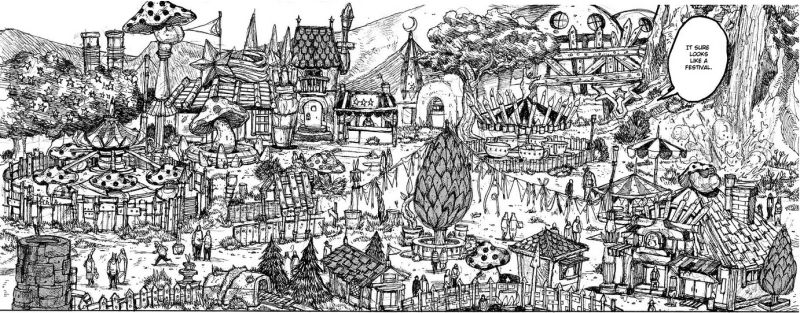
The dualism of Dorohedoro is what makes it so compelling. One moment you’re watching Kaiman and Nikaido butcher sorcerers in grimy hallways, the next you’re laughing at mushroom-obsessed villains, giant cockroaches, or absurdly deadpan jokes. It mixes death, carnage, and gore with slapstick comedy and an odd warmth unlike anything else in manga.
Hayashida’s art and worldbuilding are just as striking. Hole is a festering urban labyrinth, while the Sorcerer’s World is a surreal gothic playground. Both are rendered in dense, gritty detail and are an absolute delight to look at. Her creature and character designs are as outlandish as they are unforgettable, whether it’s mutants, sorcerers, gangsters, or monsters.
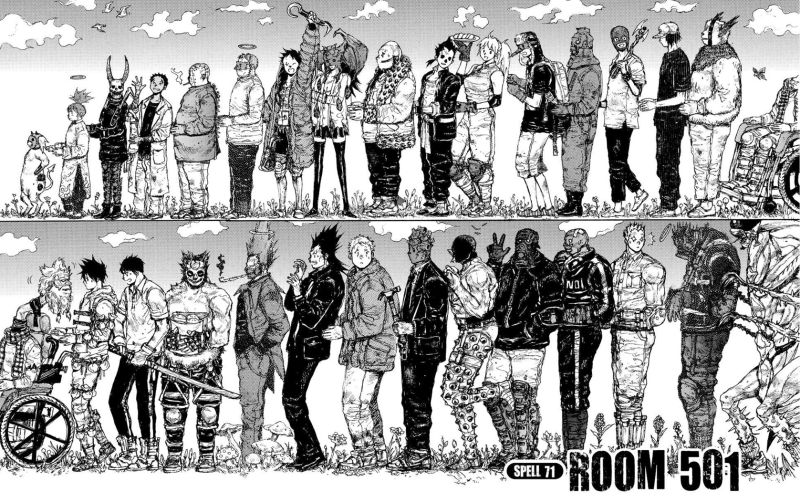
What’s most interesting is how morally gray everyone is. Neither the inhabitants of Hole nor the sorcerers are painted as purely good or evil. Instead, the sprawling cast is filled with oddballs and villains who somehow become lovable. Early on, the story centers on Kaiman, but as it progresses, it reveals deep ties between him, the city of Hole, and the Sorcerer’s World, shifting focus to an ensemble epic.
While Dorohedoro is often lighthearted, it’s also extremely violent. Heads explode, bodies melt, and characters undergo grotesque transformations that often verge on genuine nightmare fuel. This is most prevalent in the manga’s later arcs, where Hayashida fully unleashes her most twisted ideas. For all its humor, this is not a manga for the faint of heart.
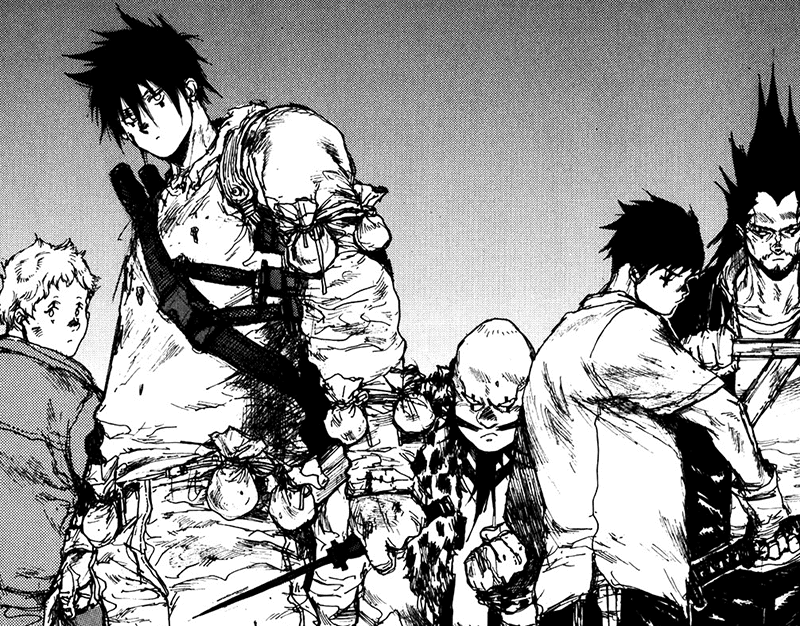
There’s also an underlying question: is all this weirdness and complexity purposeful, or chaos for chaos’ sake? For some readers, the ever-expanding mythology might feel overwhelming, but for others, it’s a feature that fully immerses them in Q Hayashida’s vision.
Wildly violent yet weirdly human, Dorohedoro is one of the most original manga I’ve ever read. Its mix of absurd humor, horror, and surreal worldbuilding makes it a unique experience and one of the best seinen manga of all time. If you’re interested in horror, dark fantasy, or surreal fiction, you need to check it out.
Genres: Horror, Fantasy, Supernatural, Mystery, Slice of Life
Status: Finished
19. Gantz
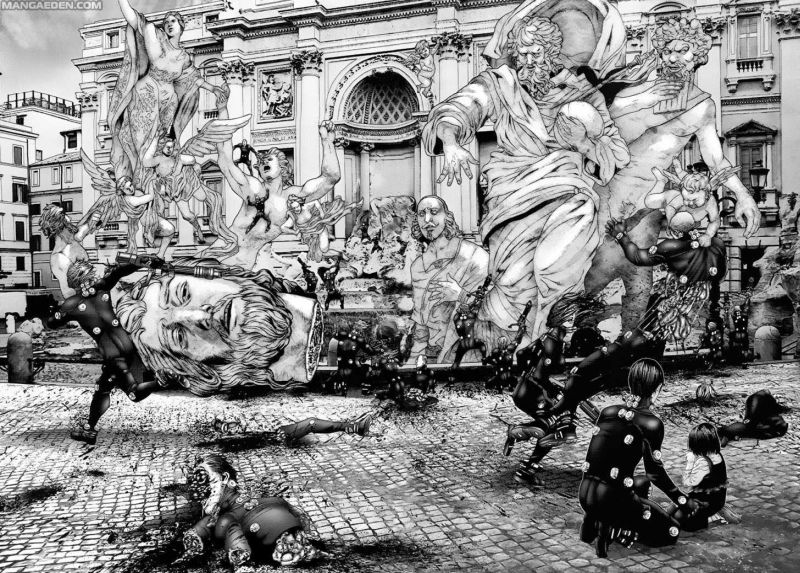
Hiroya Oku’s Gantz is one of the wildest manga I’ve ever read. It’s an ultra-violent, surreal mix of science-fiction, horror, and action that also stands as one of the most iconic seinen manga ever made. Few series can match its combination of grotesque alien designs, bleak worldview, and relentless spectacle.
The story begins when Kei Kurono and his childhood friend Masaru Kato die saving a drunk man from an oncoming train. Instead of dying, they awaken in a strange Tokyo apartment alongside other confused strangers. At the center of the room sits a giant black sphere called Gantz, which informs them they’ve been drafted into a deadly game: hunting down aliens hiding among humans. Soon after, the first hunt begins, where death is almost guaranteed. This opening mission sets the tone for nearly 400 chapters of escalating carnage.
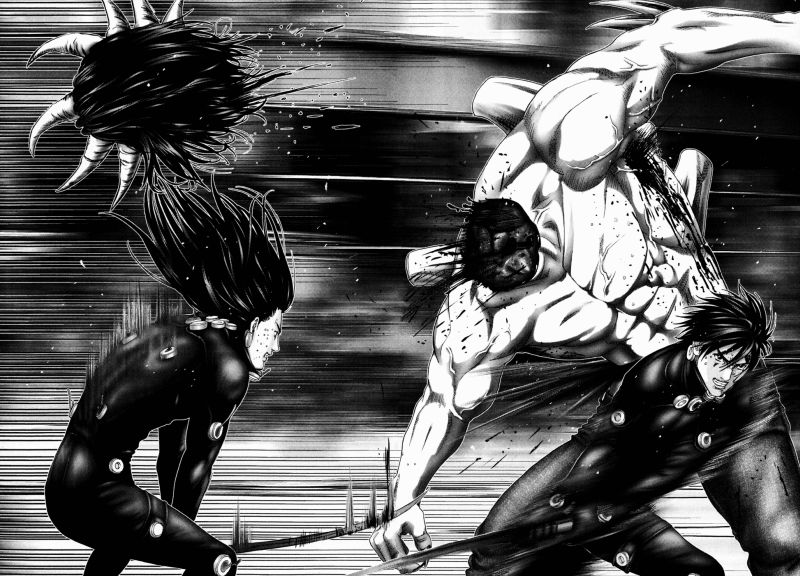
At its core, Gantz is about brutal alien hunts. It’s high on action and often low on dialogue, with fluidly drawn violence and glorified gore that’s as creative as it is shocking. The aliens are one of the series’ biggest draws. Their design is unique, surreal, and often terrifying. Battles are chaotic and unpredictable, with characters being dismembered or wiped out in seconds. Unlike most battle manga, it’s the humans who are disposable. Death is a normal part of Gantz, and anyone can die at any time.
Yet what makes Gantz stand out isn’t only the action, but also its absurd premise, grim world, and its standout protagonist. Outside the missions, Oku shows a Japan riddled with bullying, exploitation, sexual violence, and even mass shootings, giving the story a dystopian edge beyond the science-fiction battlefield.
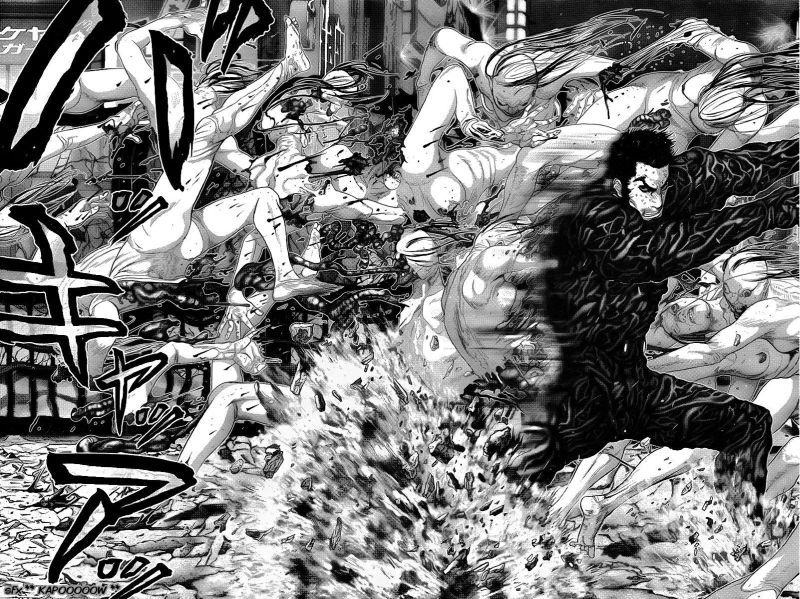
Kei Kurono’s arc is especially memorable. He begins as a selfish, unlikeable teenager that you can’t help but dislike, but develops tremendously over time. Through trauma and survival, he becomes the leader of the Gantz team, growing in courage and empathy in one of the more satisfying protagonist evolutions in action manga. Most of the supporting characters are equally distinct, with their own quirks, motivations, and abilities, which makes every mission feel high-stakes.
Still, Gantz isn’t without flaws. Its length shows in a sprawl of experimental subplots and dangling threats that never truly get resolved, most notoriously, the vampire storyline. The final mission veers into strange territory with a full-on alien invasion and a rushed, confusing climax that feels like Oku was making things up on the fly. I understand the ideas he wanted to explore, but they feel compressed and had too little breathing room.
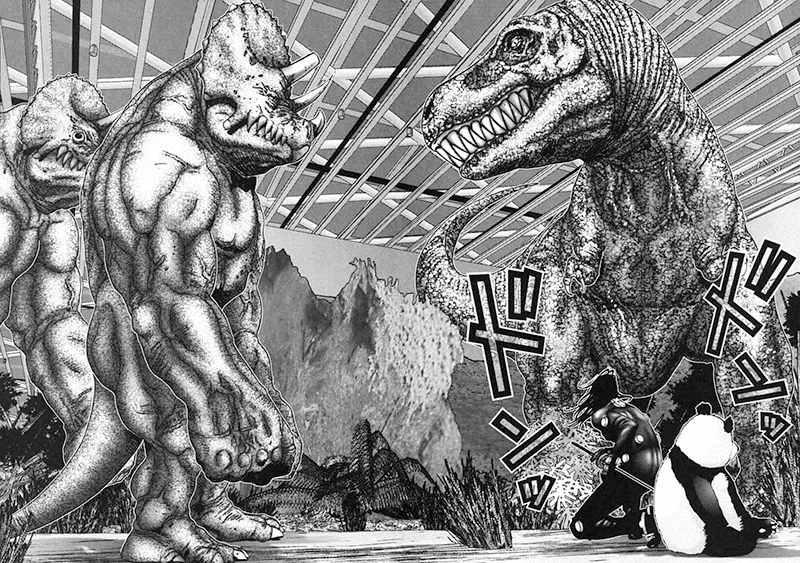
Even with these flaws, Gantz remains a weird, brutal, and gory mess in the best way possible. Its monster design is unmatched, its action is among the best in manga, and its willingness to kill off characters keeps tension sky-high. During the missions, Gantz is at its absolute best, delivering some of the most intense and unpredictable battles ever drawn.
Brutal, experimental, and visually stunning, Gantz is a landmark seinen manga. If you want a series that’s as disturbing and unpredictable as it is thrilling, this blood-soaked horror-science-fiction epic is a must-read.
Genres: Horror, Action, Psychological, Sci-Fi, Alien
Status: Finished
18. Liar Game
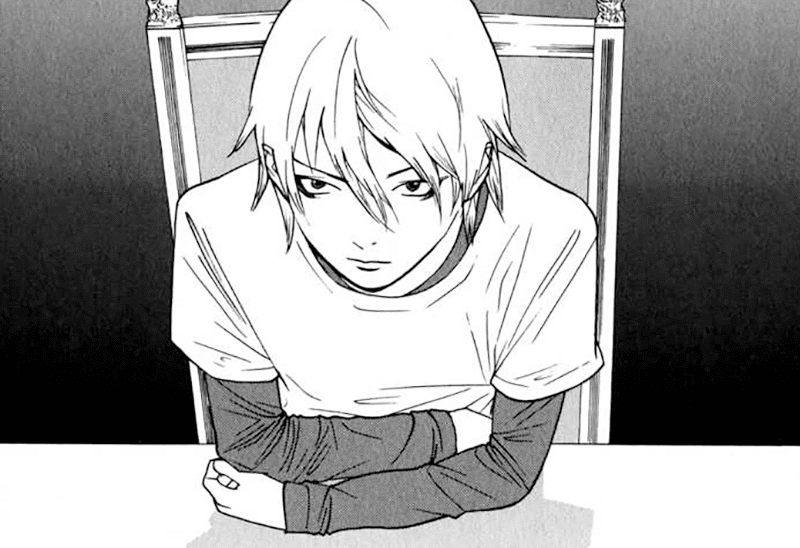
Shinobu Kaitani’s Liar Game is one of my favorite mind-game manga of all time and also one of the best seinen manga ever written. It combines high-stakes psychological warfare, intricate strategy, and a steady escalation of tension into a truly addictive reading experience.
The story begins with Kanzaki Nao, a painfully honest and naïve young woman who is suddenly drafted into the Liar Game, a competition built entirely around deceit, manipulation, and mental warfare with stakes reaching into the hundreds of millions of yen. Nao is quickly conned out of her money, but when she learns that Shinichi Akiyama, a legendary swindler and psychological genius, has been released from prison, she seeks his help. Initially reluctant, Akiyama soon joins forces with her, and together they begin dismantling the game from inside.
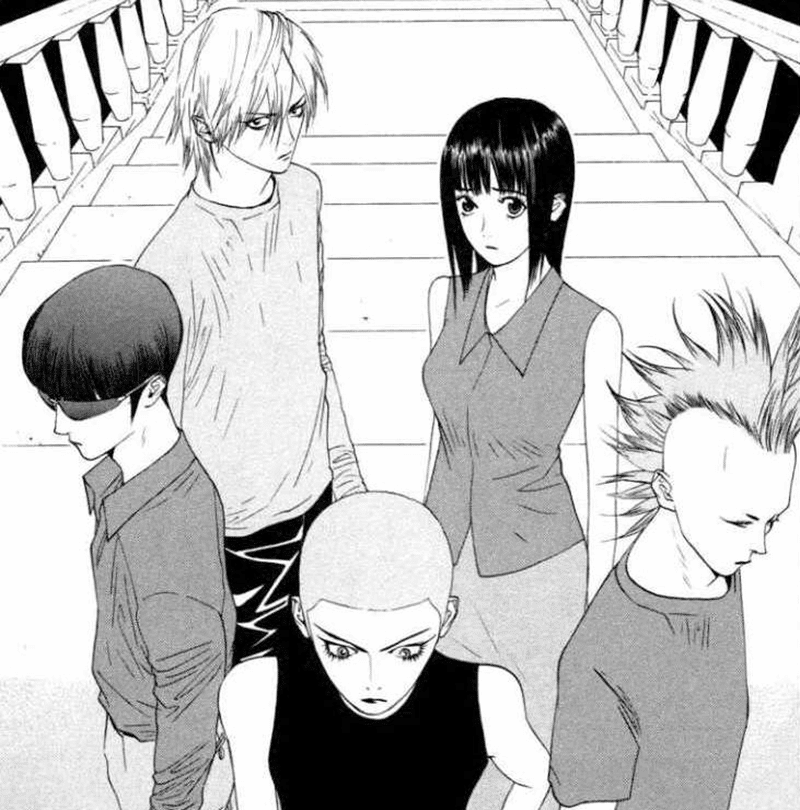
What makes Liar Game so gripping are its ingenious rounds. Early matches start out deceptively simple, but each successive game raises the complexity and psychological tension, forcing both characters and readers to think several steps ahead. Watching Akiyama’s mind work, the traps he sets, and the counter-traps from his opponents is consistently electrifying.
The rivals also elevate the manga. Characters like Yokoya and Harimoto become true power players, pushing Akiyama to his limits and turning the story into a masterclass of strategy and one-upmanship. While some side characters are one-note archetypes, the series reaches new heights whenever it introduces a great rival or an especially complex game. The Contraband Game, in particular, is a standout moment where the manga’s elaborate twists and psychological tactics truly shine.
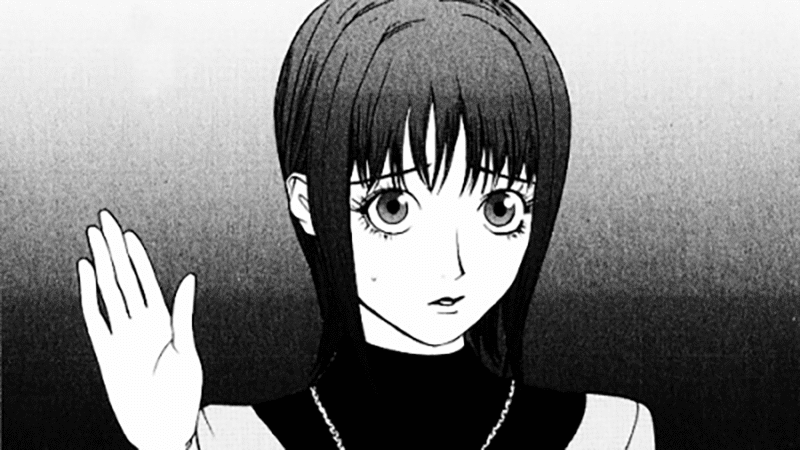
Visually, Liar Game’s art is clean and functional. Characters are distinct, environments well drawn, and the layouts easy to follow. The exaggerated facial expressions can feel overdone at times, but they also add a theatrical touch to the series’ many big reveals.
The manga has flaws. Some of the rule explanations go on for pages and may alienate readers who prefer a quicker pace. Another problem is the ending, which feels anticlimactic and as if the story was cut short. Still, none of this undermines how consistently thrilling the ride is.
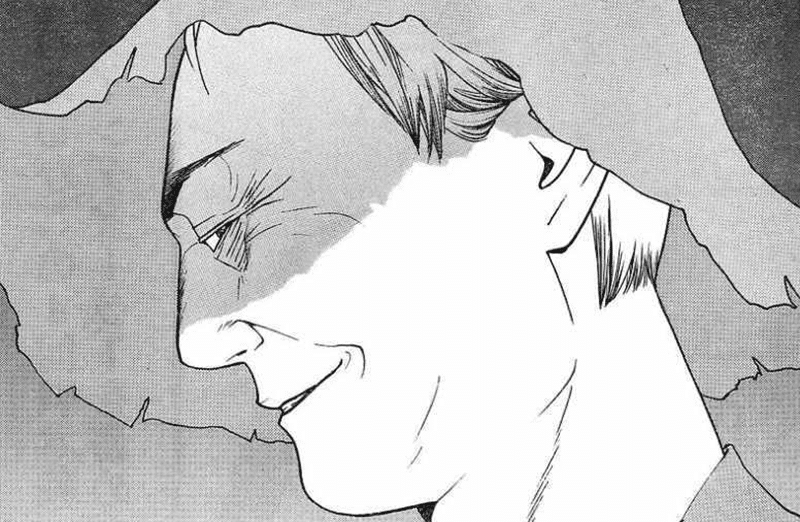
For anyone who loves clever mind games, psychological ploys, and shifting alliances, Liar Game is a must-read. It’s smart, suspenseful, and endlessly creative, and one of the best seinen manga of all time.
Genres: Psychological, Thriller, Mystery
Status: Finished
17. Bokutachi ga Yarimashita
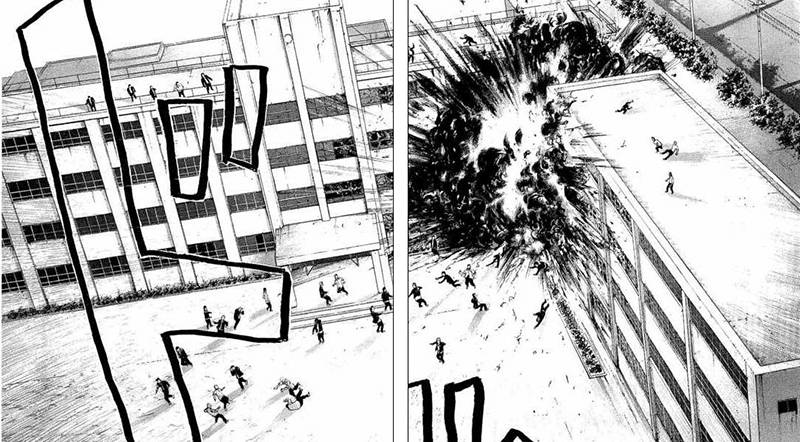
I first picked up Bokutachi ga Yarimashita while looking for other works by Kaneshiro Muneyuki. At first, I didn’t know what to expect. It looked like a simple slice-of-life or delinquent story, but soon became one of the darkest seinen manga I’ve ever read. What begins as an ordinary high school drama spirals into a harrowing exploration of guilt, redemption, and the lasting consequences of one reckless decision.
The manga follows Tobio Masubuchi and his three friends, Isami, Maru, and Paisen. The four of them are average teenagers drifting through life. They’re immature, impulsive, and not particularly heroic. Their uneventful existence changes when Maru is beaten up by delinquents from a neighboring school. The group hatches a revenge prank intended to even the score, but the prank goes horribly wrong. What should’ve been harmless retaliation ends in deadly tragedy, shattering their lives overnight.
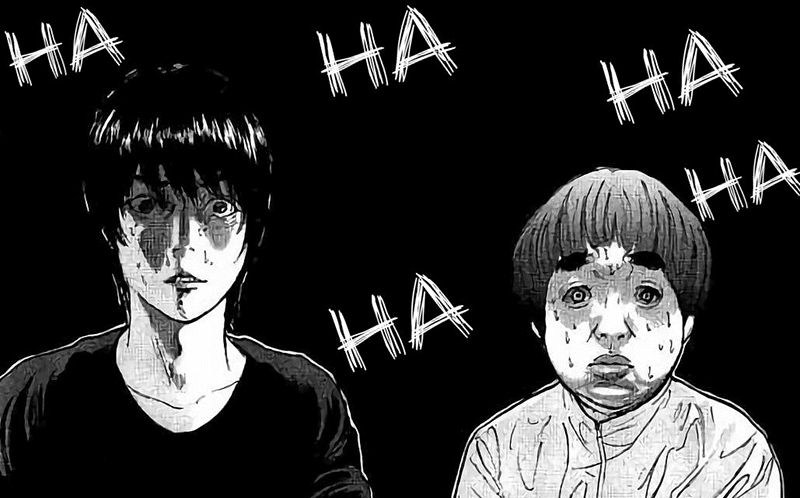
From here, Bokutachi ga Yarimashita becomes less about what happened and more about how its characters cope. It’s a purely character-driven story, and its power comes from portraying weakness rather than heroism. Tobio and his friends aren’t saints, but kids in over their heads, trying to escape the consequences of something they can barely process. Watching them unravel under the weight of guilt, fear, and desperation is deeply uncomfortable. It’s also impossible to look away from.
Kaneshiro’s storytelling is superb. The pacing is tight, the tension rises steadily, and the psychological pressure never lets up. The art may not be flashy, but it excels in facial expressions and body language, capturing the characters’ mental state in excruciating detail. This subtle expressiveness makes every emotional collapse feel authentic.
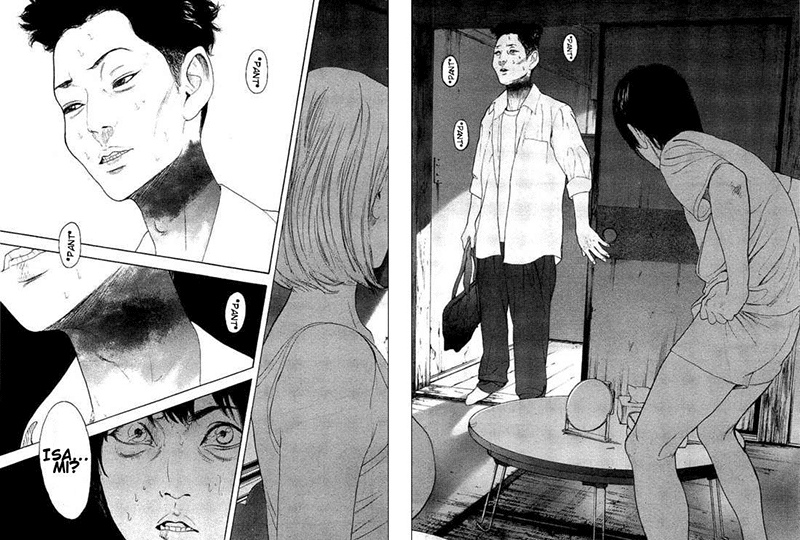
Thematically, Bokutachi ga Yarimashita digs into themes of guilt, redemption, friendship, love, and the fragility of youth itself. There’s no magical ending here, no catharsis where everything resets. Life goes on, and the characters must live with what they’ve done. That bleak realism is part of what makes the manga so powerful.
Reading Bokutachi ga Yarimashita was one of the most unique experiences I’ve had with manga. It’s a dark, suspenseful, and deeply psychological story that makes you uncomfortable at a level far deeper than shock value alone. For me, it was the best manga I read that year, and it remains one of the most haunting seinen manga I’ve ever encountered.
Genres: Psychological, Crime, Drama
Status: Finished
16. Kingdom
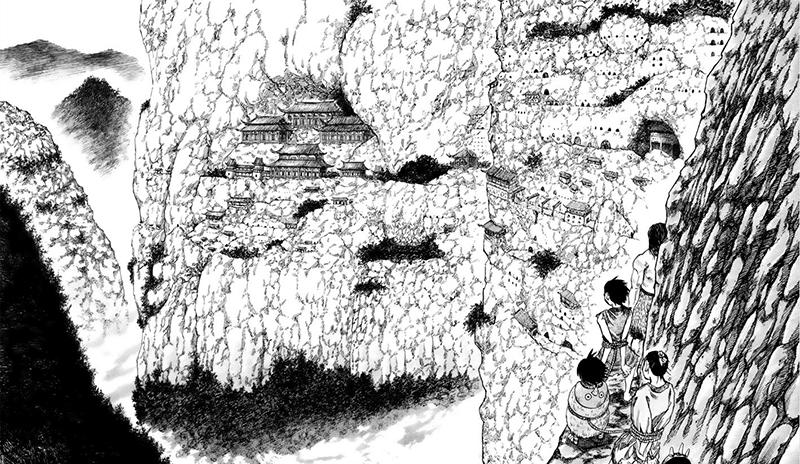
Kingdom by Yasuhisa Hara is one of the most popular historical and military manga ever created, and for a good reason. It’s an epic, sprawling saga of war, politics, and ambition that takes place during China’s Warring States period. Even for someone like me, who’s read dozens of military or historical manga, Kingdom stands out as one of the most ambitious and rewarding.
The story begins with Shin, a young servant boy, and Ei Sei, the soon-to-be king of Qin. When a rebellion breaks out, Shin is thrown into the political chaos and sets off on a journey to fulfill his dream of becoming a Great General under the Heavens. From that point forward, his path intertwines with Ei Sei’s quest to unify China.
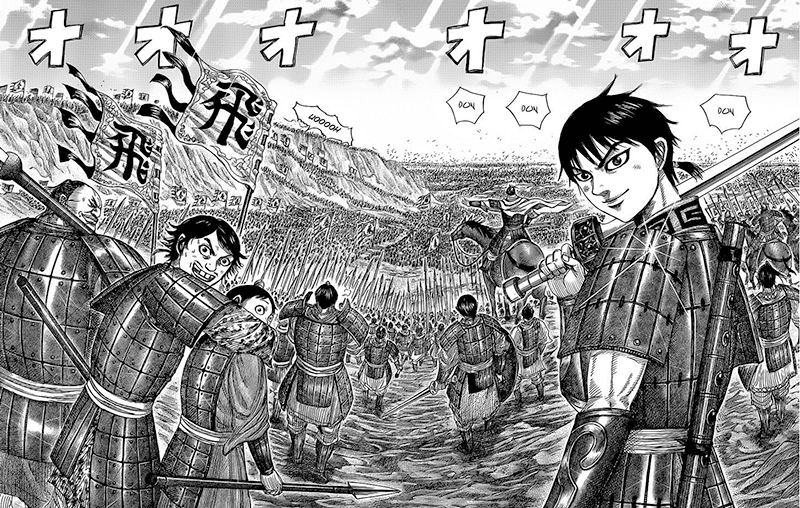
Kingdom’s scope is staggering. With over 800 chapters and counting, it’s one of the longest ongoing manga and still far from finished. The series focuses on the wars and power struggles that shaped early Chinese history, but its centerpiece is the battlefield. Armies in the tens or even hundreds of thousands clash in massive engagements, and Hara presents them in stunning, painstaking detail.
The greatest part of Kingdom’s battles isn’t just the scale, but the tactics. Every campaign features carefully explained formations, strategies, and psychological feints. Readers are treated to entire chapters of maneuvering, counters, and gambits, making each fight feel like both a war epic and a high-stakes chess match.
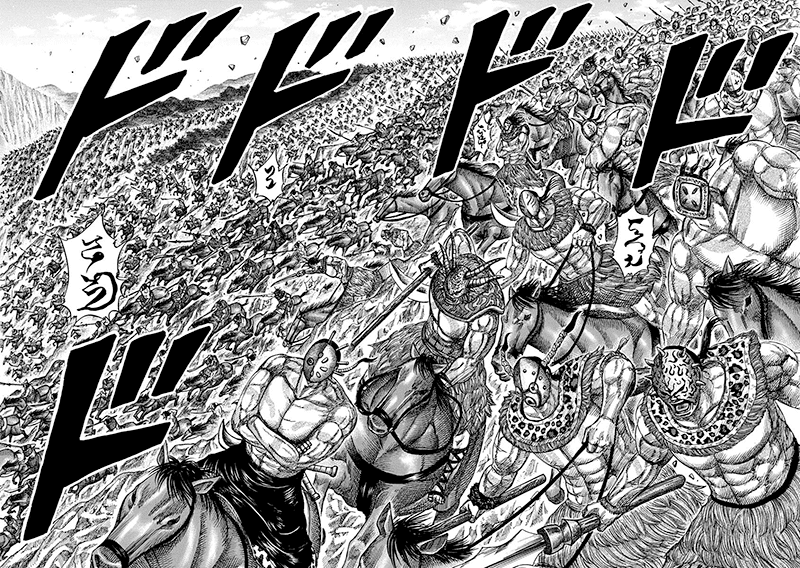
At the same time, Kingdom devotes significant attention to politics. Ei Sei’s struggle against Chancellor Ryo Fui, who plots to overthrow him and seize the throne, provides a compelling counterpoint to the battlefield scenes. We also see events unfold across the other rival states, expanding the world beyond Qin and giving a sense of a living, shifting political landscape. This dual focus keeps the narrative layered and fresh.
Visually, Kingdom starts off with art that’s merely functional. In the earliest arc, the Sei Kyo Rebellion, the drawings do their job but feel more like a typical shonen series than a historical seinen manga. Once the story reaches its first true large-scale battle, however, Yasuhisa Hara’s art rapidly improves. The sprawling cities of ancient China, the massive walled fortresses, and the choreography of mass combat become breathtaking spreads that showcase just how far his craft has developed.
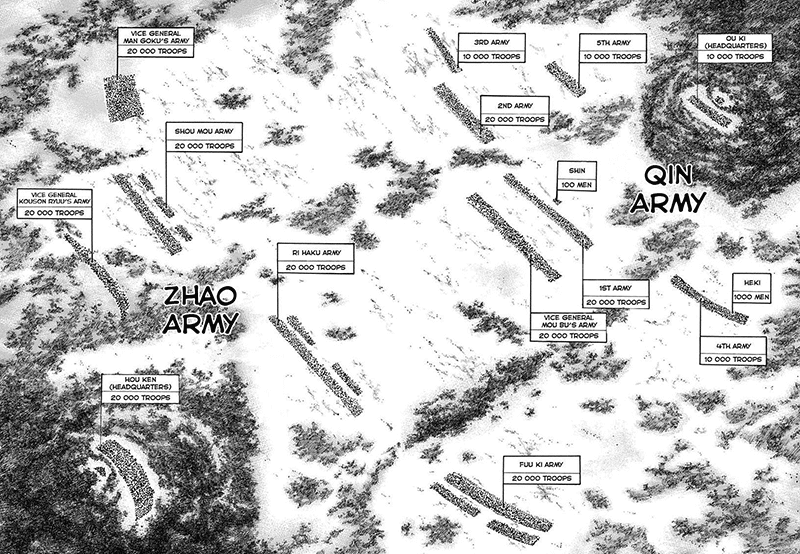
The cast of Kingdom is as vast as its scope. Standouts include Ei Sei himself, the brilliant but ruthless Ryo Fui, the legendary General Ou Ki, and the strategic genius Riboku. Yet the protagonist Shin remains a weak point for some readers, including myself. Raised as a servant boy with his friend Ri Hyou, Shin dreamed of becoming a general and sparred daily to hone his skills. But even early on, Shin’s martial prowess stretches believability, when he battles and defeats trained swordsmen and assassins despite his youth. He’s also written as a hothead, typical shonen lead whose greatness is repeatedly recognized by those around him. This characterization can feel forced, especially in the early arcs.
Fortunately, Kingdom doesn’t live on Shin alone. The focus is always on the broader picture, the statecraft, politics, and strategies, with Shin more our window into the action than its sole driver.
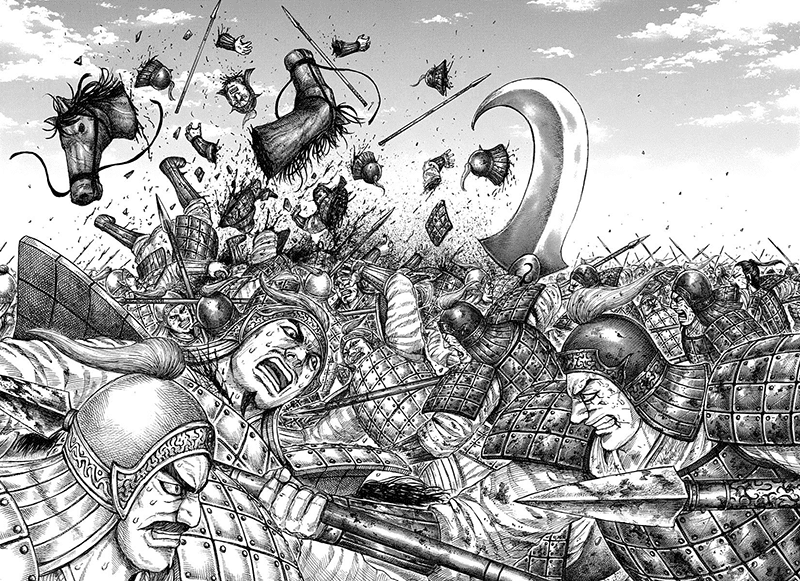
A word of warning: Kingdom takes liberties with historical accuracy. Names, events, and timelines are often condensed, dramatized, or romanticized. That’s less a flaw so much than an expected trade-off for turning real history into a serialized manga, but purists should be aware.
Despite these criticisms, Kingdom is a masterclass in military storytelling and political drama. Once you push through the uneven opening arc, you’re rewarded with one of the grandest epics ever drawn. Whether you’re drawn to strategy, history, or character-driven war narratives, Kingdom offers all three, and it only gets better as it goes on.
For anyone interested in large-scale warfare, political intrigue, or the human story behind history’s greatest struggles, Kingdom stands as one of the best seinen manga of all time.
Genres: Historical, Military, Strategy
Status: Ongoing
15. Innocent
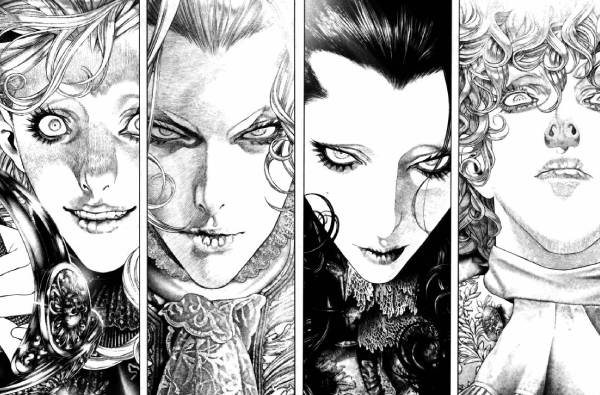
Innocent and its direct sequel Innocent Rouge by Shinichi Sakamoto are among the most visually stunning and thematically daring seinen manga ever created. Set in 18th-century France on the eve of the Revolution, the series follows Charles-Henri Sanson, the royal executioner of Paris, and later his sister, Marie-Joseph, as they navigate duty, power, and the decay of a collapsing society.
At its heart, Innocent is a historical drama about the infamous Sanson family, whose legacy of public executions places them at the dark center of French history. But Sakamoto doesn’t merely dramatize history; he transforms it into a grand opera. Characters enter scenes like actors on a stage, events unfold as theatrical acts, and the manga’s tone veers between intimate melodrama, grotesque spectacle, and surreal metaphor. One moment you’re witnessing a meticulously drawn execution; the next, a character is literally singing their feelings or being framed in Klimt-inspired composition.
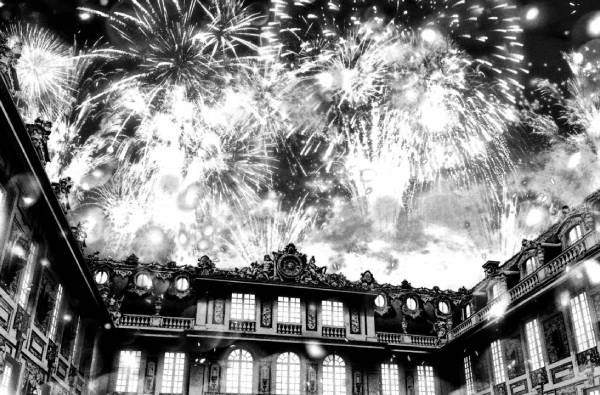
This unconventional structure is both a strength and a challenge. Sakamoto frequently leaps forward in time, introduces historical figures for a handful of scenes, or layers modern references into the 18th-century setting. The most daring example is portraying Marie Antoinette as a narcissistic social media influencer. It can feel fragmented or indulgent, but it also fits the manga’s operatic ambition. Innocent also isn’t a linear biography, but a symbolic exploration of power, guilt, freedom, and the grotesque beauty of death.
The art is simply breathtaking. Every page is meticulously rendered, showcasing laced embroidery, glinting guillotines, powdered wigs, and transforming grim torture chambers into luminous, painterly spreads.
Sakamoto’s characters are drawn like Renaissance deities. They are lithe, androgynous, and exaggerated in their beauty or cruelty. The violence is equally exquisite and horrifying. Public beheadings, sexual exploitation, and baroque methods of execution are all depicted with an almost decadent attention to detail. It’s simultaneously repulsive and mesmerizing, making Innocent one of the rare manga where brutality itself is stunningly beautiful.
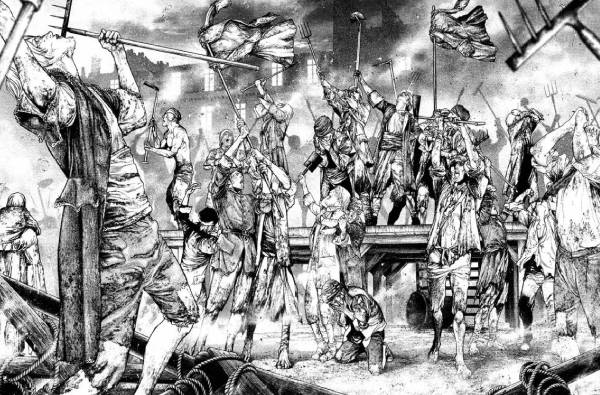
Innocent Rouge shifts the focus from Charles-Henri to Marie-Joseph, casting her as a rebellious, proto-revolutionary figure. This change divides readers. Some see her as a caricature of liberation; others see her as the emotional core of the series. Rouge also doubles down on symbolism, sexual content, and time skips. The result can feel erratic, but it’s still daring and distinctive. Even when the narrative wobbles, Sakamoto’s artwork never does.
One of the most fascinating motifs running through both series is the dream of a human execution. Charles-Henri’s obsession with building a painless guillotine, a beautiful machine of death, adorned like jewelry, becomes a metaphor for the Enlightenment’s contradictory ideas: liberty and cruelty, progress and bloodshed.
Historically, Innocent is fairly accurate, grounding itself in real figures and events, but it’s also heavily romanticized and metaphorical. It’s not a history lesson so much as a fever dream of the Revolution’s prelude. And like the Revolution itself, it’s both intoxicating and terrifying.
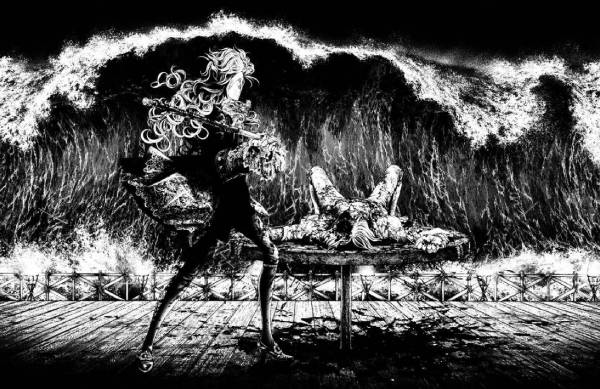
For readers who want traditional plotting, Innocent and Innocent Rouge may feel too disjointed or indulgent. But for anyone willing to embrace operatic excess, symbolism, nudity, and time leaps, this two-part saga is an unforgettable experience.
It’s hard to overstate just how beautiful this manga is. Sakamoto’s linework, paneling and use of symbolism elevate the series into one of the most striking achievements in the medium. Even when it stumbles narratively, it remains a masterpiece of visual storytelling, and without question one of the most audacious seinen manga ever created.
Genres: Historical, Drama, Psychological
Status: Finished
14. Homunculus
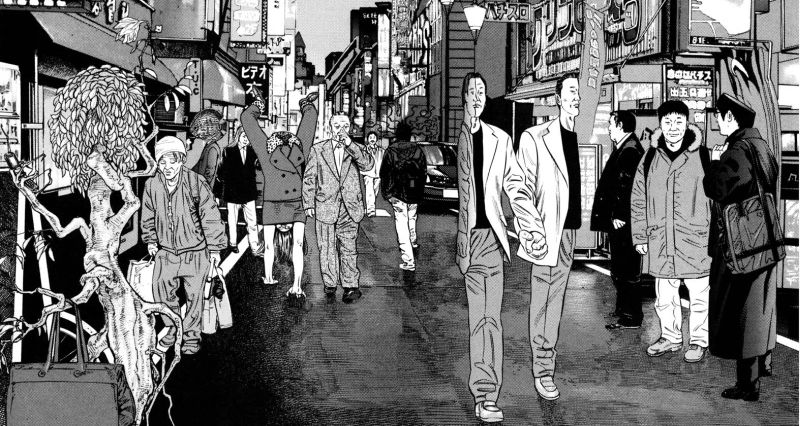
Homunculus by Hideo Yamamoto, the creator of Ichi the Killer, isn’t as graphically violent as his infamous earlier work, but it’s far stranger and arguably more disturbing. Where Ichi explores sadism and violence, Homunculus plunges headfirst into identity, trauma, and the unreliability of perception. It’s one of the most unique, surreal, and psychologically heavy seinen manga I’ve ever read.
The story follows Susumu Nakoshi, a homeless man living out of his car, stuck between luxury hotels on one side and a park of destitute people on the other. He’s approached by Manabu Ito, a young medical student researching trepanation, the procedure of drilling a hole into the human skull to expand consciousness. After the operation, Nakoshi begins seeing warped, grotesque visions of people that become known as homunculi, seemingly revealing their hidden selves.
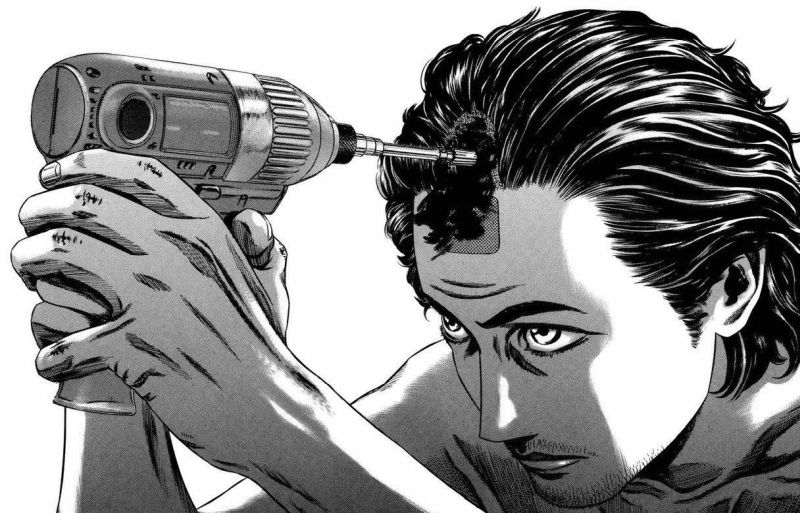
From here, Homunculus shifts from an intriguing setup to a full-on psychological narrative. It stops being a simple medical experiment gone wrong and instead becomes a study of vanity, trauma, materialism, identity disorder, and repressed memories. Nakoshi’s visions peel back layers of the human psyche, exposing grotesque truths and hidden desires. At first it’s eerie; later it’s outright unnerving, as the line between reality, delusion, and metaphor blurs beyond recognition.
Like its premise, the manga is unpredictable. You’re never sure whether Nakoshi’s visions are supernatural, symbolic, or the product of brain damage, and worse, Yamamoto never fully explains. This ambiguity makes Homunculus deeply unsettling and gives it the sense of a slow, steady descent into madness.
The art mirrors this psychological unease. Yamamoto mixes realistic character design with abstract, often disturbing distortions. The homunculi themselves are equal parts body horror and visual metaphor. The imagery ranges from uncomfortable sexual metaphors to outright nightmarish transformations.
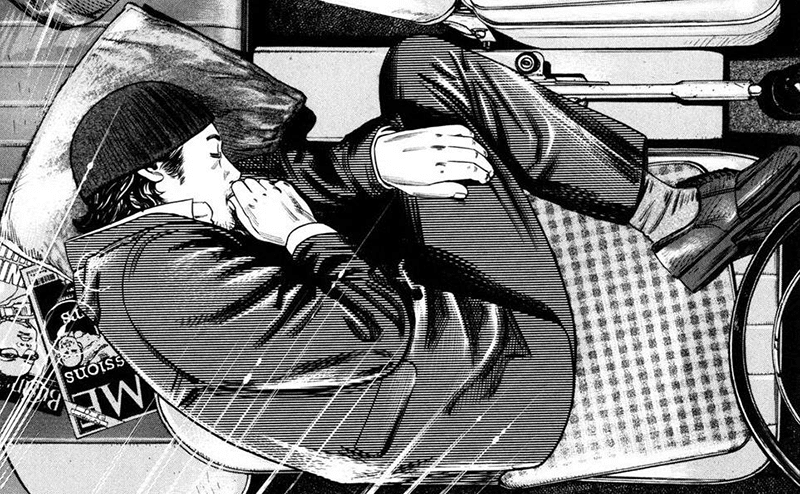
Nakoshi and Ito are both fascinating, flawed characters. Their relationship drives the story far more than any single mystery. Neither man is a cliché; both are complex, human, and unpredictable. Even side characters feel fleshed out and strange, giving the world an off-kilter, uncanny feeling.
As the manga progresses, it becomes increasingly surreal. Near the end, Homunculus abandons traditional narrative logic for a hallucinatory climax that still divides readers. Some see the ending as bold and unforgettable. Others, like me, find it baffling and hard to pin down. It stayed with me long after I finished it, but I still can’t fully decide what I think about it.
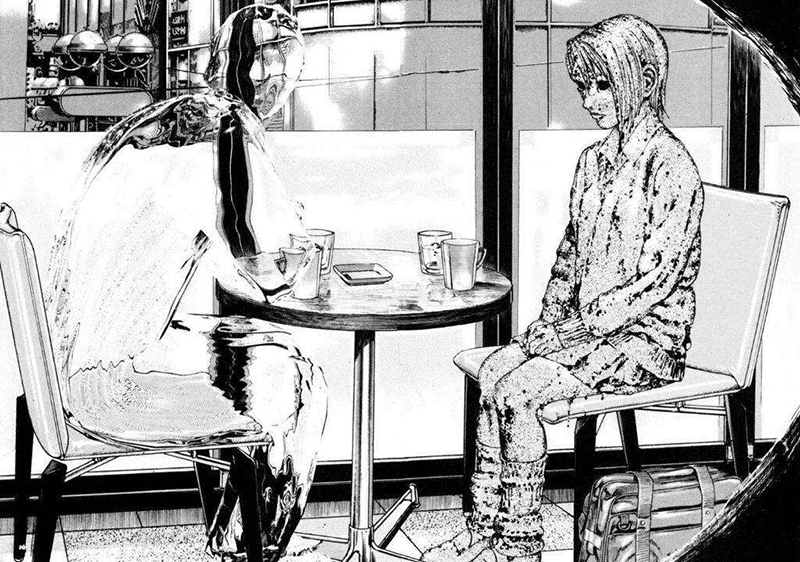
Despite its unevenness, Homunculus is a psychological masterpiece. It’s less about answers than about questions: What’s real? What’s hidden inside us? What happens when those hidden parts are exposed? Yamamoto delivers one of the most complex and unforgettable character studies in manga.
For its sheer creativity, its dark psychological themes, and its willingness to venture into surreal territory, Homunculus stands as one of the best seinen manga of all time. If you’re looking for a mind-bending and haunting experience, Homunculus is a must-read.
Genres: Horror, Psychological, Philosophical, Drama
Status: Finished
13. Freesia
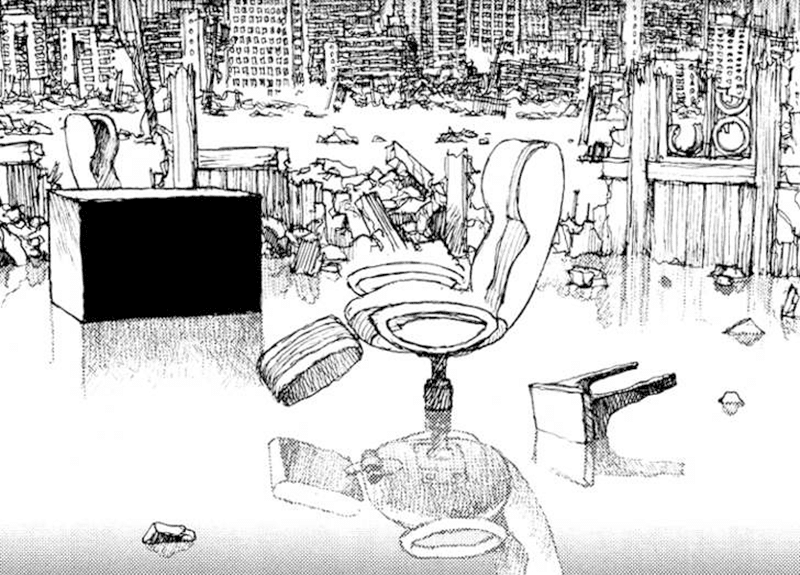
I return to Freesia again and again. It’s one of those manga that lodges itself in your head because it’s dark, surreal, and uniquely unforgettable. Created by Jiro Matsumoto, Freesia is, on paper, his most straightforward story, but it’s still one of the strangest and most disturbing seinen manga I’ve ever read.
Set in a war-torn dystopian Japan, a new law has legalized retaliatory killings. If someone murders a loved one, you’re legally allowed to kill them in return, or hire someone to do it for you. Our protagonist, Kano, works for one of these organizations, carrying out government-sanctioned executions. On the surface, it sounds like a revenge thriller; Freesia is far more interested in how a collapsing society warps the minds and souls of the people living in it.
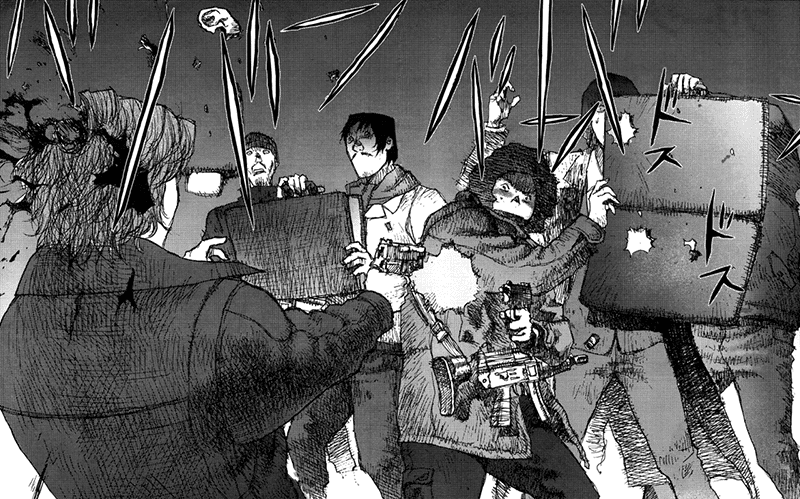
The world of Freesia is dark, cruel, and oppressive. War looms like background noise, atrocities happen daily, and the characters are either complicit or traumatized. Each chapter radiates a sense of dread and inevitability. Matsumoto’s art mirrors this perfectly: it’s raw, unpolished, and gritty. Backgrounds are painstakingly detailed, while faces are often stark and simplified, creating an unnerving contrast that suits the story’s mood.
Almost every character in Freesia is damaged or mentally ill. Matsumoto essentially discards the idea of presenting us with well-adjusted, normal people. Kano himself suffers from schizophrenia, memory gaps, and vivid hallucinations. Yet he knows it’s not the world that’s broken but his own perception of it. Other characters display their own delusions and breakdowns. As readers, we’re constantly thrown off balance. Scenes shift without warning, and what seems real one moment may dissolve the next. It’s surreal, confusing, and deliberate.

Despite its premise, Freesia focuses more on personal stories than the system itself. We’re given glimpses not only of the killers but also of their targets, humanizing them and turning many of the retaliatory killings into tragedies of their own. This moral ambiguity, showing that no one’s purely victim or villain, elevates Freesia beyond a simple revenge narrative and makes it one of the most striking seinen manga I’ve ever read.
We also never learn much about the larger war. It remains a distant backdrop, a reason for the misery but never its full explanation. Likewise, we only get glimpses of the characters’ past, but never fully know who they are. This lack of exposition can be disorienting but also contributes to the manga’s hypnotic pull and its feeling of inhabiting Kano’s fragmented perspective.
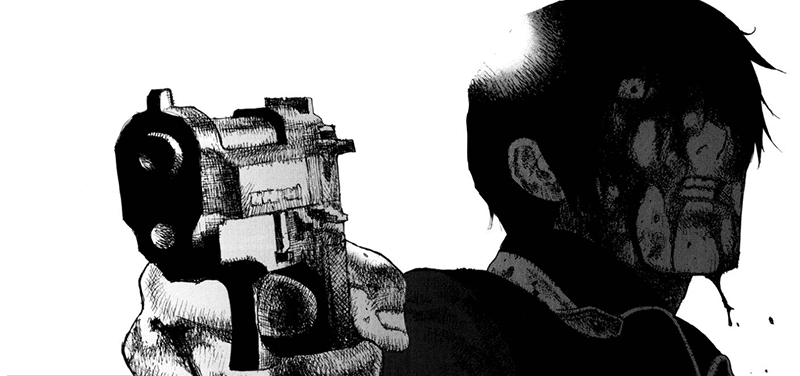
Freesia is not an easy read. Its themes of mental illness, its surreal jumps between reality and delusion, and its unrelenting darkness can confuse or even repel some readers. Yet that’s exactly what makes it so uniquely memorable. It’s bleak and depressing, but also intimate and deeply human, with moments that cut to the core.
For me, Freesia is a surreal, one-of-a-kind experience, part revenge thriller, part psychological breakdown, part nightmare. It’s a rare manga that lingers long after you’ve finished, and like me, you may find yourself coming back to it multiple times, drawn to its darkness, hypnotic atmosphere, and quietly devastating stories.
Genres: Psychological, Crime, Drama
Status: Finished
12. Akira
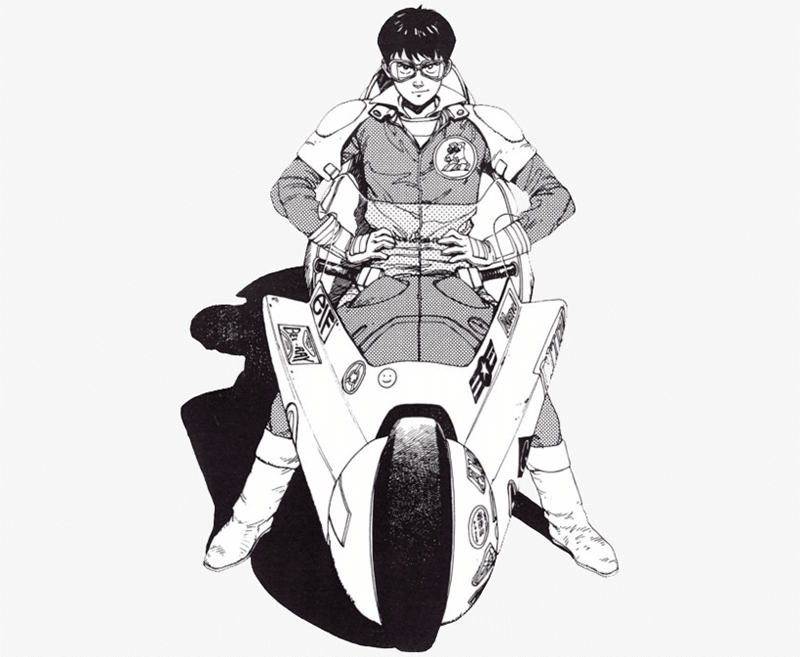
Katsuhiro Otomo’s Akira is one of the most influential manga of all time; a landmark of science-fiction that essentially birthed the Japanese cyberpunk subgenre. Along with its equally iconic film adaptation, it reshaped how manga, anime, and even Hollywood imagined dystopian futures. Few works can match its visual ambition or cultural reach.
The story unfolds in the sprawling, neon-lit city of Neo-Tokyo, a rebuilt metropolis standing on the ruins of an apocalyptic past. Biker gangs, revolutionaries, and corrupt officials prowl the streets while a secret government project lurks in the shadows. Our protagonists, Shotaro Kaneda and Tetsuo Shima, are two reckless teenagers. They are friends but also rivals, and a direct product of this chaotic world. One night, Tetsuo pulls a desperate stunt to prove himself, triggering an accident that awakens a terrifying psychic power and sets into motion the events that lead to the awakening of Akira, the government’s ultimate secret.
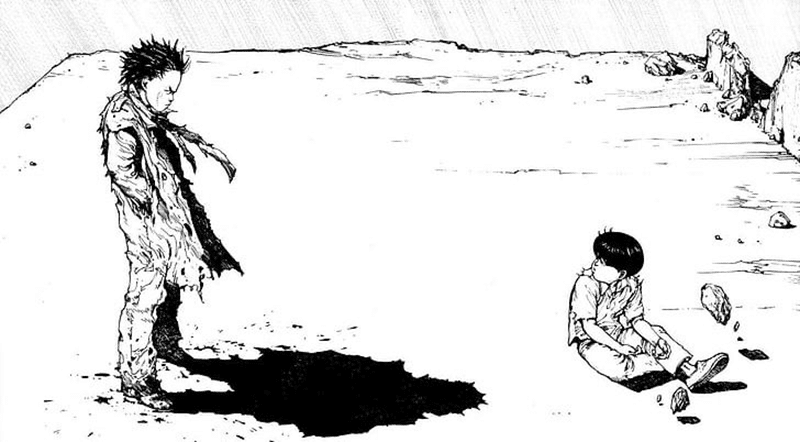
From here, the manga erupts into a fever dream of conspiracies, psychic warfare, and large-scale devastation. Otomo’s worldbuilding is staggering: Neo-Tokyo feels alive, packed with minute details from cracked streets and scattered rubble to glittering skyscrapers. In the later chapters, as destruction escalates to apocalyptic proportions, Otomo delivers some of the most jaw-dropping sequences in manga history. The panels have a cinematic flow and an almost obsessive precision.
The characters’ visual design is equally stunning. Every biker jacket, every military uniform, every vehicle is rendered in obsessive detail. Personality-wise, though, the cast is archetypal. Kaneda is the brash, swaggering leader, while Tetsuo is the volatile underdog whose powers spiral out of control. The latter stands out somewhat for being both terrifying and tragic, embodying the manga’s central tension between human frailty and godlike powers. The rest of the cast, be they political players, revolutionaries, or soldiers, add color and scale but rarely achieve depth.
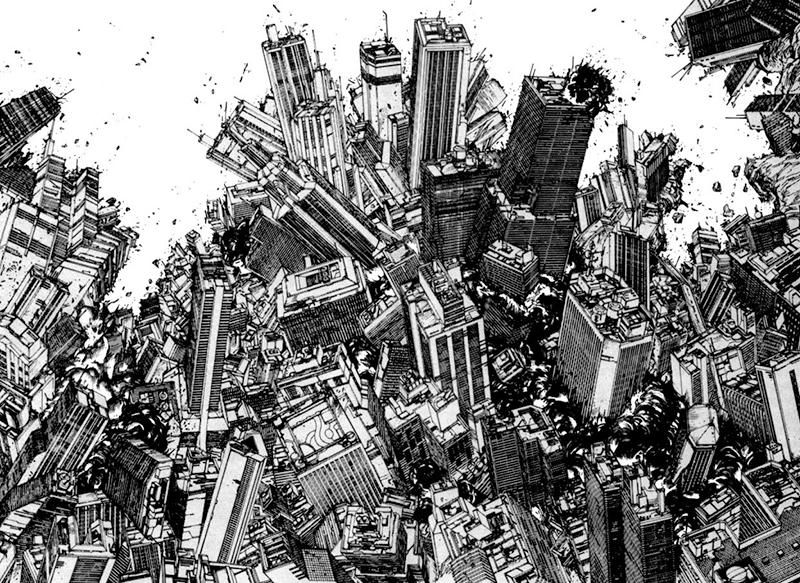
What makes Akira endure despite its flaws is its sheer vision. This isn’t hard science-fiction; it’s about high-energy, atmosphere, and escalation. Turf wars bleed into government coups and finally into end-of-the-world spectacles. Psychic powers are rarely explained, but their ambiguity contributes to the manga’s feverish momentum.
I’ve always loved Akira the most, however, when it focused on the ground-level grime of biker gangs, drug-fueled orgies, and conspiracies, where the cyberpunk setting feels rawest. When it pivots to massive psychic showdowns, the story sometimes trades coherence for spectacle, but a spectacle that is unmatched.
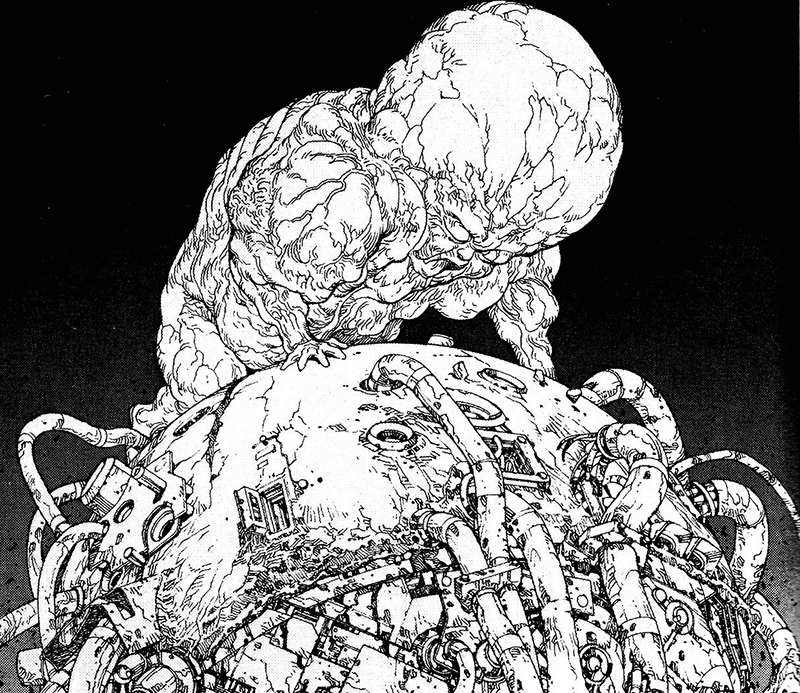
Does Akira deserve its reputation? In my opinion, yes and no. Its influence can’t be overstated, yet, like many pioneering works, it shows its age and limitations. The characters, as mentioned before, feel one-dimensional, the powers ill-defined, and the plot occasionally disjointed. But none of this undermines what Otomo achieved in art, pacing, and scope.
Simply put, Akira is a masterpiece of manga art and worldbuilding. Once you look past its flaws, you experience one of the greatest cyberpunk settings ever drawn and some of the most ambitious destruction sequences in comic history. Even decades later, it’s a must-read, not just for seinen fans, but for anyone curious about how far manga can go.
Genres: Cyberpunk, Dystopian, Action
Status: Finished
11. The Climber
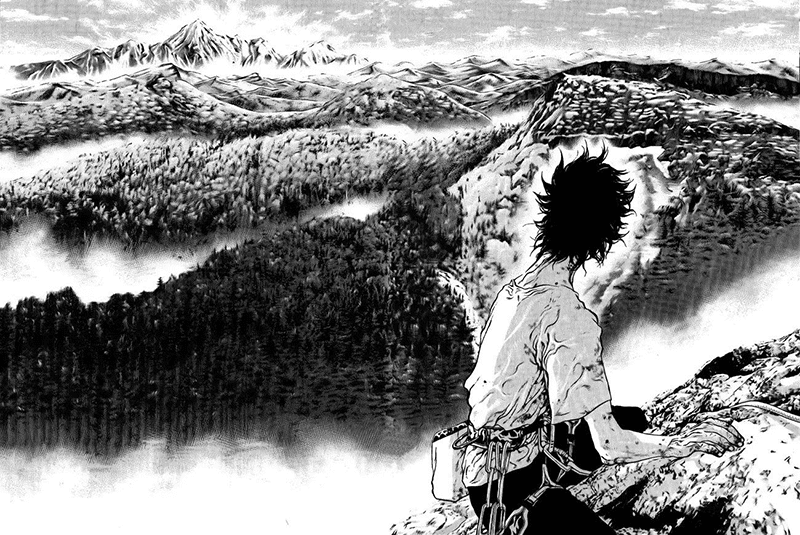
The Climber by Shinichi Sakamoto is one of the most beautiful and haunting manga I’ve ever read. I’m not usually a fan of sports manga, and I was hesitant to pick it up, but once I did, I discovered one of the best seinen manga of all time.
Our protagonist, Buntarou Mori, is a solitary, almost alienated teenager. His passion for climbing begins unexpectedly, when a classmate challenges him to scale the school building. Mori accepts without hesitation, and in that moment, something awakens inside him. From then on, climbing becomes his obsession and his lifeline.
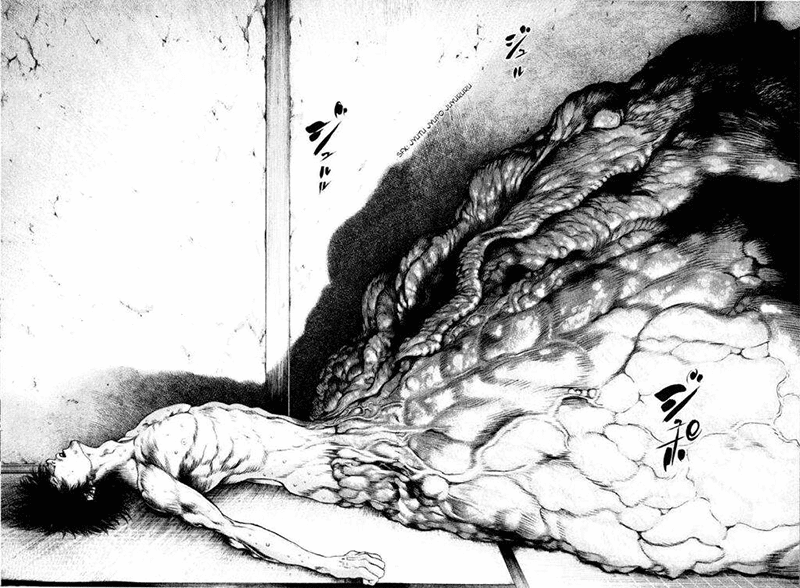
Mori himself is fascinating to watch. At first, he seems apathetic, disconnected from everything. But as he scales one mountain after another, his life and personality slowly transform. He’s still a loner who’s unable to relate to others, but climbing gives him purpose. The parallel between external ascent and internal growth forms the heart of The Climber.
What struck me most is how Sakamoto uses Mori’s journey to explore themes of dedication, perseverance, and self-development. The manga seems to say, “If you push hard enough, you can transcend your limits.” But it’s not a simple inspirational story. Mountain climbing here is brutal and dangerous. Death isn’t dramatized as spectacle; it‘s shown as haunting, inevitable, and an integral part of the sport’s reality.
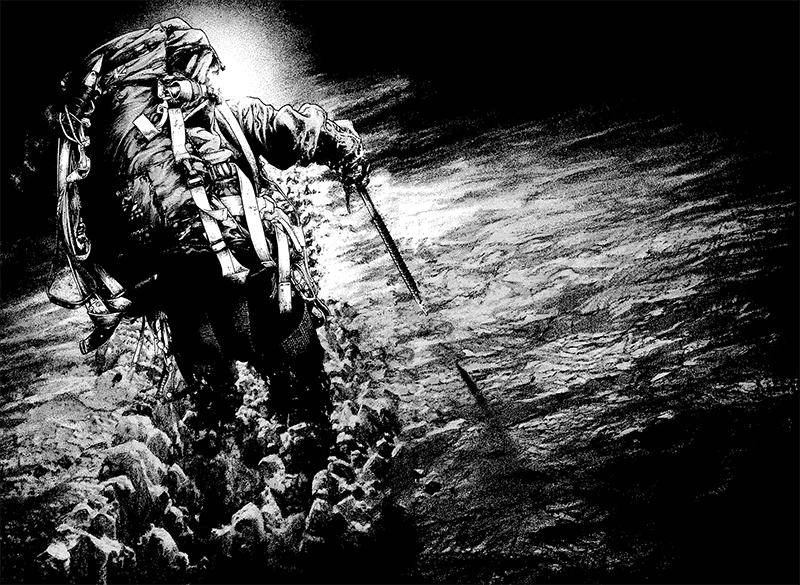
The art in The Climber is breathtaking. Sakamoto’s double-page spreads of mountain ranges are excruciatingly detailed and genuinely awe-inspiring. Even without dialogue, panels of Mori ascending a sheer cliff or standing atop a peak carry an almost spiritual weight. Many pages are pure visual storytelling, and the manga frequently speaks through silence rather than words.
Sakamoto goes even further by weaving in metaphors, allusions, and literary quotes. These flourishes give the manga a poetic texture without feeling pretentious. It’s rare to see a work this visually stunning also engage with ideas of existential struggle, isolation, and self-definition.
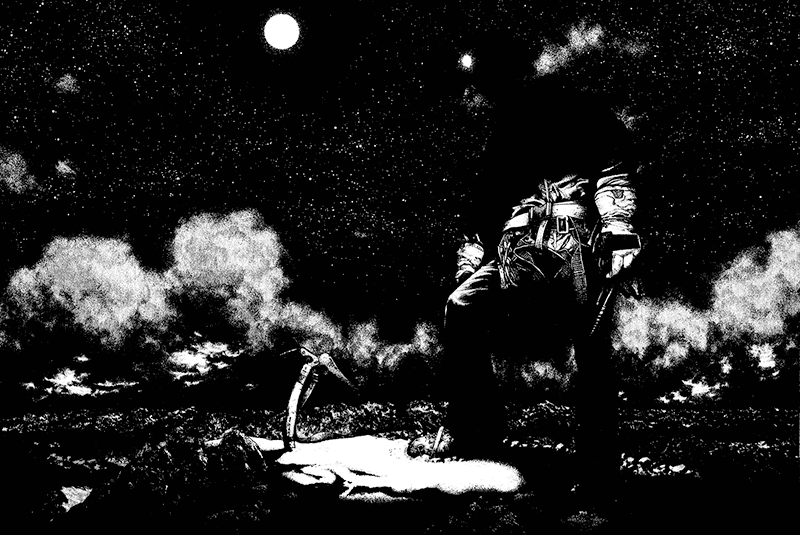
The Climber isn’t without flaws. Originally created by two people, the manga shifted tone when writer Yoshio Nabeta departed and Shinichi Sakamoto continued solo. It becomes less traditional sports narrative and more of an atmospheric, psychological character study. This focus on Mori as a lone figure, his psyche, his obsession, and his near spiritual-bond with nature may alienate readers expecting a more conventional story.
Frequent time skips contribute to the disorientation. Some jumps cover days, others years. It’s effective for showing Mori’s long journey and growth, but can feel abrupt, leaving you wondering what happened in the gaps. Still, the structural quirks rarely break the spell of the story.
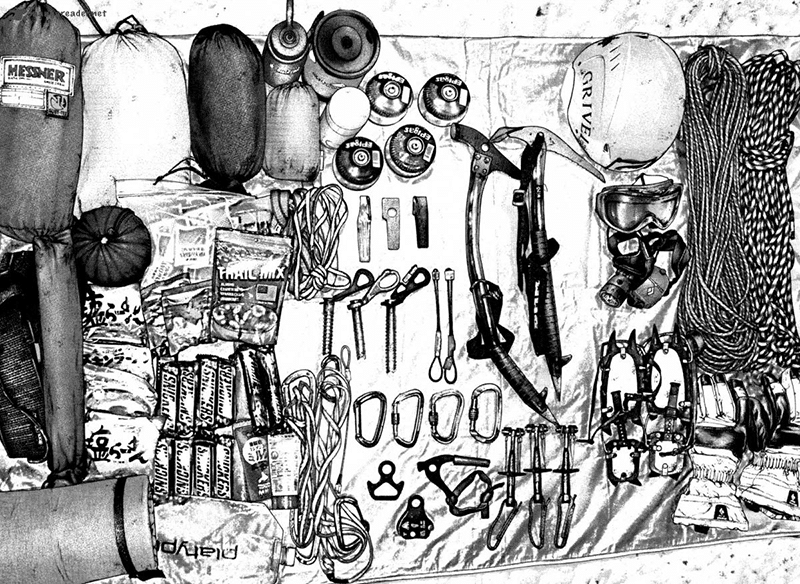
More than a climbing manga, The Climber is a coming-of-age tale about a boy confronting his inner void. It’s about obsession, perseverance, and the cost of trying to become something greater than yourself. At times it’s heavy, even somber, but it’s never dull, and the rewards are immense.
With its staggering artwork, its unique blend of sports and philosophy, and its deeply human protagonist, The Climber stands as one of the greatest seinen manga ever made. Whether you’re drawn to mountaineering, psychological character studies, or simply gorgeous storytelling, this is a journey worth taking.
Genres: Sports, Drama, Psychological
Status: Finished
10. Jojo’s Bizarre Adventure Part 7: Steel Ball Run
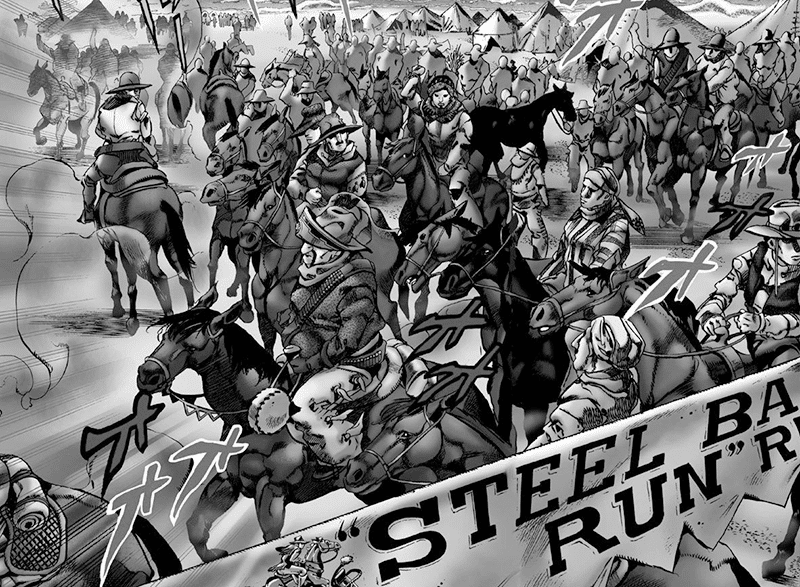
Steel Ball Run, Part 7 of Jojo’s Bizarre Adventure, is the culmination of everything Hirohiko Araki built in the decades before. While Jojo is now well into its ninth part, Steel Ball Run remains its creative high point and, in my opinion, one of the best seinen manga ever made.
For readers unfamiliar with the series, Jojo’s Bizarre Adventure began in the late 1980s as a gothic revenge story reminiscent of Fist of the North Star. By Part 3, Stardust Crusaders, Araki introduced Stands, which are supernatural manifestations of a character’s life force and changed the series’ identity forever. With each part thereafter, Araki experimented with settings, powers, and themes. Steel Ball Run is a masterpiece that brings all these innovations together.
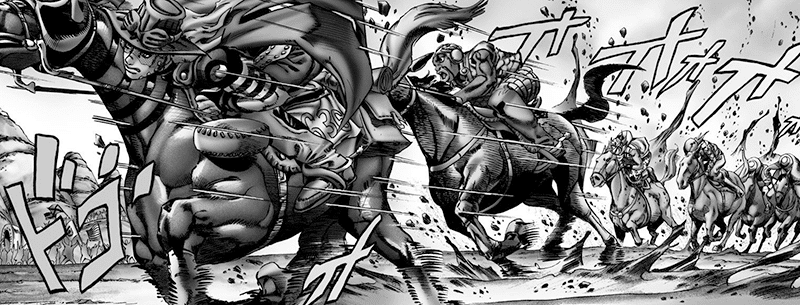
Set in an alternate 19th-century America, Steel Ball Run revolves around a continent-spanning horse race from San Diego to New York City with a grand prize of five million dollars. Our protagonist is Johnny Joestar, a once-famous horse racer, now paralyzed from the waist down. At the race’s start, he encounters Gyro Zeppeli, a mysterious competitor who wields the power of the Steel Balls, spinning weapons imbued with secret techniques.
When Johnny touches one, he briefly regains feeling in his legs. Determined to master Gyro’s technique and reclaim his life, Johnny enters the race, unaware that it hides a deadly conspiracy involving sacred relics, assassins, and supernatural powers.
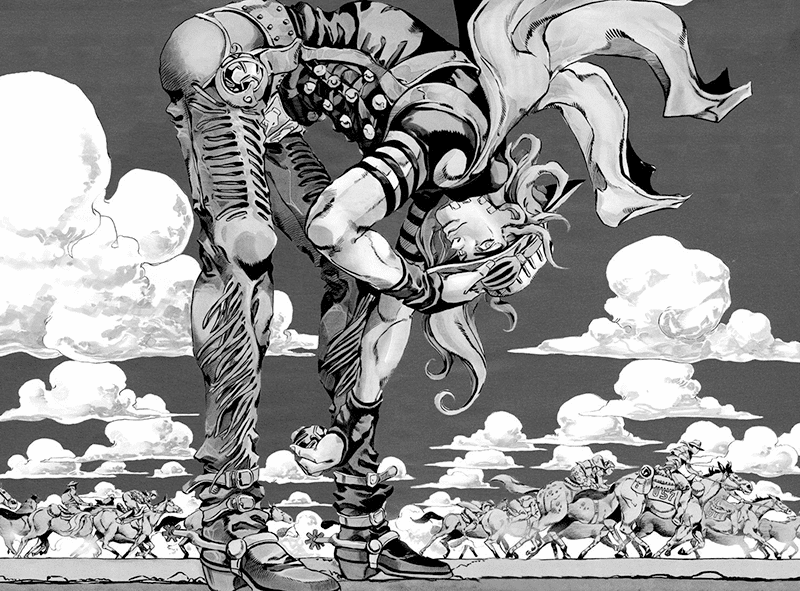
What makes Steel Ball Run so extraordinary is how it fuses the thrill of competition with Jojo’s signature bizarre battles. Unlike previous parts, the race itself remains a constant backbone for the story. Even as Johnny and Gyro confront assassins, uncover hidden plots, and duel Stand users, the momentum of the race never stops. This layered tension between a race against time and high-stakes battles gives Steel Ball Run an intensity and forward drive unlike any other manga.
Araki’s creativity reaches its peak here; the Stands are stranger and more inventive than ever, the villains memorable, and the set pieces utterly unpredictable. The American frontier setting also lets Araki experiment visually, from dusty deserts to lush forests to surreal, supernatural areas. His art, already refined, reaches full maturity: characters are more detailed and dynamic, double-page spreads are breathtaking, and the sense of motion and drama is flawless.
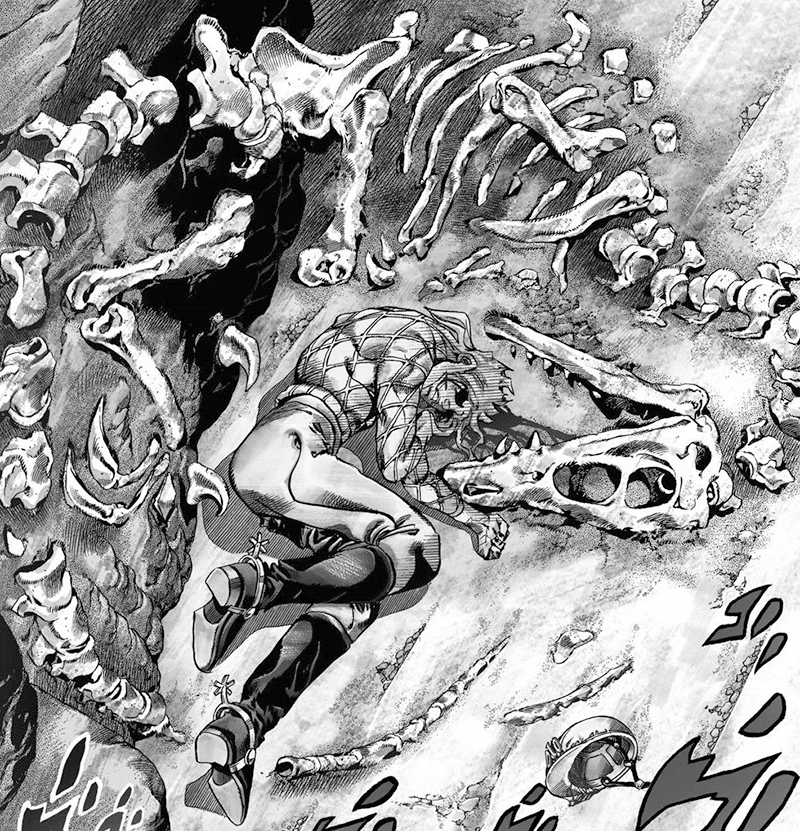
Equally important, the characters are some of Araki’s best. Johnny Joestar’s arc, from self-loathing to determined, is one of the most compelling in the entire Jojo saga, while Gyro Zeppeli is easily one of Araki’s most charismatic creations. Even supporting characters, like Diego Brando, a reimagined version of Dio, feel fully realized and memorable.
Steel Ball Run isn’t just another Jojo part. It’s Araki’s magnum opus and a perfect blend of spectacle, suspense, character development, and surreal invention. Whether you’re already a Jojo fan or completely new to the series, Steel Ball Run stands on its own as a masterpiece of action, creativity, and adventure, and clearly one of the best seinen manga of all time.
Genres: Action, Adventure, Supernatural
Status: Finished (the Jojo’s Bizarre Adventure series is still ongoing)
9. Usogui
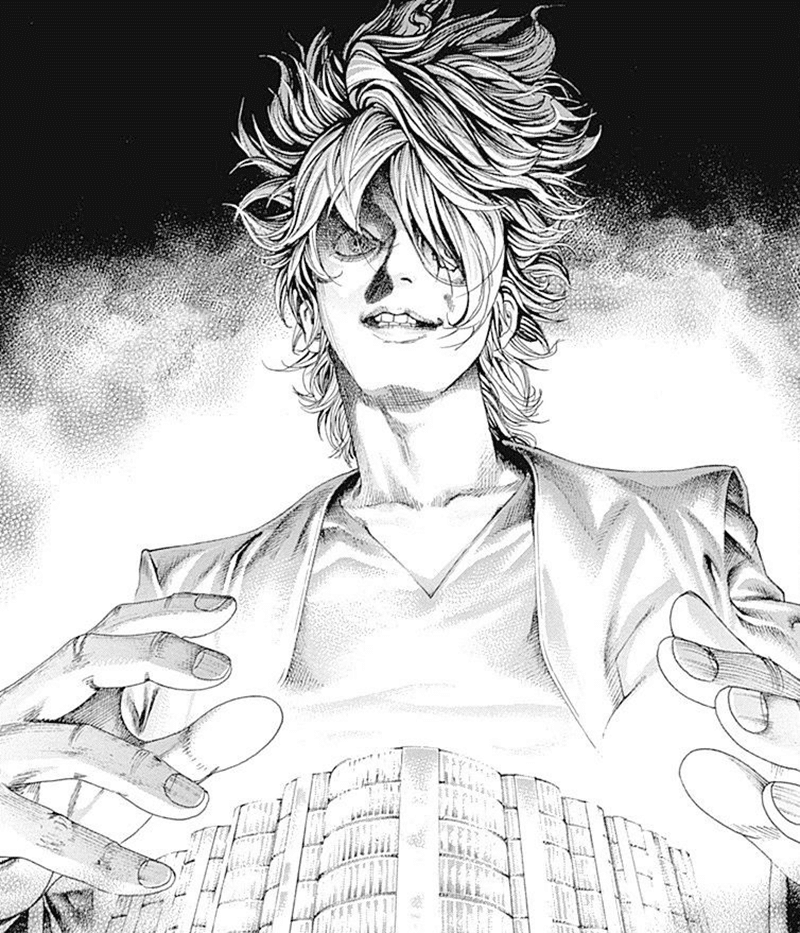
Usogui by Toshio Sako is one of the greatest mind-game and gambling manga ever created, and easily one of the best seinen manga of all time. When I first began reading it, Usogui was only a runner-up on my list. By the time I finished it, though, it had moved into my personal top 10. I’m a huge fan of psychological and strategy-heavy manga, and Usogui is the finest example of the genre I’ve ever read.
The story follows Baku Madarame, known as the Usogui, the Lie Eater, as he dives headlong into deadly gambles. These games are overseen by the mysterious referees of Kagerou, a powerful underground organization that ensures every bet is honored and every game completed. But the stakes are life and death, and Baku faces them all without fear.
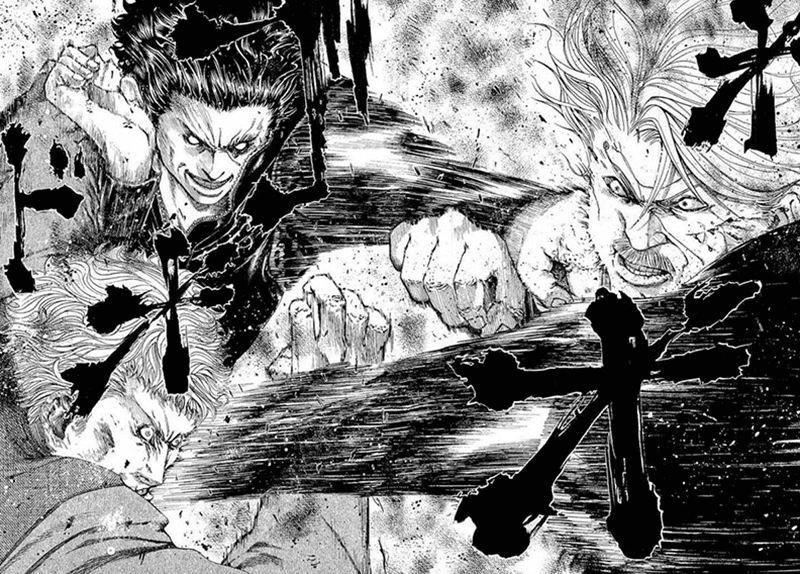
At first, Usogui starts rough. The opening Abandoned Building arc feels more like a survival horror scenario, pitting Baku against a Jason-like killer. It’s a far shot from the later, more elegant gambling duels the series is famous for. The art is also relatively weak, with stiff action and less detailed character work. Yet, even here, you can feel Toshio Sako laying the groundwork for what’s coming.
Things begin to click with the Labyrinth arc, which was the first truly great battle of wits to me. Here we see intricate cheating, double and triple bluffs, and the relentless psychological tension that define Usogui. From this point, the series becomes one of the most ambitious and thrilling mind-game manga ever created.

By the time we reach the Tower of Karma arc, Usogui is at its best. The games become increasingly complex yet comprehensible, and Sako’s art evolves into something stunning. His characters are sharper, his panels more kinetic, and his sense of space and pacing is masterful.
The Protopos arc and its climactic Air Poker showdown are arguably the peak of gambling manga as a medium. Air Poker is not only one of the most unique games ever devised, it’s also one of the tensest, most unpredictable, and most creative showdowns I’ve ever read. The constant reversals, hidden strategies, and the way Baku ultimately wins are nothing short of mind-blowing. Usogui follows this with the equally brilliant Surpassing the Leader arc, cementing its legacy.
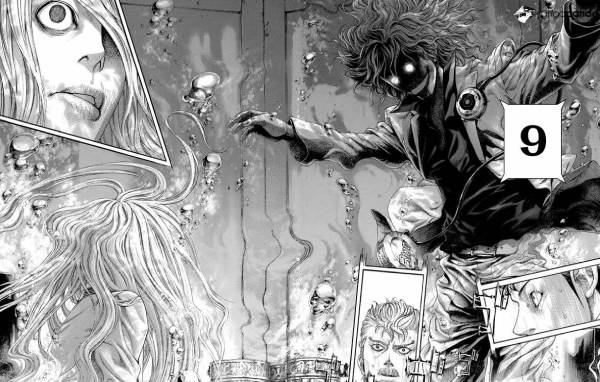
One of the things that makes Usogui so good is that it’s not just about the games themselves but also about the characters‘ psychology. Baku is a near-mythic strategist whose every move radiates confidence and mystery, but even he is almost outshined by the men he goes up against, most of all Vincent Lalo, and Soichi Kimura. But those aren’t the only standouts in the series. The Kagerou referees steal the show whenever they appear, and while many of them are the typical rule-of-cool badasses, some are interesting characters on their own.
By the final arcs, it’s breathtaking. The mind-games are equally elevated, turning the manga into a pure masterpiece of tension and intellect. While Usogui may start out decently at best, the later parts rise to a level of ingenuity and spectacle that has yet to be surpassed.
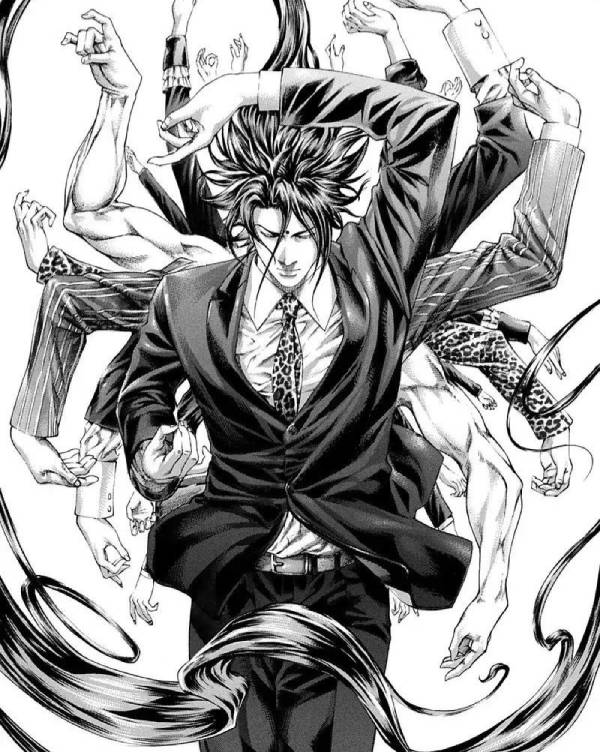
If you’re a fan of psychological battles, high-stakes gambles, and strategy-driven storytelling, Usogui is a must-read. It’s the pinnacle of its genre and one of the best seinen manga I’ve ever encountered.
Genres: Psychological, Gambling, Thriller
Status: Finished
8. Me and the Devil Blues
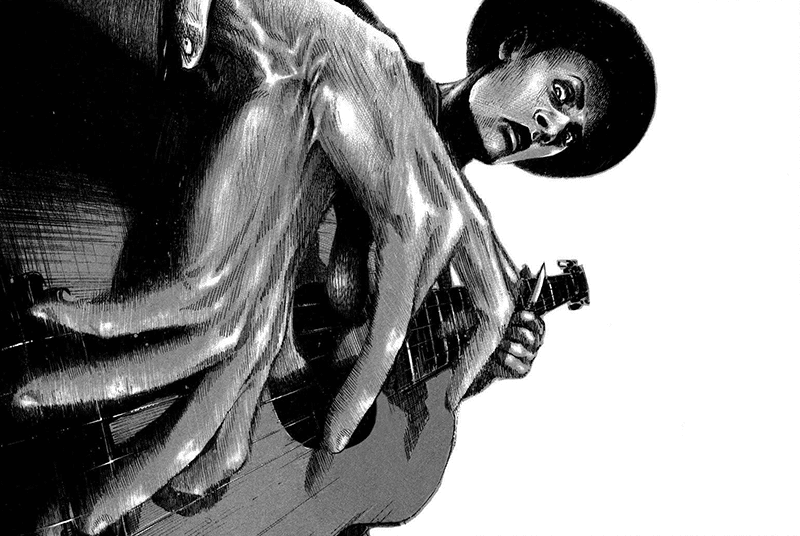
Me and the Devil Blues by Akira Hiramoto is one of the most unique manga I’ve ever read. It’s a dark, supernatural retelling of the legend of blues musician Robert Johnson, set against the backdrop of the Jim Crow American South of the 1930s. On paper, the premise sounds impossible, but the execution is nothing short of stunning.
Our protagonist, Robert ‚RJ‘ Johnson, is a struggling blues guitarist desperate to master his craft. He’s no good at it, but one night, driven by obsession, he heads to a crossroads hoping to make a deal with the devil. Surprisingly, it works, and from that moment on, his fingers move like magic, but his life spirals into an ever-deepening nightmare of violence, paranoia, and supernatural mystery.
What elevates Me and the Devil Blues above almost any other manga is its atmosphere. The tension is relentless, with whole stretches of the story not letting you catch your breath. Each new chapter continues on, drives the suspense ever further, never letting up. While not purely a horror manga, it’s soaked in dread, guilt, with a constant sense that something is waiting to shatter everything.
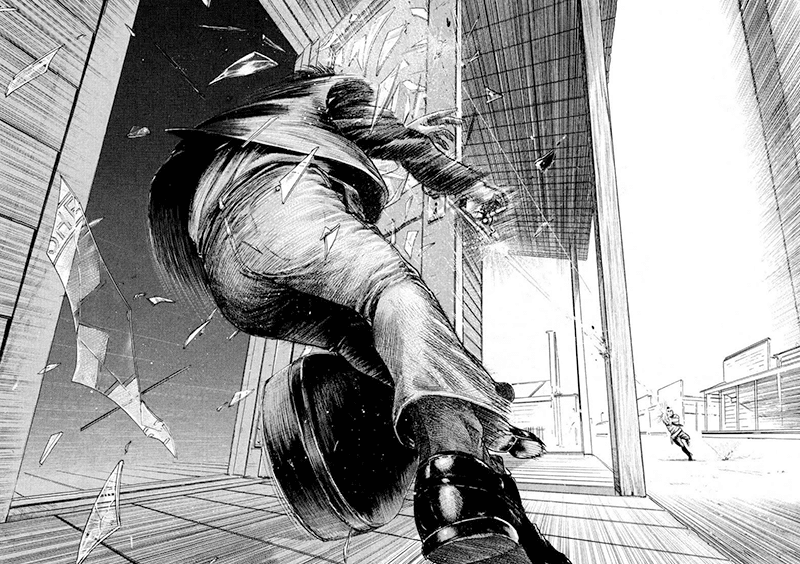
Hiramoto’s artwork is equally unforgettable. Gritty, textured, and hyper-detailed, it perfectly captures the feel of 1930s rural America. Juke joints drip with sweat, dusty backroads stretch endlessly, and segregated towns seethe with violence. The South itself becomes a character, oppressive and alive.
The characters are just as strong. RJ is a passive, tragic figure, swept along by events he barely understands. Real-life outlaw Clyde Barrow becomes a fascinating foil and companion, while the enigmatic Stanley McDonald radiates menace every time he appears. Even minor characters are sketched with depth and weight, making the world feel lived-in and dangerous.
One of the manga’s greatest strengths is how it fuses historical authenticity with supernatural myth. The crossroads legend, the slow reveal of RJ’s bargain, and the violent racial reality of the South all intertwine seamlessly. It’s as much an American gothic as it is a Japanese manga, and it uses its unique perspective to highlight themes of desperation, corruption, and survival.
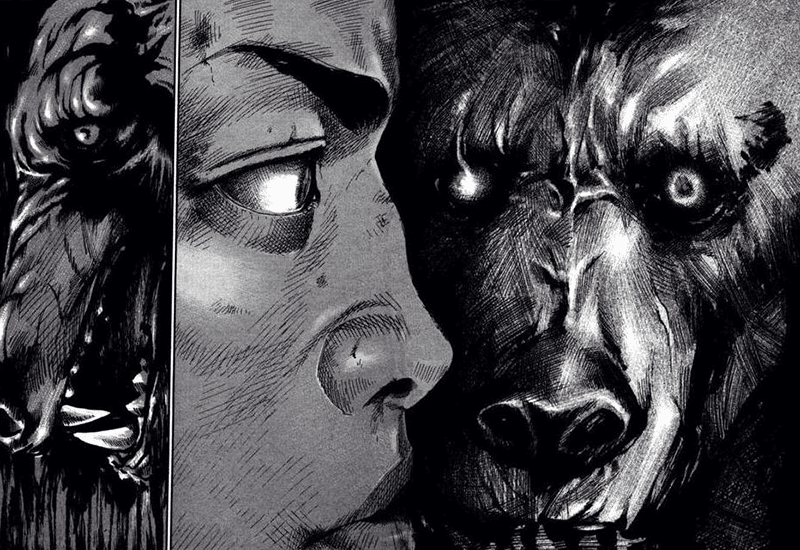
If there’s a flaw, it’s that the opening chapters can feel confusing on a first read. But once the story clicks, it never lets go. By the time you reach the midpoint, Me and the Devil Blues becomes a full-fledged fever dream of tension.
A hidden gem and masterpiece: this is a manga unlike any other. Its unrelenting suspense, gorgeous art, and haunting take on blues mythology make Me and the Devil Blues one of the best seinen manga of all time, and a must-read for anyone looking for something truly original.
Genres: Historical, Psychological, Horror, Mystery
Status: On Hiatus
7. Vinland Saga
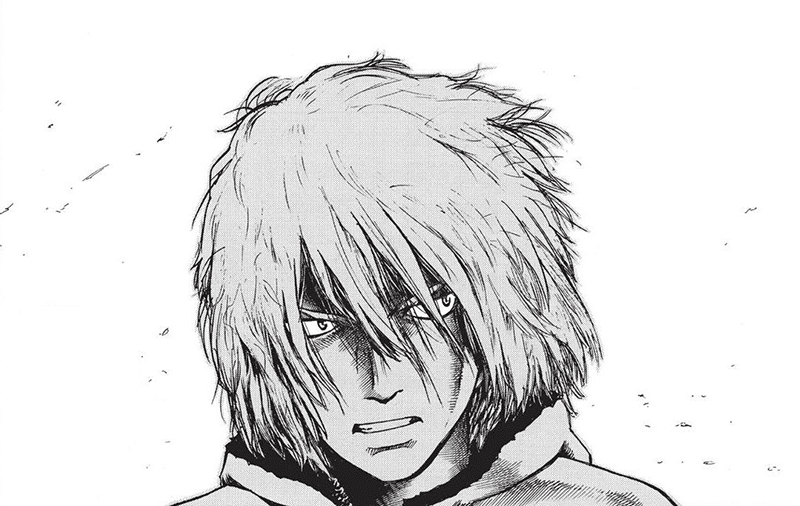
Makoto Yukimura’s Vinland Saga is one of the best seinen manga of all time. It’s a gripping Viking epic that shines equally in art, story, and characters.
Our protagonist, Thorfinn Karlsefni, son of Thors, begins as a child soldier in a mercenary band led by Askeladd, the man who killed his father. Driven by revenge, Thorfinn follows Askeladd across battlefields, waiting for his chance to kill him in a duel. This twisted dynamic gives the manga its initial intensity and separates it from other historical sagas.
The story truly begins when Danish Prince Canute is kidnapped, triggering a chain of events that changes Thorfinn, Askeladd, and the power balance of Europe. Askeladd’s intricate plan pulls the reader into politics, warfare, and moral compromise, expanding the story far beyond a simple revenge plot.
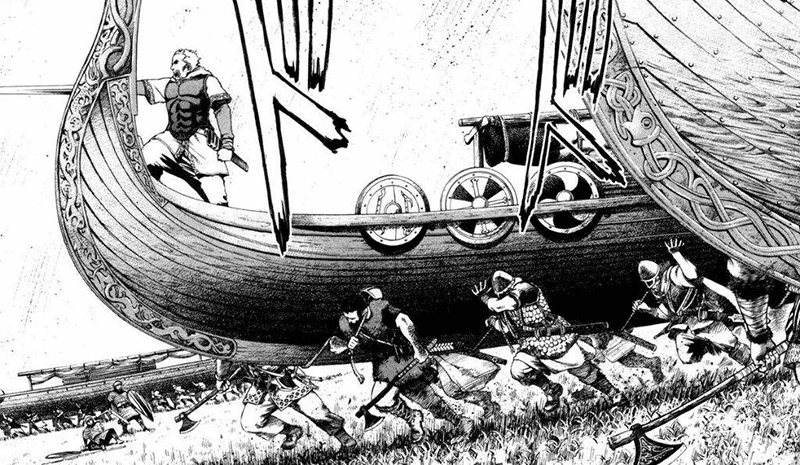
Set in 11th-century Europe, Vinland Saga draws deeply from Viking culture. Yukimura doesn’t shy away from depicting the era’s brutality. We see raids, murders, and enslavements everywhere, but he still manages to make the world feel authentic and grounded. You can almost taste the salt of the North Sea, hear the creak of wooden ships, and feel the mud of the battlefield.
The art is another standout. Even the first volume looks great, but Yukimura’s skill rises to breathtaking levels as the series progresses. Towns, villages, ships, and sweeping landscapes are meticulously rendered, pulling the reader straight into medieval Europe. Later arcs, especially the quieter Farmland storyline, show just how well Yukimura can make even a snowy farmstead feel alive and authentic. Battle scenes are blunt, gory, and unflinching without feeling gratuitous, while calmer moments have a moody, almost cinematic quality.
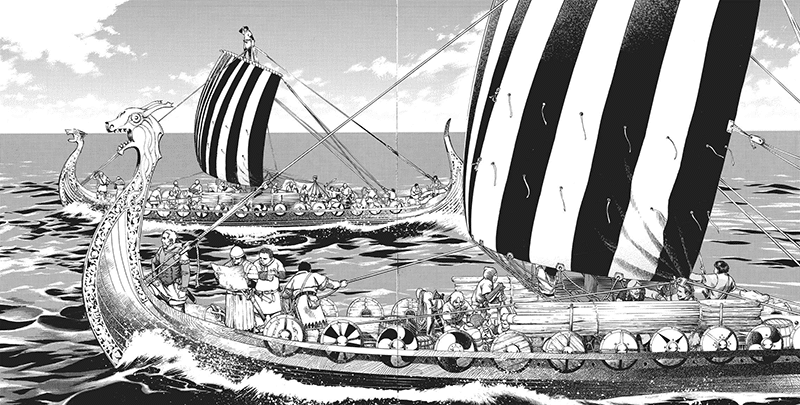
Yet Vinland Saga isn’t just about war; it’s Thorfinn’s story. For every violent clash, there are stretches of quiet reflection where the manga slows down to explore guilt, trauma, and the cost of vengeance. These calmer chapters are just as gripping as the battles, giving the work its emotional center and thematic depth.
The characters are among manga’s best. Thorfinn begins as a rage-driven killer but grows into a complex, haunted man searching for purpose beyond revenge. Canute evolves from a timid hostage to a powerful, conflicted ruler. Even supporting characters such as Einar, Hild, and Sigurd bring their own arcs and humanity to the story.
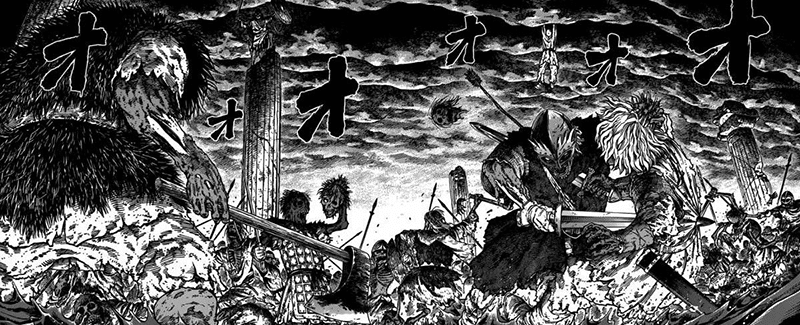
The standout, however, is Askeladd. Initially framed as a villain, he’s revealed to be one of the most nuanced characters in the manga. He’s a charismatic tactician, father figure, and antagonist all in one. His hidden heritage and secret ambitions give him layers rarely seen in a story about warriors.
This balance between large-scale violence and intimate character drama is why Vinland Saga works so well. It’s brutal and grounded yet also reflective and humane. At its core, it’s about trauma, redemption, and the possibility of choosing peace over bloodshed, a thematic evolution that elevates it from great to masterful.
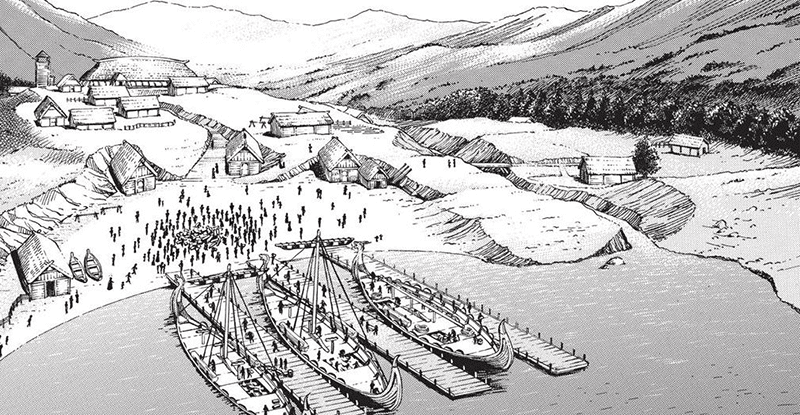
Whether it’s detailing political schemes, showing off sweeping battlefields, or lingering on a quiet farmstead, Yukimura’s storytelling is outstanding. Vinland Saga is a sweeping historical epic, a deeply human character study, and one of the best seinen manga ever created.
Genres: Historical, Action, Drama
Status: Ongoing
6. Vagabond
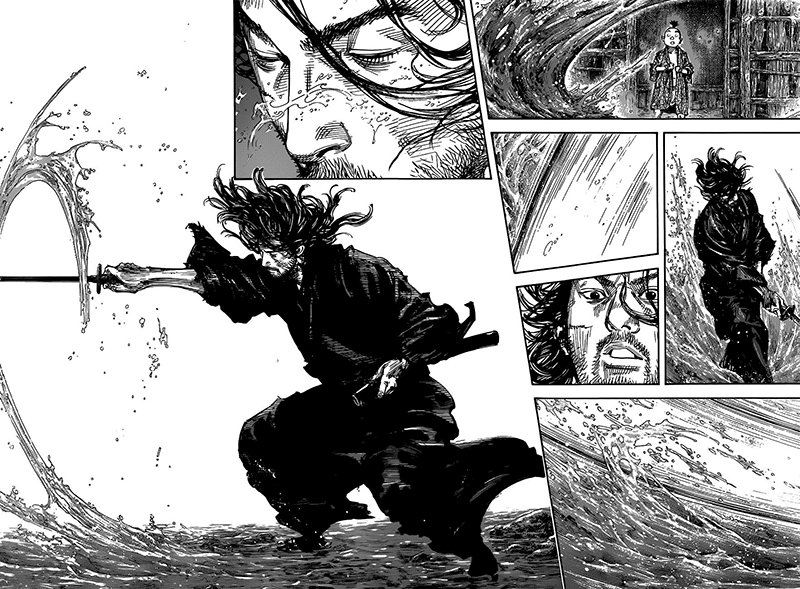
Vagabond by Takehiko Inoue adapts Eiji Yoshikawa’s classic novel Musashi into one of the most ambitious samurai epics ever drawn. It retells the romanticized life of Musashi Miyamoto while also offering a deeply human, grounded meditation on violence, mastery, and self-discovery. Even among the best seinen manga, Vagabond stands as a towering achievement.
We begin with Shinmen Takezo, a brash, violent young man who dreams of becoming the strongest swordsman in Japan. Alongside his childhood friend Matahachi Honiden, he enlists with the Toyotomi army and is thrown into the bloodbath of war. The two barely escape with their lives. Returning home, Takezo is declared a wanted criminal, hunted down, and left strung up at a tree to die. He’s saved by the monk Takuan Soho, who offers him a new name, Musashi Miyamoto, and a chance at redemption. From here, the manga follows Musashi’s lifelong journey to become ‘invincible under Heaven’.
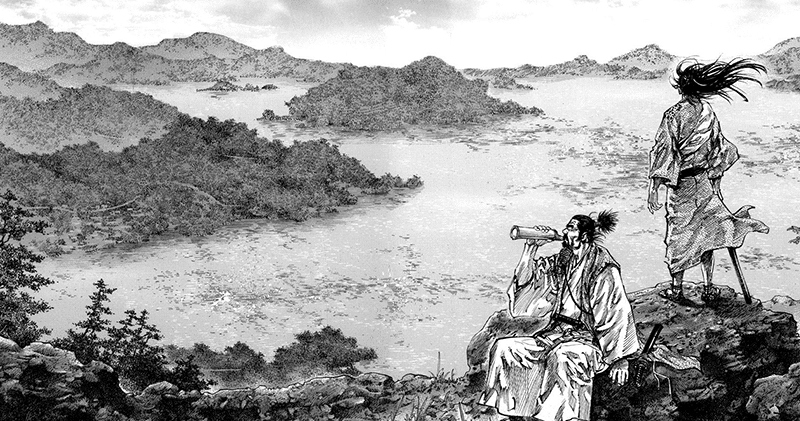
One of Vagabond’s most extraordinary qualities is its art. Takehiko Inoue’s brushwork is breathtaking. Vast mountain ranges, tiny villages, chaotic battlefields, and intimate character close-ups are all rendered with obsessive detail and painterly texture. The sword fights are unlike anything else in manga. They are visceral yet composed, and limbs and heads are sliced off, yet the gore is never romanticized. This is violence presented as fact, not spectacle. Many battles hinge on timing, psychology, and subtle shifts rather than straightforward clashes, making each confrontation tense and unpredictable.
And yet, Vagabond is not only a manga about duels and death. It’s also a sprawling character study. While Musashi is the protagonist, Inoue devotes huge sections to other figures of the time, particularly Sasaki Kojiro, who becomes almost a co-lead. We also spend significant time with Matahachi and many other supporting characters, each with their own philosophies, traumas, and ambitions. The series treats its cast not as heroes or villains but as flawed humans navigating a brutal world.
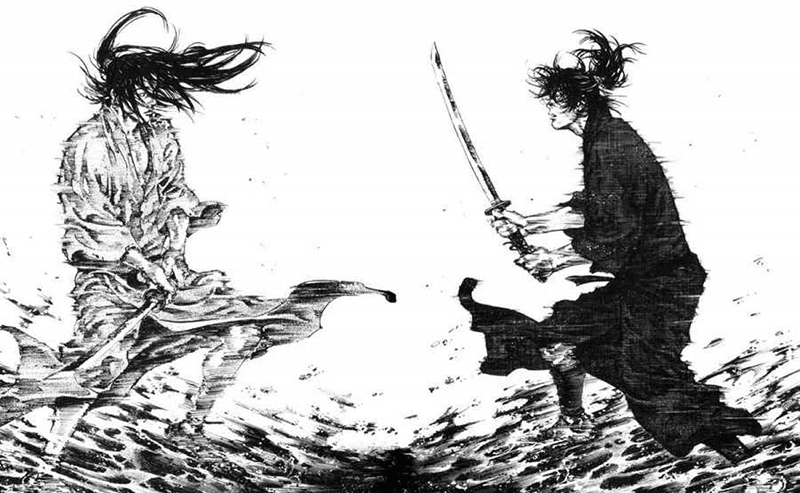
Musashi’s personal evolution forms the manga’s emotional core. He begins as a feral demon child who fights recklessly for glory, but over time becomes a reflective swordsman who questions the meaning of invincibility and the cost of violence. His development is mirrored in how his fighting style changes. It evolves from sheer brutal force to calculated precision and restraint. Watching this transformation unfold slowly across the manga’s many arcs is one of Vagabond’s greatest strengths.
Thematically, Vagabond is rich with dualities: life and death, mastery and humility, ambition and acceptance. It also captures the harsh, unromanticized realities of the era, but still finds moments of quiet beauty. Long, silent sequences show Musashi climbing a hill or practicing the sword at dawn. These interludes give the series a meditative rhythm that’s rare in action manga.
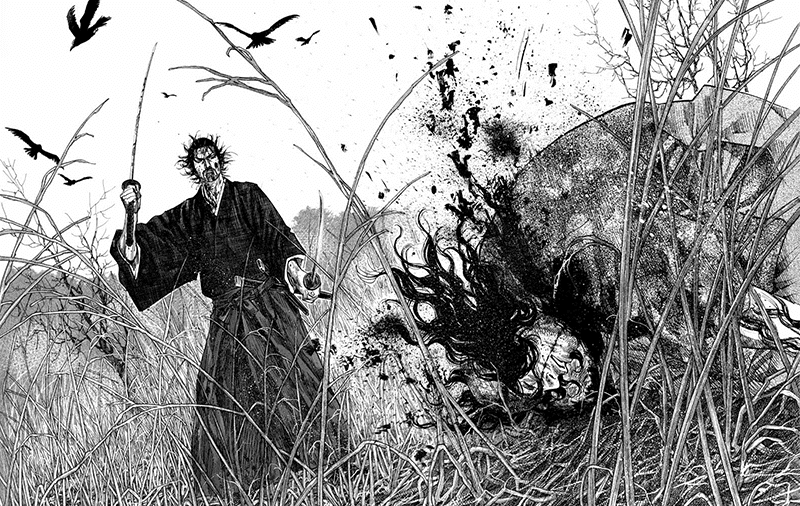
Vagabond’s artistic achievements extend beyond its fights and landscapes. Each character design is unique and rendered in realistic detail. You can see exhaustion on their faces, calluses on their hands, and fear in their eyes. Few manga achieve this level of authenticity. Even minor figures feel like real people rather than background props.
Still, the series is not without flaws. Some later arcs slow considerably, and the heavy philosophical passages, while often insightful, can occasionally drift into pretension. The manga also remains unfinished and, at this point, will probably never be completed. But even with these issues, Vagabond’s high points are so strong that they overshadow any shortcomings.
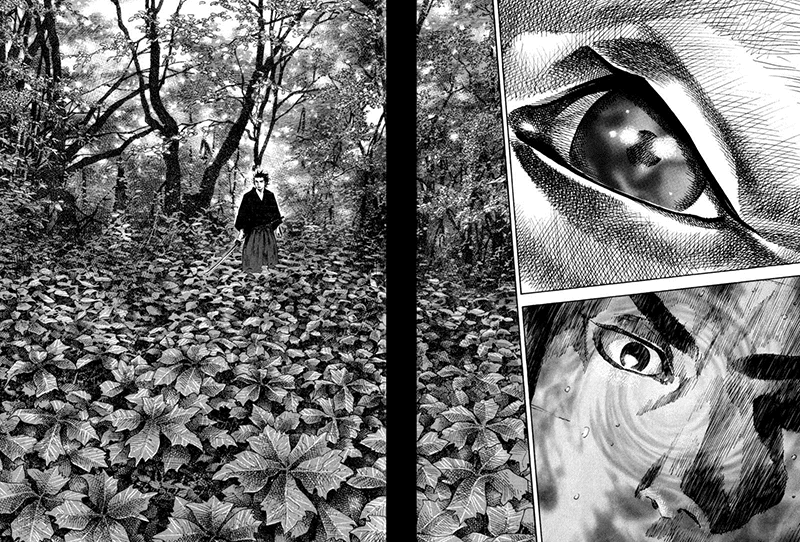
Whether showing the blood-slick aftermath of a battle or the silence of a moonlit forest, Vagabond blends staggering visuals with profound introspection. It’s a manga about warriors, yes, but also about human beings, their dreams, and their fears. Few works capture the tension between brutality and transcendence as vividly.
For readers who might shy away from samurai stories or historical manga, Vagabond transcends the genre. It’s both a thrilling martial arts epic and a deeply philosophical meditation on what it means to live and grow. In every sense, it’s at the very top of the manga medium, and one of the best seinen manga of all time.
Genres: Historical, Samurai, Action, Drama
Status: On Hiatus
5. Ultra Heaven
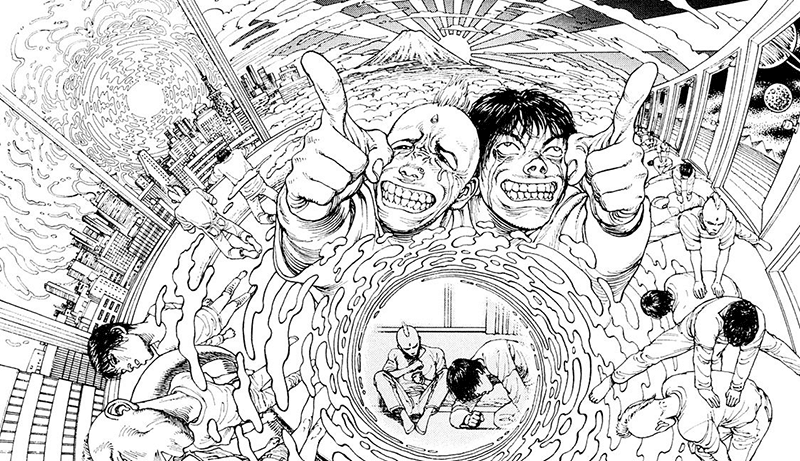
Ultra Heaven by Keiichi Koike is the most psychedelic manga I’ve ever read. It’s an experimental, boundary-breaking work that completely redefines what a manga can look and feel like. Even among the best seinen manga, Ultra Heaven is in a league of its own, a mind-altering trip rendered in ink.
Set in a grim futuristic city where emotions can be artificially manufactured, Ultra Heaven follows Kabu, a small-time dealer and hardcore user of synthetic feelings. In this society, with the right chemical, you can buy bliss, rage, serenity, even transcendence. Kabu’s life changes when a mysterious man introduces him to a new underground drug called Ultra Heaven, a substance so potent it promises an entirely new plane of experience. From that moment on, Kabu, as well as the reader, is launched into a vortex of hallucinations, meditation, and metaphysical freefall.
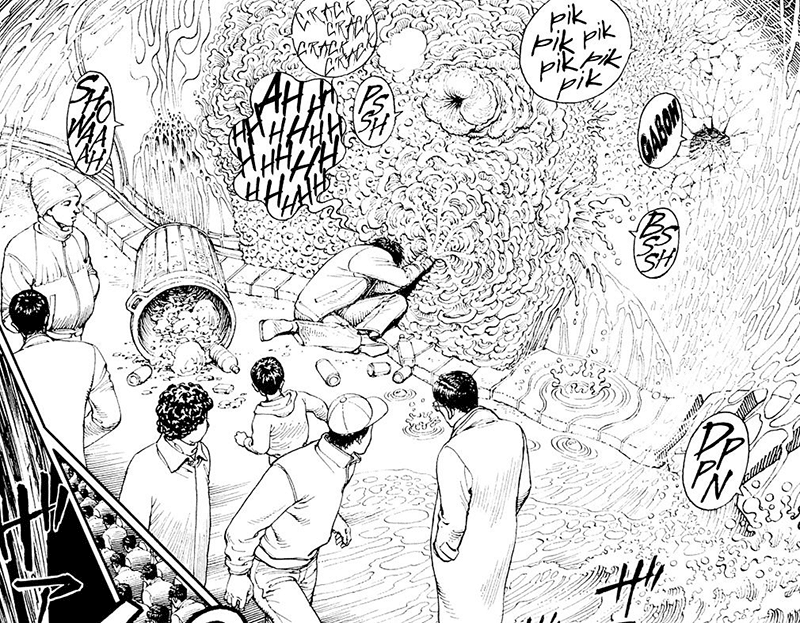
The premise of an addict chasing increasingly dangerous highs in a dystopia isn’t completely new. Aldous Huxley’s Brave New World even imagined a similar future full of synthetic pleasures. But Ultra Heaven’s execution and visual language elevate it far above its influences. Keiichi Koike’s art is extraordinary: gritty and realistic in the streets and characters, but kaleidoscopic and surreal inside Kabu’s mind. During drug trips or altered states, the manga abandons traditional structure. Frames warp, spiral, overlap; panels melt into each other. Pages become sprawling psychedelic collages, embodying Kabu’s fractured consciousness. Reading Ultra Heaven feels disorienting and hypnotic, like stepping into a graphic novel adaptation of a vivid hallucination or a trip gone wrong. No other manga deconstructs the medium’s visual conventions this way.
Ultra Heaven also explores themes of consciousness, perception, and transcendence. Early on, drugs are the vehicle for altered states, but later the focus shifts to meditation and mental discipline, suggesting multiple paths to the same cosmic destination. The story asks questions about reality and selfhood without ever spelling out the answers. This ambiguity is part of its power, but also part of its challenge.
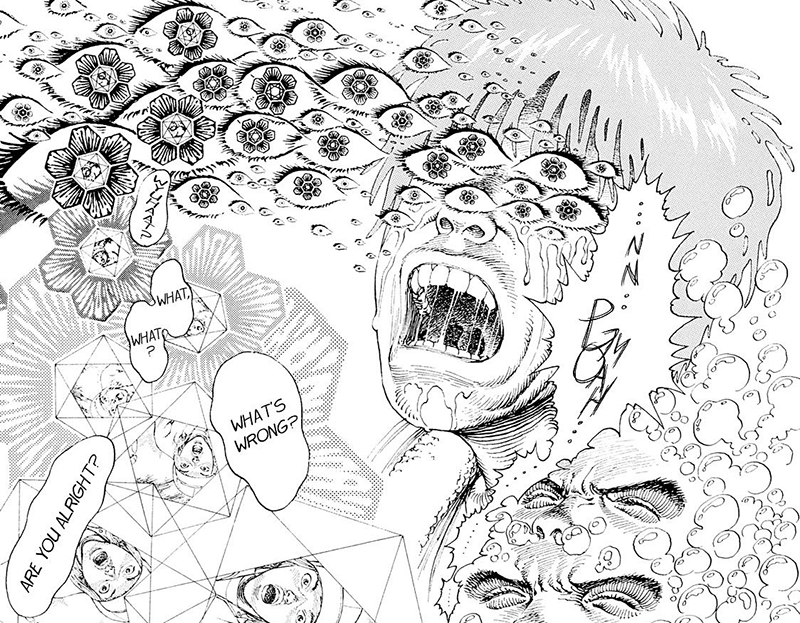
The cast is intentionally small, amplifying the manga’s claustrophobic intensity. Kabu is both protagonist and unreliable guide, an addict seeking escape but also unwittingly plunged deeper into his own psyche. His main companion, a neo-hippie technophile, experiments with alternate forms of enlightenment, providing a counterpoint to Kabu’s chemical path. Their interaction serves as an anchor point a4mid the narrative’s increasingly abstract shifts.
Still, Ultra Heaven has its flaws, or rather its quirks. It’s less of a traditional narrative than a fragmented series of experiences. With only three long chapters, it feels unfinished, and more like a vivid glimpse into another world than a complete story. Plot threads appear and evaporate, explanations are sparse, and the final chapter, which is focused almost entirely on meditation, leans fully into the abstract. This can make the manga feel overwhelming and bewildering, though it’s likely intentional. Koike seems less interested in telling a clean story; instead, he immerses the readers in an unrestrained sensory experiment.
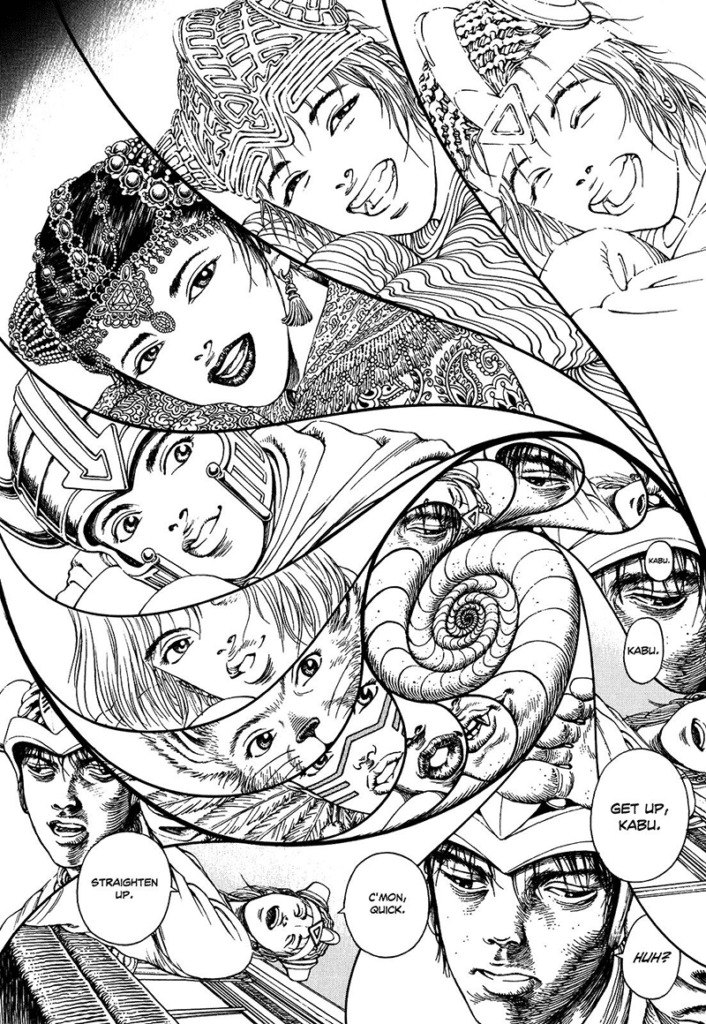
Yet, these very qualities make Ultra Heaven unforgettable. It’s not just about drugs; it’s about perception itself, and about how far a medium can bend and still be legible. In that sense, the manga mirrors its title drug: dangerous, dazzling, and transformative.
For anyone curious about psychedelic art, experimental storytelling, or the outer edges of manga as a form, Ultra Heaven is a must-read. Despite its brevity, it’s a visual and conceptual masterpiece, one of the greatest seinen manga ever created, and a cult classic still waiting to be discovered by more readers.
Genres: Psychological, Sci-Fi, Experimental
Status: Finished
4. Uzumaki
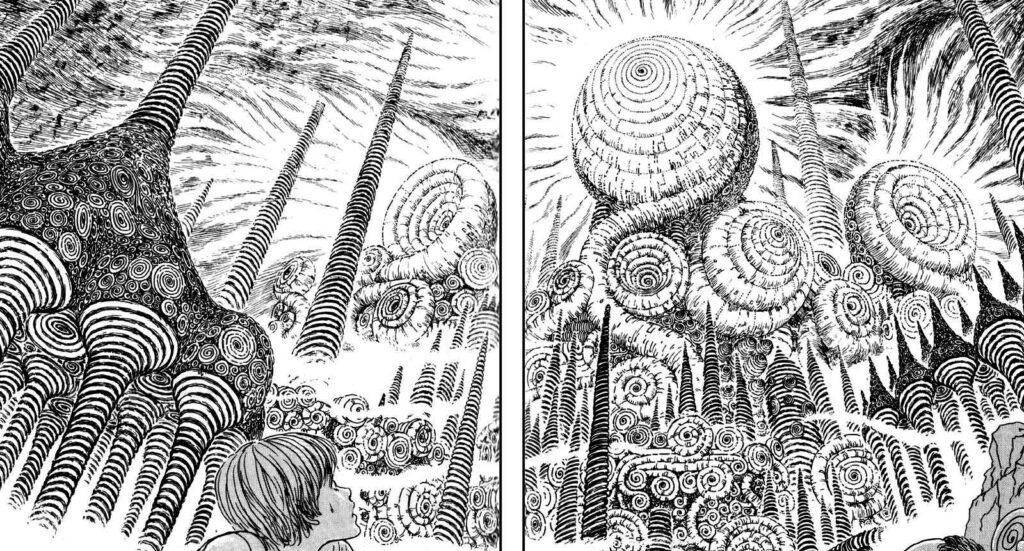
Uzumaki by Junji Ito is one of the most famous horror manga of all time. It’s a genre-defining masterpiece and without question one of the best seinen manga ever created. Few works are as uniquely unsettling, visually inventive, and conceptually strange as this three-volume epic.
The story takes place in Kurouzu-cho, a small coastal town slowly consumed by spirals. Our protagonists, Kirie Goshima and Shuuichi Saitou, act as the audience’s guides, stumbling from one freakish incident to another as the town’s spiral obsession escalates. The opening chapter sets the tone perfectly: Shuuichi’s father develops a mania for spirals that drives him to madness, culminating in one of the most iconic pages of Junji Ito’s career. From there, each chapter pushes the spiral motif into new, horrifying territory.
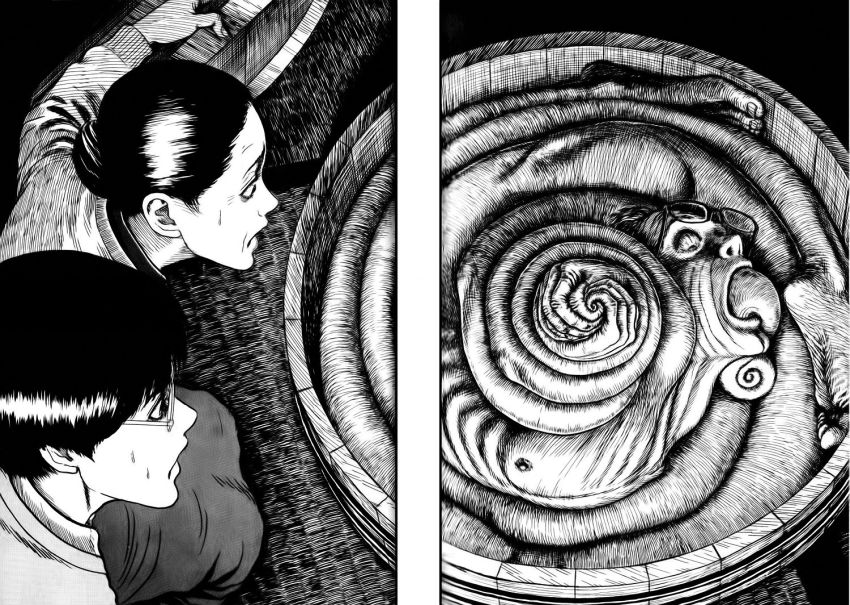
What elevates Uzumaki beyond other horror manga is its art and imagination. Ito’s creativity is boundless. Chapter after chapter, he reimagines how the spiral can infect bodies, landscapes, and minds. The inhabitants of Kurouzu-cho are stretched, coiled, and deformed in ways that are equal parts mesmerizing and grotesque.
Ito’s artwork reaches a high mark here. His distinct linework and eye for texture make every warped panel an experience. Faces are drawn with gloomy expressions and exaggerated terror in an old-school style that amplifies the surreal dread. Gore and body horror abound, yet it’s the surreal presentation, not just the violence, that leaves a lasting impression.

Another thing that sets Uzumaki apart is its premise. There’s no monster, no villain, not even a concrete antagonist. There is only the spiral, an omnipresent cosmic curse. Much of the series functions as a dark anthology; early chapters are episodic, each presenting a new spiral-themed nightmare. We meet doomed lovers, snail-like transformations, cursed pregnancies, and hypnotic hair.
It’s only in the third volume that Ito fully reveals the Lovecraftian scope of the spiral’s power and ties the vignettes together into an apocalyptic finale. This shift gives Uzumaki a sense of escalation, but it also exposes its weaknesses. Kirie, while an effective viewpoint character, is more of an observer than a protagonist, and her continued presence in town sometimes strains believability. The episodic format also makes it hard to invest in side characters. Many of them appear only to die within the same chapter, muting the emotional impact of their fate. And while the ending provides closure, it arguably explains too much. Ito’s horror always works best with ambiguity.
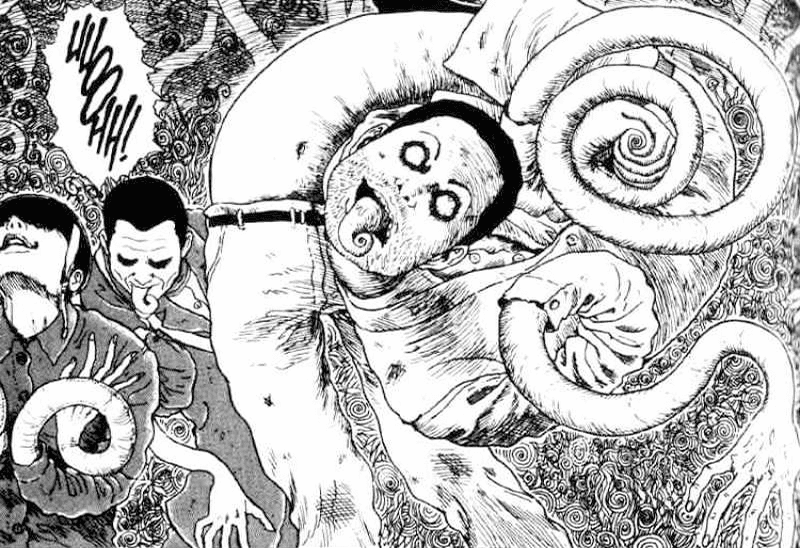
Yet none of these flaws diminishes Uzumaki’s power. Its creativity, art, and atmosphere make it one of the most essential horror manga ever published. Even decades later, it remains unmatched for sheer visual invention and cosmic dread.
If you’re interested in exploring more of Junji Ito’s terrifying imagination, check out my companion articles on the best Junji Ito Stories and Junji Books, where I rank and review his most unforgettable work.
For horror fans, Uzumaki is mandatory reading. For seinen fans, it’s a perfect example of how the medium can blend surreal imagination with serious craftsmanship. It’s nothing short of a masterpiece of spiraling terror.
Genres: Horror, Supernatural, Mystery, Cosmic Horror
Status: Finished
3. Blame!
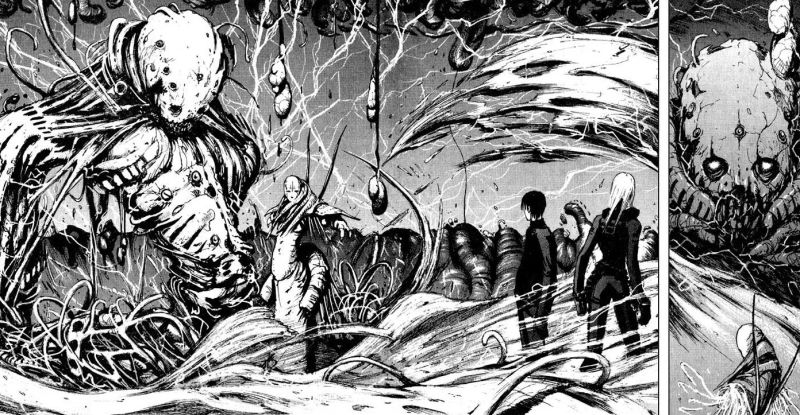
Blame! by Tsutomu Nihei is one of the best seinen manga ever created and one of my personal all-time favorites. It’s a science-fiction cyberpunk epic unlike anything else in the medium, blending breathtaking architecture, technological horror, and near-silent storytelling into a singular, overwhelming experience.
The story follows Killy, a stoic wanderer moving through the colossal labyrinth known only as The City. His mission: to locate a human with Net Terminal Genes. Such a person is capable of accessing the Netsphere, a control system that could halt both the city’s chaotic growth and the relentless extermination of humanity by the Safeguard. That’s the premise, but the power of Blame! lies far beyond plot summary.
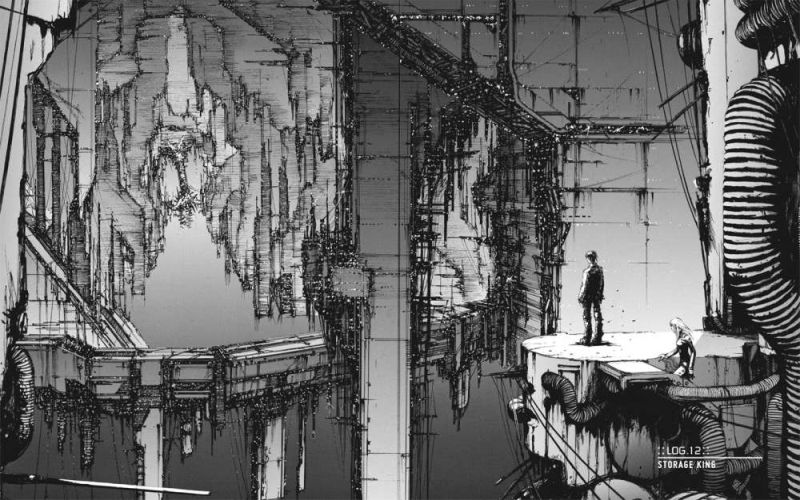
The worldbuilding and art are extraordinary. The City is a technological wasteland of unfathomable scale. It comprises ever-expanding megastructures of dizzying verticals, impossible bridges, and endless corridors. Nihei frequently renders Killy as a tiny silhouette swallowed by impossibly large structures, panels stretching across pages to show environments that dwarf comprehension. It’s awe-inspiring, disorienting, and immersive.
The inhabitants of The City are equally striking. Cyborgs, Builders, the Safeguard, and other biomechanical horrors stalk its corridors, each rendered with astonishing creativity and detail. Nihei’s designs fuse flesh, steel, and nightmare in ways that feel truly alien and disturbingly plausible. These creatures alone could sustain an art book, yet here they’re seamlessly woven into a haunting, hostile world.
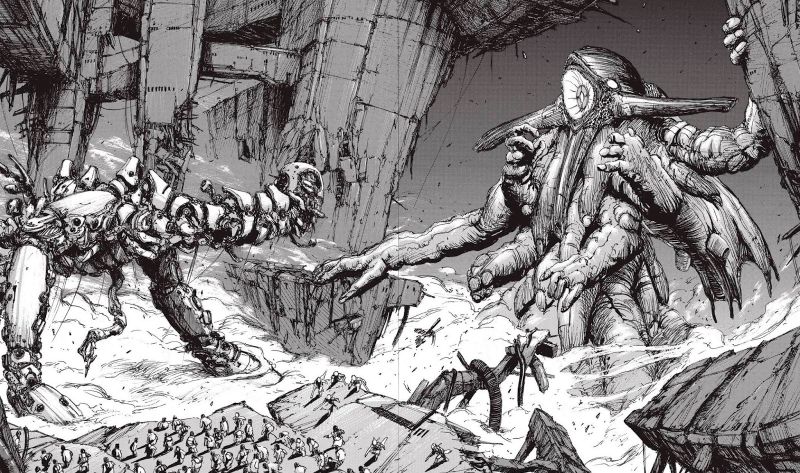
Blame!’s storytelling diverges from typical manga. Dialogue is sparse. Exposition is minimal. Instead, Nihei tells his story visually through landscapes, implied histories, and sudden eruptions of violence. Each arc plays almost like a silent film punctuated by moments of staggering action. This minimalism reinforces Killy’s lonely, determined presence and the enormity of his journey.
That’s not to say Blame! is without characters. Cibo, Killy’s companion, adds complexity and perspective, and each arc introduces new human enclaves, factions, and antagonists.
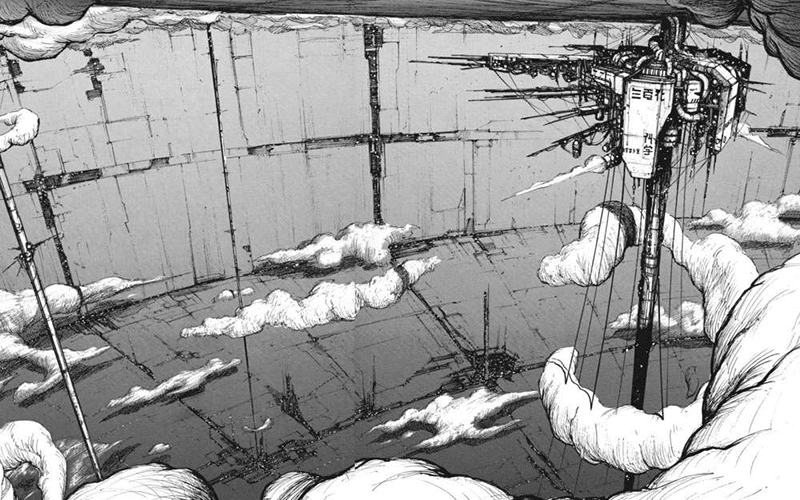
The action sequences are breathtaking, contrasting with the quiet exploration that frames them. Killy’s Gravitational Beam Emitter is infamous. It’s a weapon of mass annihilation that turns battles into spectacles of destruction. Explosions rip through megastructures, and enemies alike.
Blame!’s biggest weakness lies in its narrative opacity. The episodic structure, combined with Nihei’s aversion to exposition, can leave readers lost. Each arc explores a new pocket of humanity or technology. Only the final chapters fully confront Killy’s original quest, but the answers we get feel cryptic, with many of the mysteries unresolved.
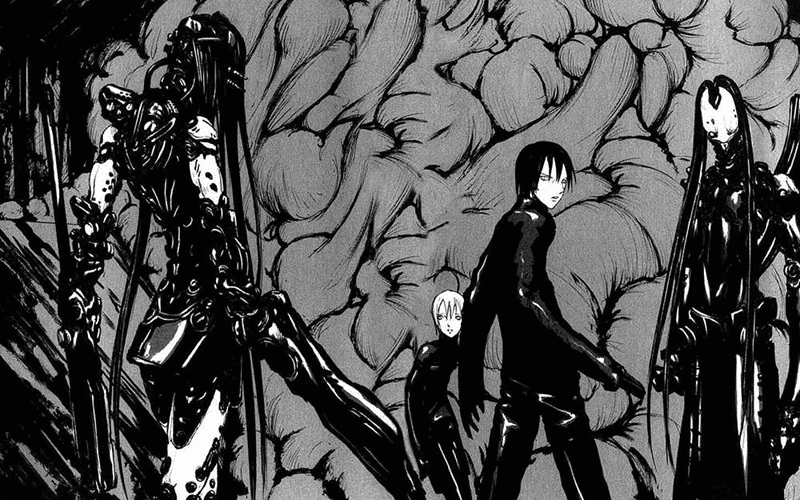
Yet these shortcomings never diminish the manga’s power as a visual and atmospheric masterpiece. Blame! is less a traditional story than a visual journey through colossal, mind-boggling ruins, showcasing isolation and the fragility of humanity. In terms of architecture, technological horror, and sheer imagination, there’s almost nothing that compares.
If you’re a fan of science-fiction, cyberpunk, or manga as a visual medium, Blame! is a must-read. It’s a staggering achievement in worldbuilding and one of the greatest seinen manga ever drawn.
Genres: Horror, Sci-Fi, Cyberpunk
Status: Finished
2. Berserk
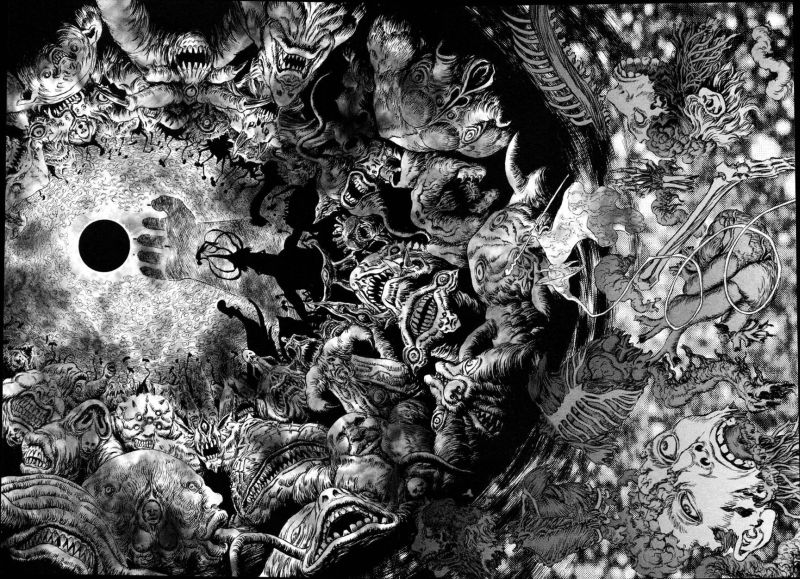
Berserk by Kentaro Miura isn’t just a manga; it’s a landmark of the medium. Frequently hailed as the single greatest seinen manga ever created, Berserk blends dark fantasy, visceral action, and some of the medium’s most complex characters with artwork so detailed it borders on the obsessive. It is without exaggeration one of the most important and influential manga of all time.
At its core, Berserk tells the story of Guts, the Black Swordsman, a lone warrior who wields an impossibly large blade and cuts through humans and monsters alike. His quest centers on revenge and on striking down Griffith, the once charismatic and ambitious leader of the Band of the Hawk, whose betrayal reshaped Guts’ life and turned his world into a waking nightmare.
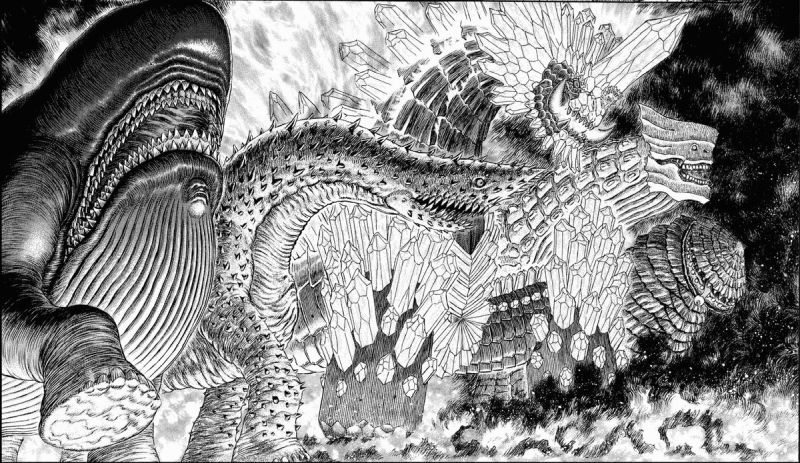
Berserk begins with the Black Swordsman arc, a brutal, almost Grindhouse opening filled with sadistic monsters known as apostles, and a Guts so uncaring he appears almost a villain himself. But it’s the Golden Age arc that elevates the series into myth. Here, Miura slows down and builds an epic about ambition, friendship, and betrayal. Guts transforms from an archetypal antihero into one of the deepest, most human protagonists in manga, while Griffith emerges as one of the most chilling and nuanced antagonists ever written. Their relationship, from its outset to its catastrophic severing, forms the heart of Berserk.
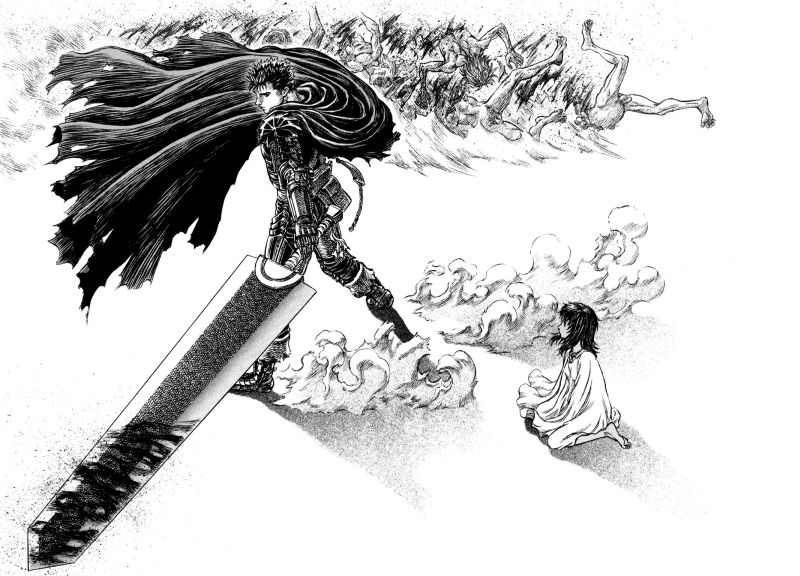
Berserk’s duality is one of its most defining symbols. Guts is dressed in all black, and embodies rage and the human will for survival; Griffith, on the other hand, appears in all white, and is the embodiment of ruthless ambition and transcendence. The interplay between these two figures alone would make Berserk worth reading, but Miura expands far beyond that, weaving a dark medieval world of foreign invasions, religious fanaticism, and eldritch creatures. As the story grows grander, it also grows darker, unflinching in its depictions of war crimes, sexual violence, and human depravity.
Yet even in this darkness, Miura finds moments of tenderness. Guts‘ bond with Caska, his slow movement from rage to purpose, and the humanity of side characters all balance the nightmare. This emotional weight grounds the series and keeps it from collapsing under its own brutality.
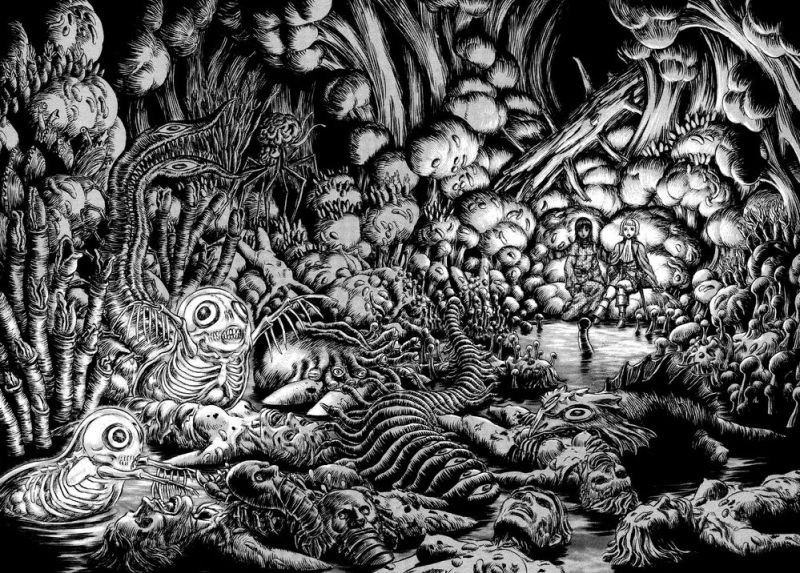
And then there’s the art. Berserk is, without hyperbole, one of the most beautiful manga ever drawn. From vast medieval cityscapes to intricate suits of armor and the grotesque baroque design of the apostles, Miura’s pages are a sight to behold. Every battle is a spectacle of weight and emotion, and every monster is a unique horror rendered in stunning detail. Few manga, and even graphic novels, approach this level of visual ambition.
Berserk’s influence is impossible to overstate. Dark Souls, Elden Ring, and countless other dark fantasy works owe their tone to Miura’s panels. Yet despite all its strengths, Berserk has always faced two challenges. The first is pacing: the earliest chapters are far rougher than what follows, and later arcs occasionally slow as Miura expands the world. The second is the release schedule: as Berserk’s art became more detailed, its publication slowed to a crawl.
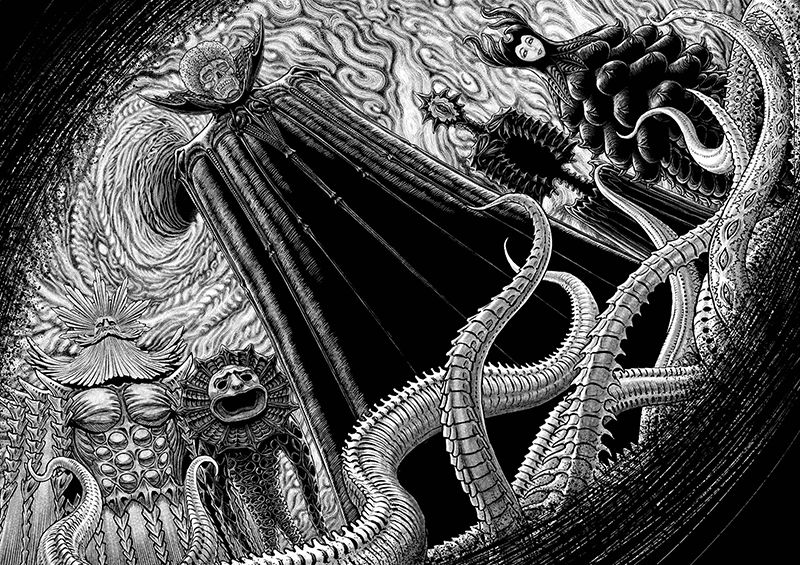
And then, in 2021, Kentaro Miura tragically passed away. It was a devastating loss to the manga world. But Miura’s close friend Kouji Mori, who knows the direction of the story and was entrusted with Mirua’s plans, decided to continue Berserk alongside Miura’s assistants. It’s a testament to their friendship and to Miura’s legacy, though naturally readers wonder how much of Miura’s true vision will ever be realized.
Despite these uncertainties, Berserk remains a monumental achievement. It begins as a story of revenge, but evolves into an exploration of trauma, ambition, destiny, and what it means to live and fight in a cruel world. Few works are this visceral and profound at once.
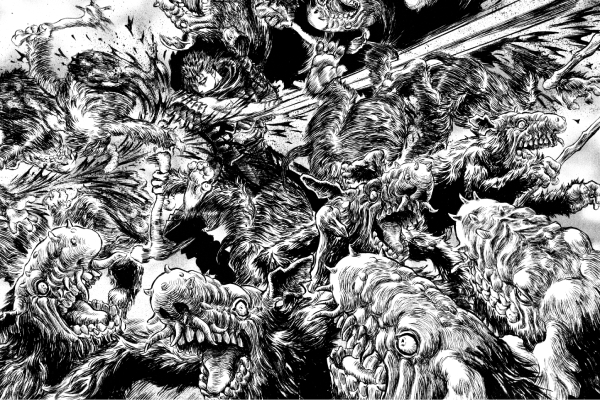
If you’re interested in dark fantasy, psychological depth, or simply the highest tier of manga artistry, you owe it to yourself to read Berserk. It’s as good as manga gets.
Genres: Horror, Dark Fantasy, Action, Tragedy, Psychological
Status: Ongoing (continued by Kouji Mori after Kentaro Miura’s death)
1. Blade of the Immortal
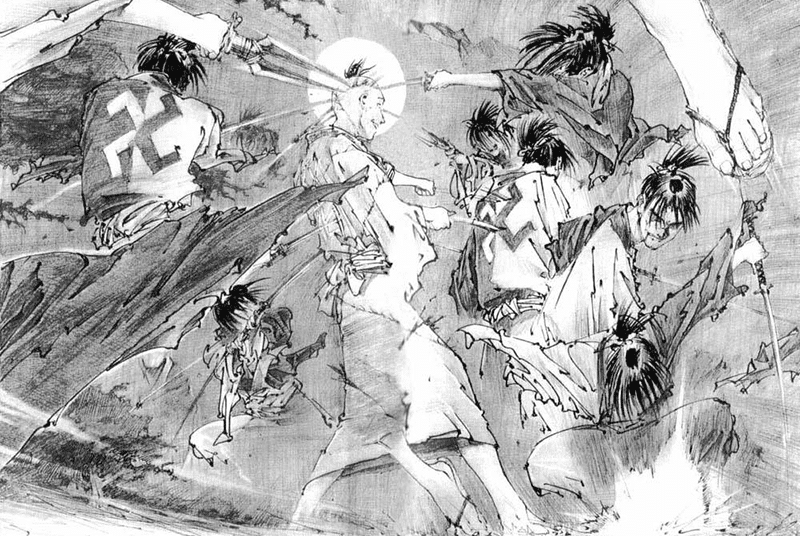
Blade of the Immortal by Hiroaki Samura is, without a doubt, my favorite manga, and in my opinion, the single best seinen manga of all time. It’s a revenge saga disguised as a samurai epic, yet it rarely dwells on honor or Bushido. Instead, it’s raw, gritty, and deeply human.
The story follows Manji, the infamous Hundred Men Killer. To punish him for his crimes, an 800-year-old nun named Yaobikuni placed sacred bloodworms in his body, making him immortal. To free himself from this curse, Manji vows to kill 1000 evil men. His path intertwines with Rin Asano, a sixteen-year-old girl seeking vengeance against Kagehisa Anotsu, the charismatic leader of the Itto-ryu sword school who slaughtered her family. Manji becomes her reluctant bodyguard, and they embark on a journey of revenge.
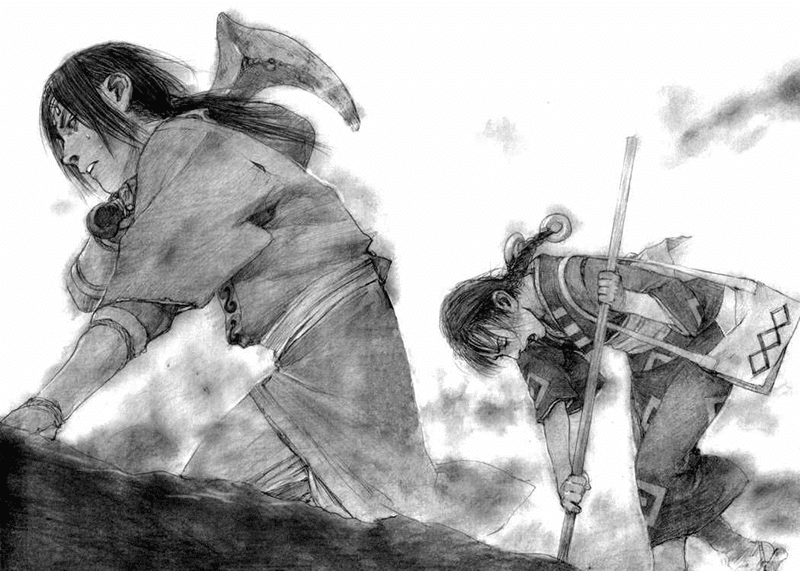
At first glance, Blade of the Immortal sounds simple, but its narrative steadily deepens as new factions, ideologies, and rivalries emerge. What truly cements it as one of the best seinen manga ever made is its characters. Manji and Rin both grow enormously over the course of the story. Anotsu Kagehisa, the ostensible villain, is one of the most compelling figures in the medium, and side characters like Taito Magatsu, Makie Otono-Tachibana, Hyakurin, and the infamous Shira are equally unforgettable. Samura gives everyone a backstory, motivation, and personal philosophy. Often, the side-characters are so fascinating you find yourself more invested in them than the leads.
This lack of clear morality is the manga’s greatest strength. In Blade of the Immortal, good and evil are never black and white. Everyone has their own reasons to fight. Even Rin and Manji, while protagonists, are far from spotless. Only a few figures, such as Shira, stand out as unambiguous monsters.
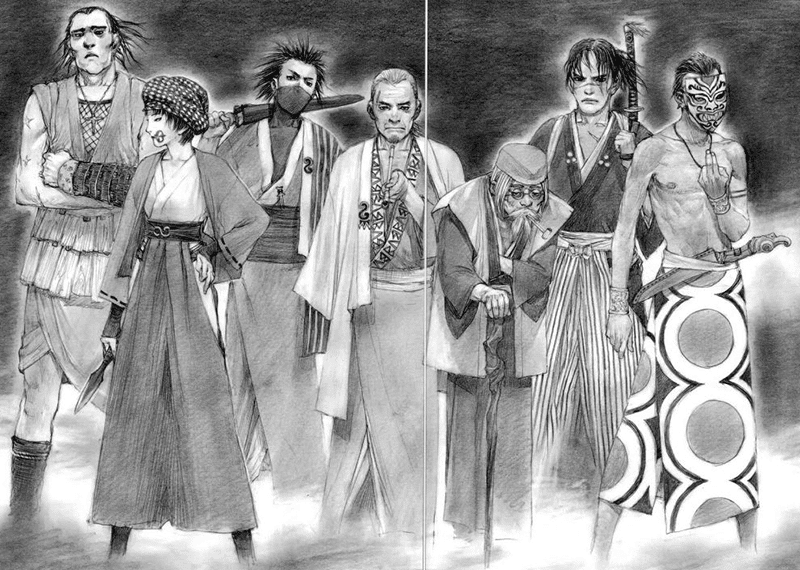
Another standout is Samura’s portrayal of women. Unlike many historical or action manga, female characters aren’t sidelined. Makie and Hyakurin especially stand out as formidable warriors with their own arcs and agency. This balance adds depth and unpredictability to every encounter.
Stylistically, Blade of the Immortal also excels. Though set in historical Japan, the characters don’t speak in stiff period language. Many curse and act like street punks or gangsters, giving the series a modern, almost punk energy that undercuts traditional samurai tropes.
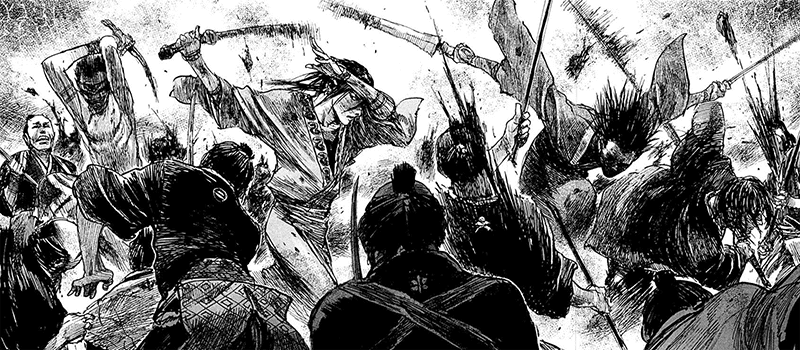
The art is another highlight. Samura’s style is sketchy yet fluid, at times delicate and at times explosively detailed. Every character looks distinct. The environments, from temples in city streets to forests and battlefields, are rendered in lush, gritty detail.
The action scenes are among the best ever drawn. Sword fights are savage and messy. Limbs are severed, blood gushes, and yet the violence never feels gratuitous for its own sake. Instead, it feels like an honest portrayal of life-and death combat. Manji’s immortality doesn’t undercut the stakes either; it merely levels the playing field enough for him to survive his encounters with the Itto-ryu.
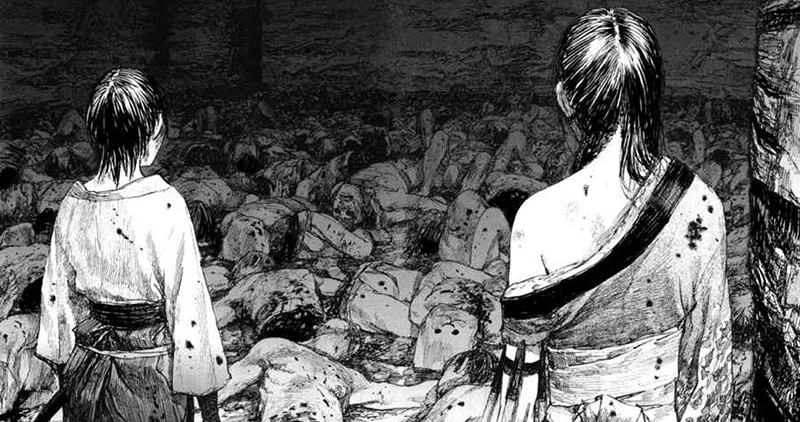
Like many great manga, Blade of the Immortal isn’t without flaws. It begins slowly, with its earliest chapters the weakest, but after the first few fights and the introduction of more characters, it becomes a near-flawless ride until the end. The prison arc also feels somewhat detached from the central revenge plot and drags compared to the tighter storylines around it, though it remains compelling in isolation. And while the series’ violence is usually purposeful, some scenes, particularly Shira’s sadistic acts, especially against women, can feel almost glorified. By the final arc, however, every element reaches its peak.
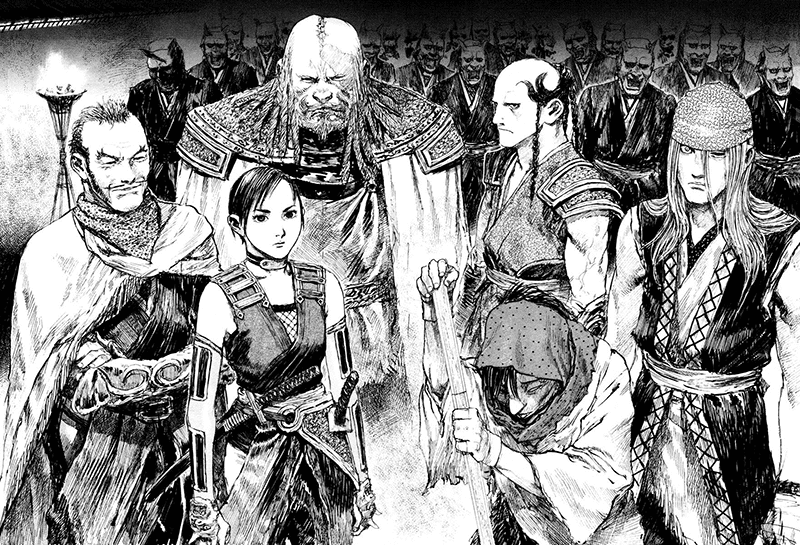
More than just an average revenge tale, Blade of the Immortal is about perseverance, consequences, and the gray space between justice and vengeance. It’s an intensely character-driven story that never compromises on its vision.
For its unforgettable cast, its brutal and beautiful fights, its punk-samurai attitude, and its sheer artistry, Blade of the Immortal isn’t just one of the best seinen manga ever made; it’s a masterpiece. Anyone interested in manga, whether they care about samurai stories, should read it.
Genres: Historical, Action, Revenge, Drama
Status: Finished
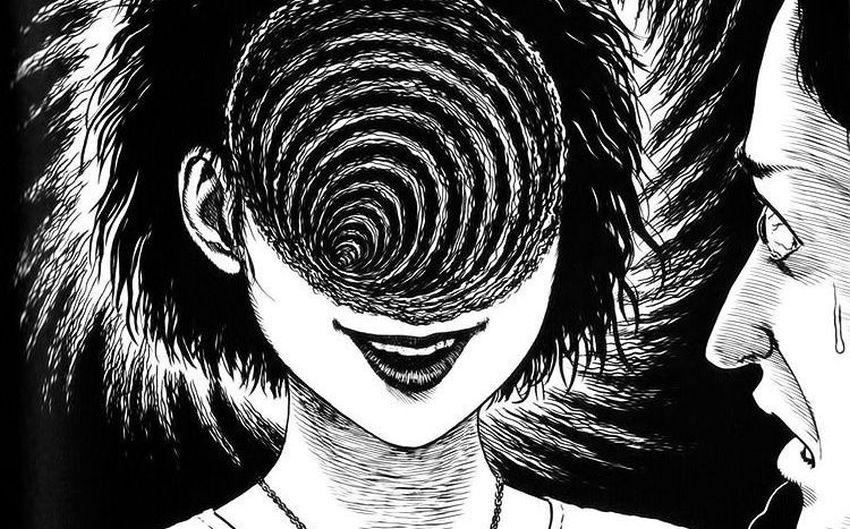
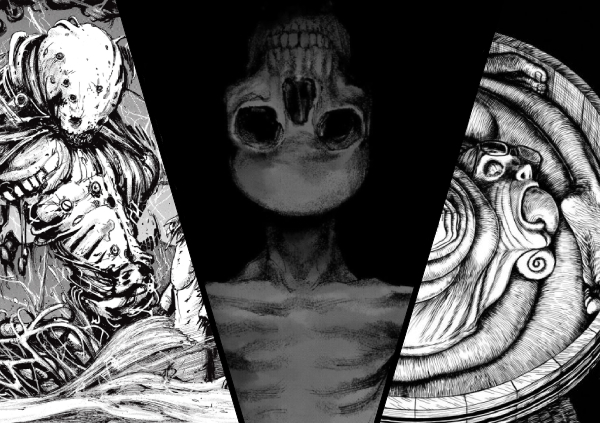
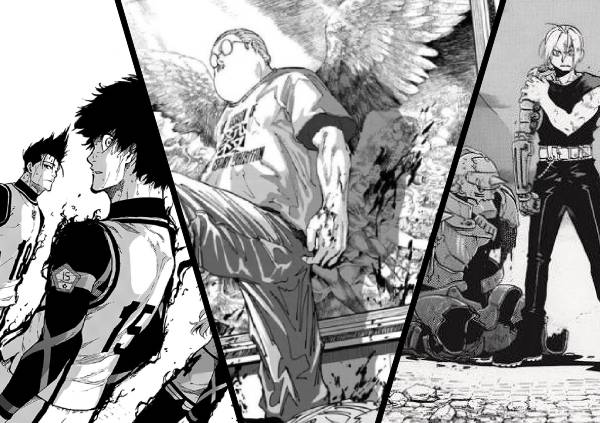






Great list! I especially love how you included lesser-known gems alongside the classics. I can’t wait to dive into some of the titles that were unfamiliar to me. Thanks for the recommendations!